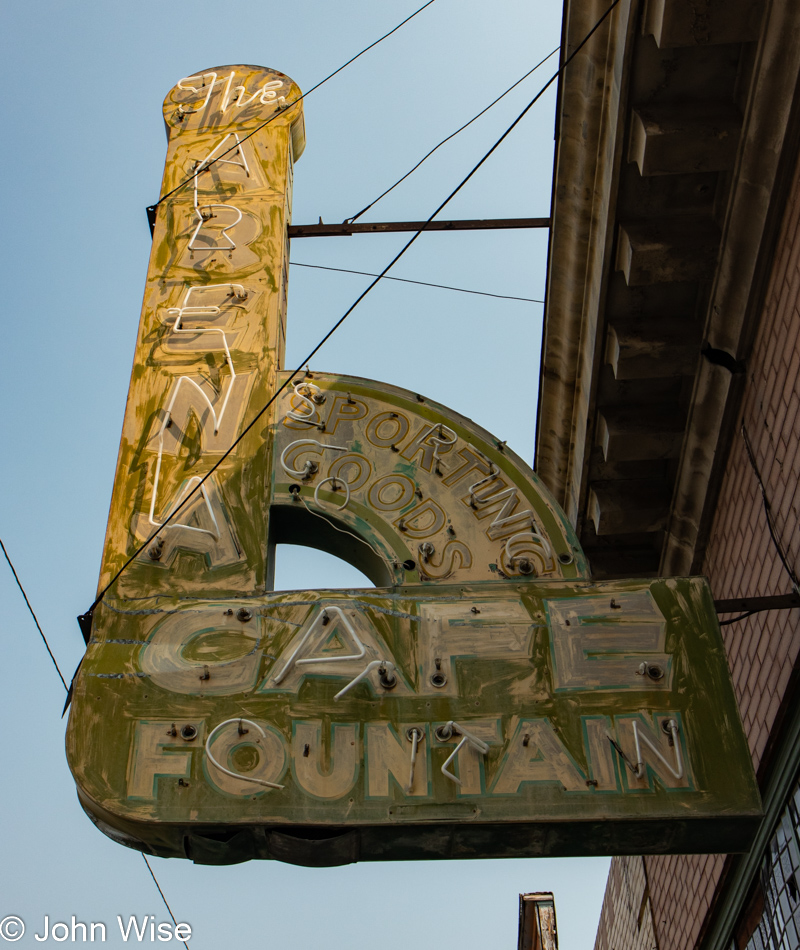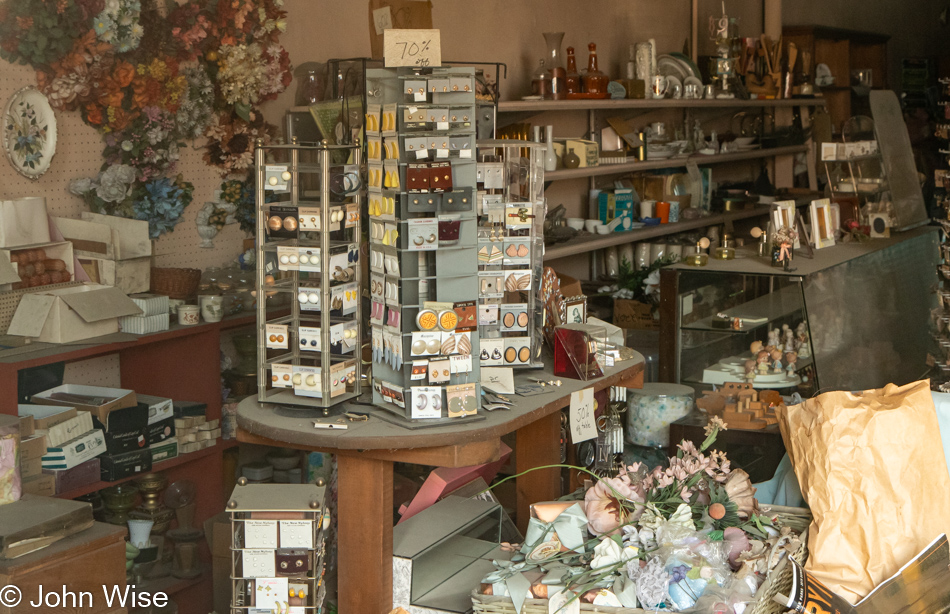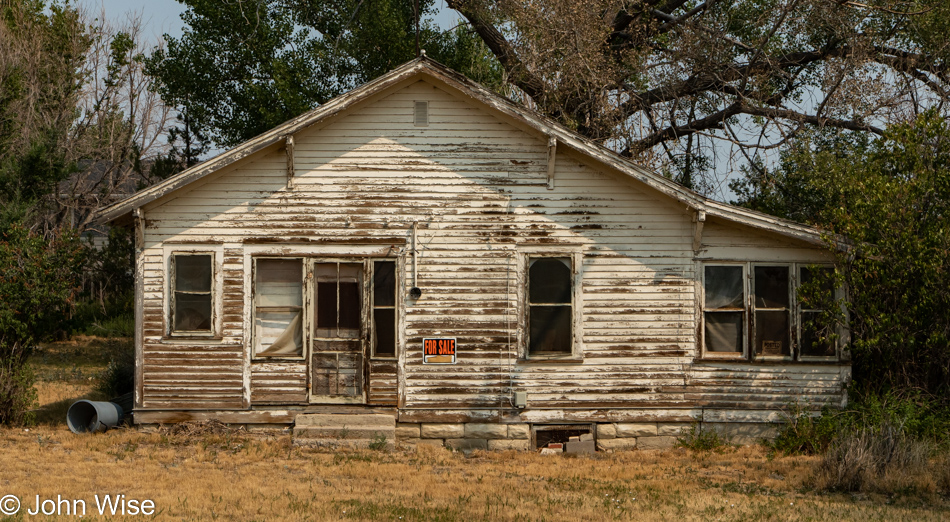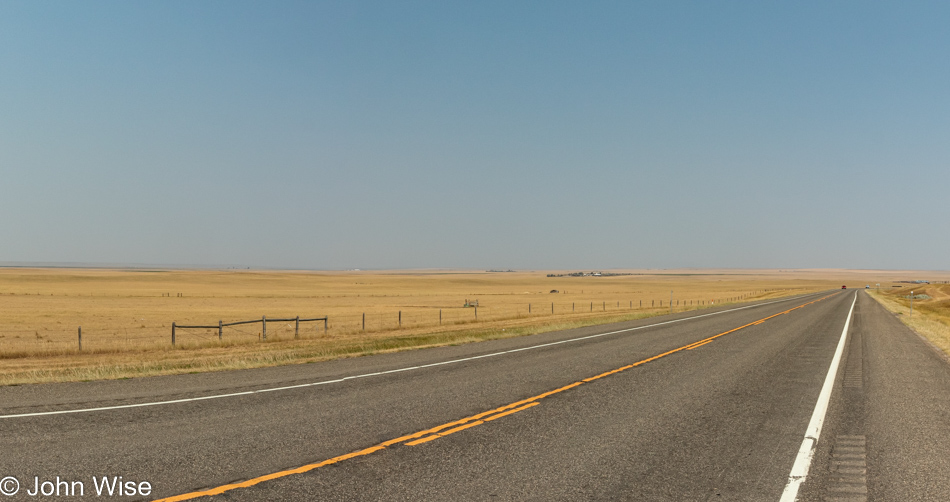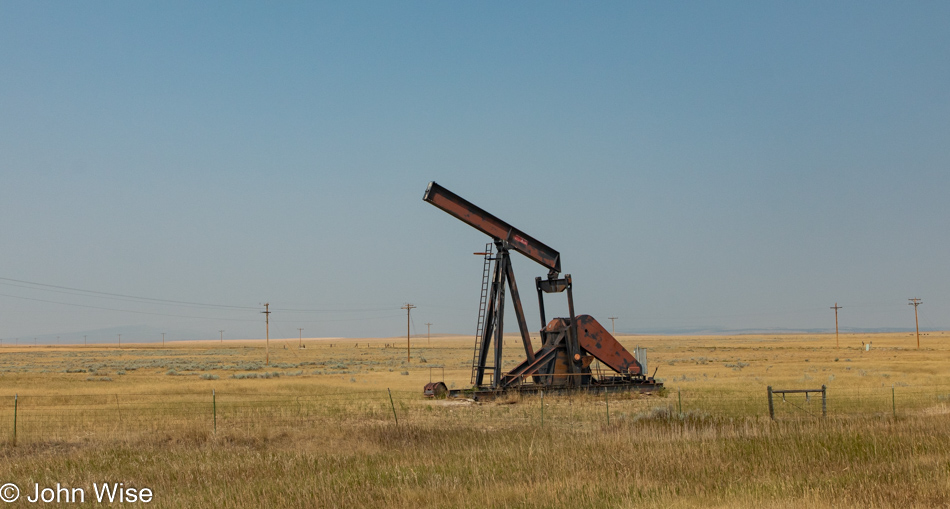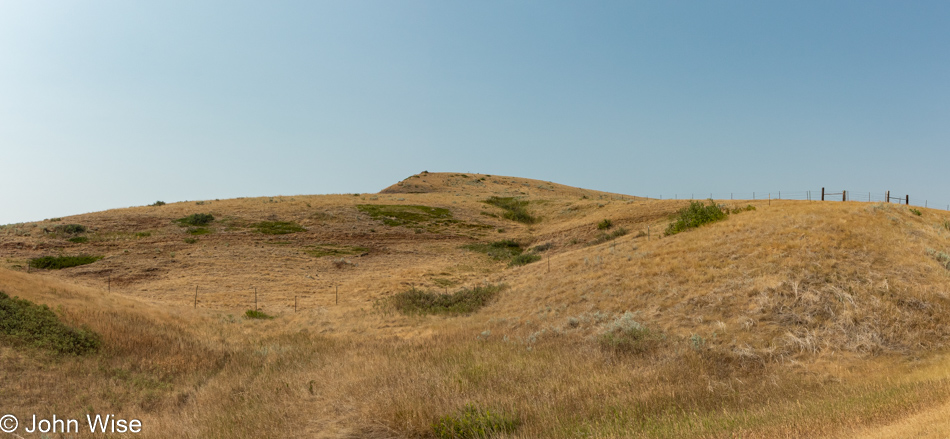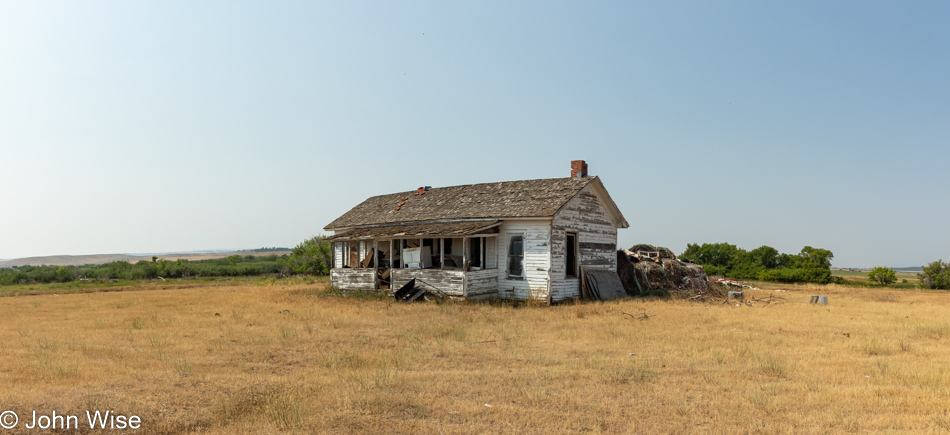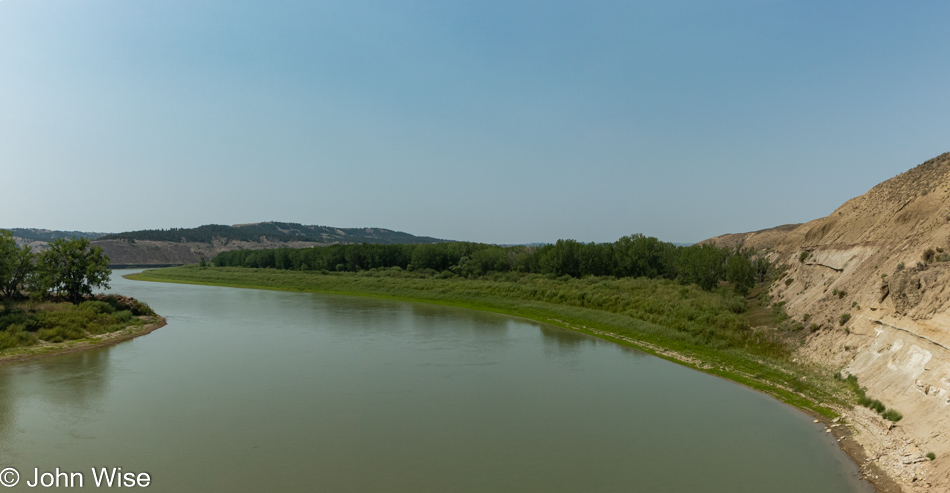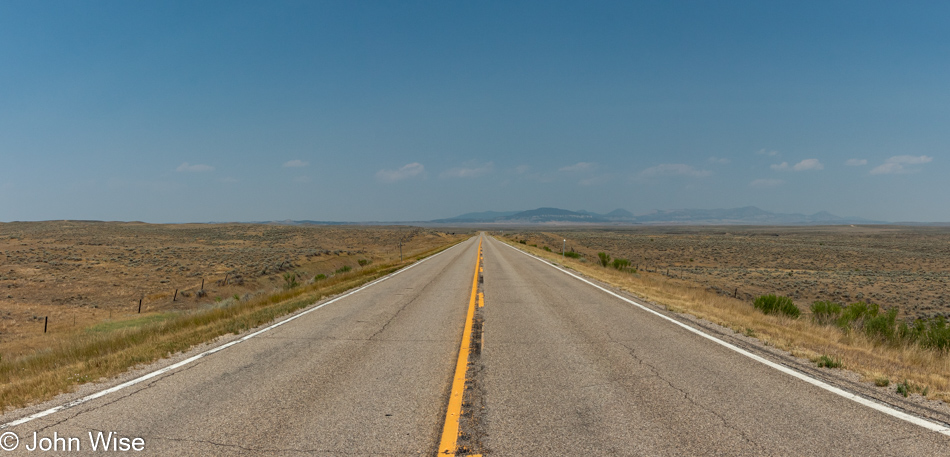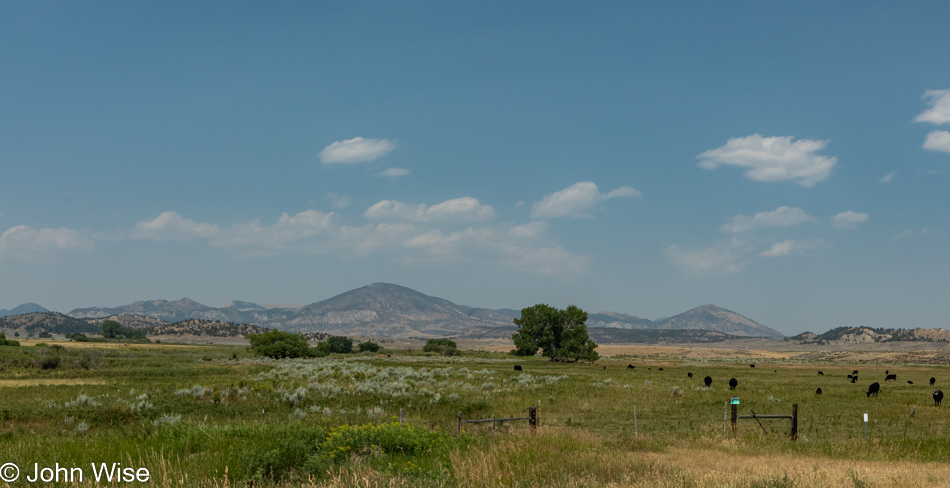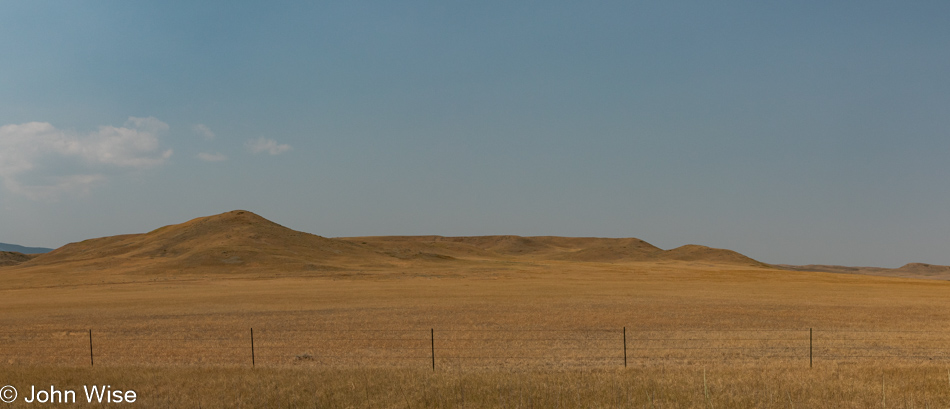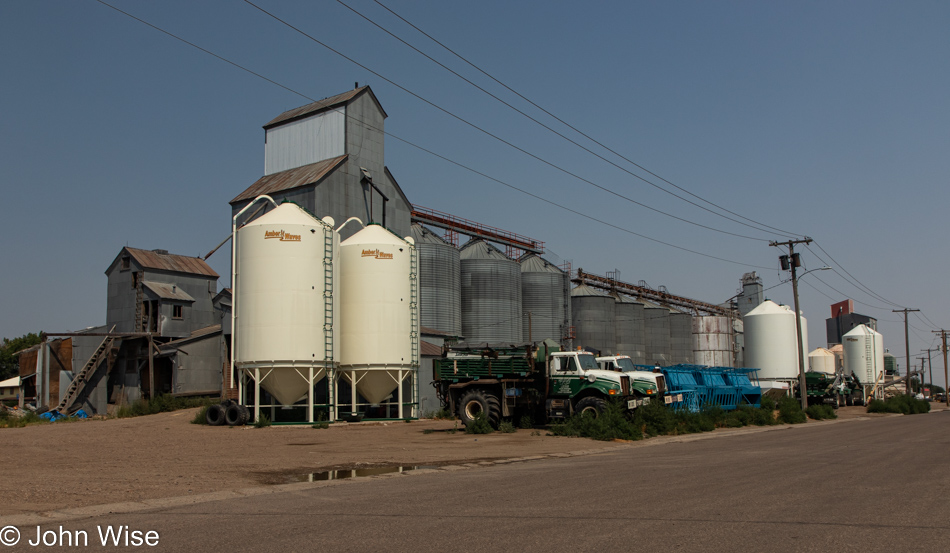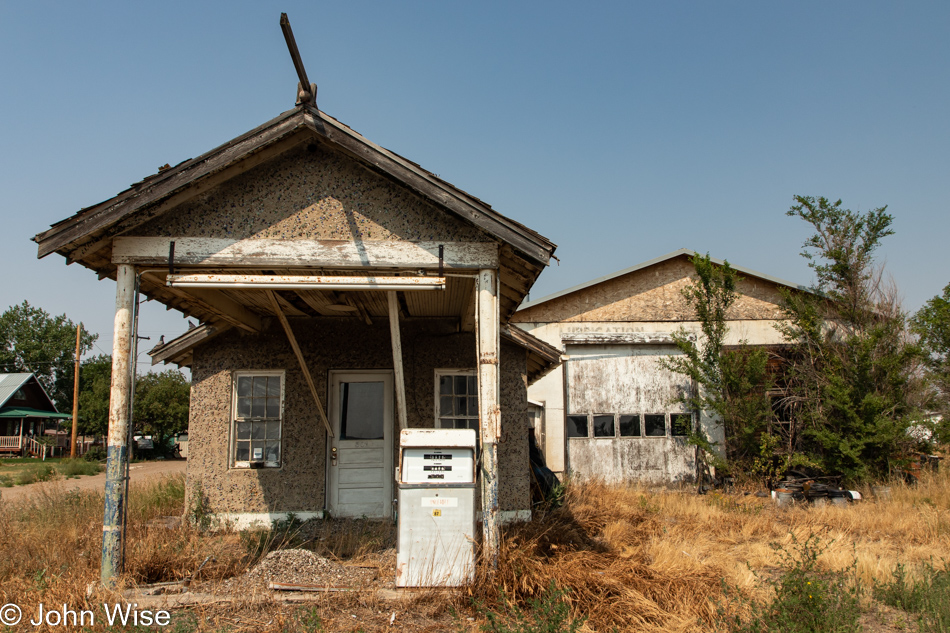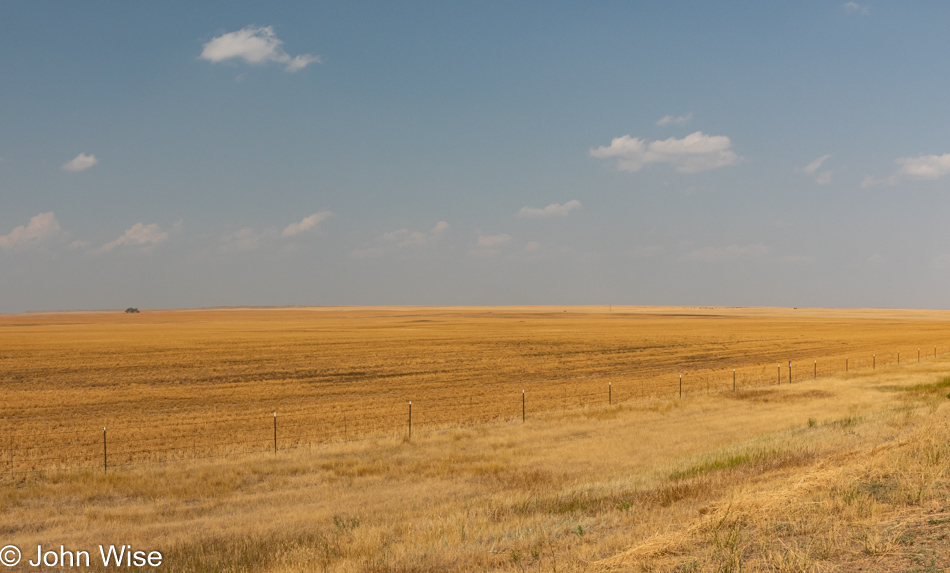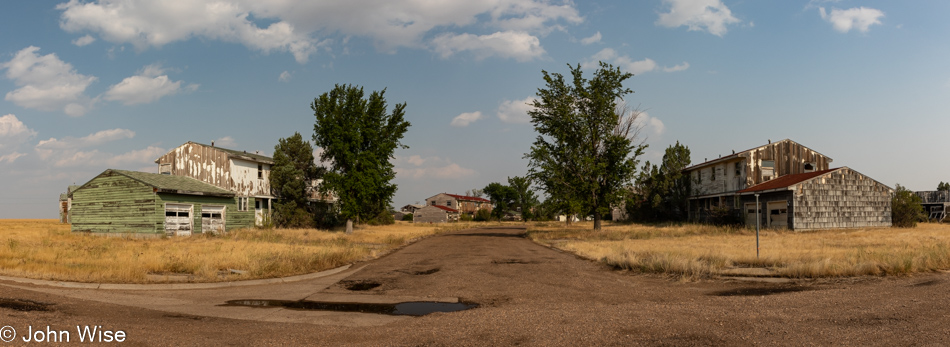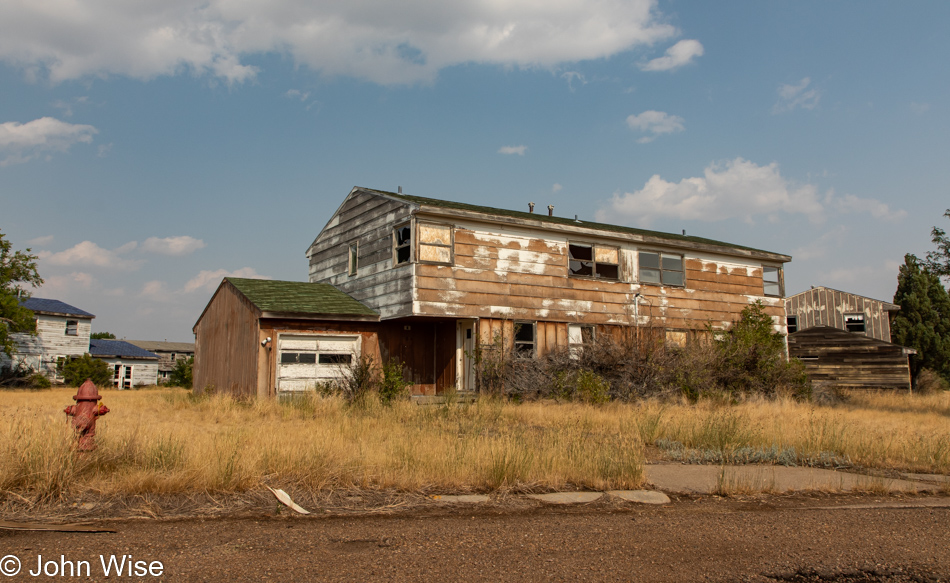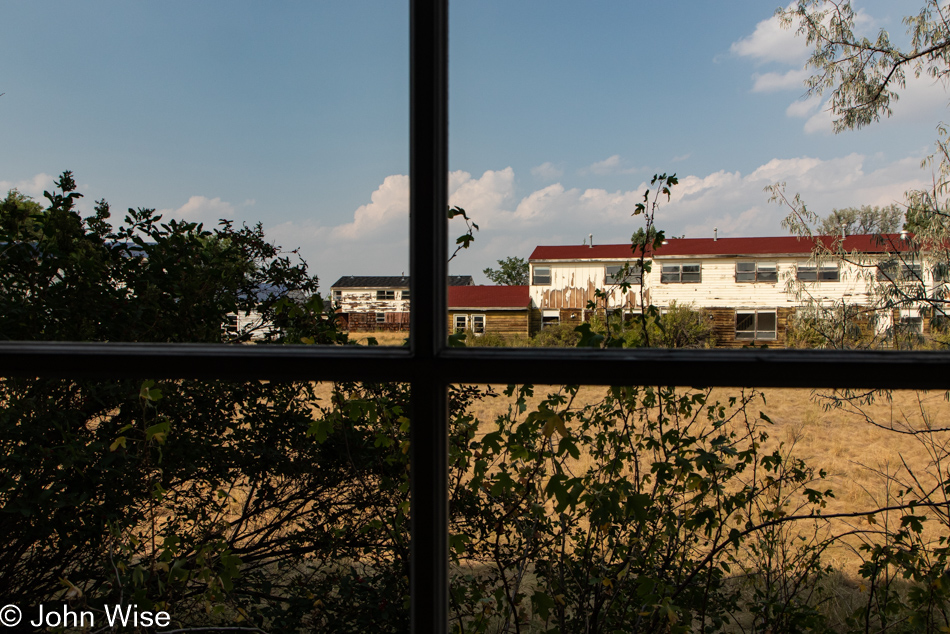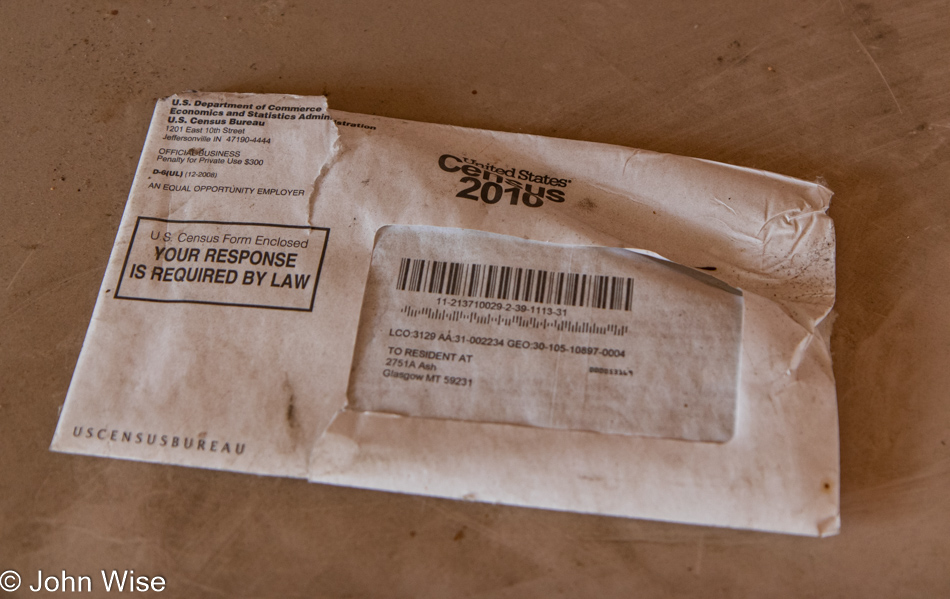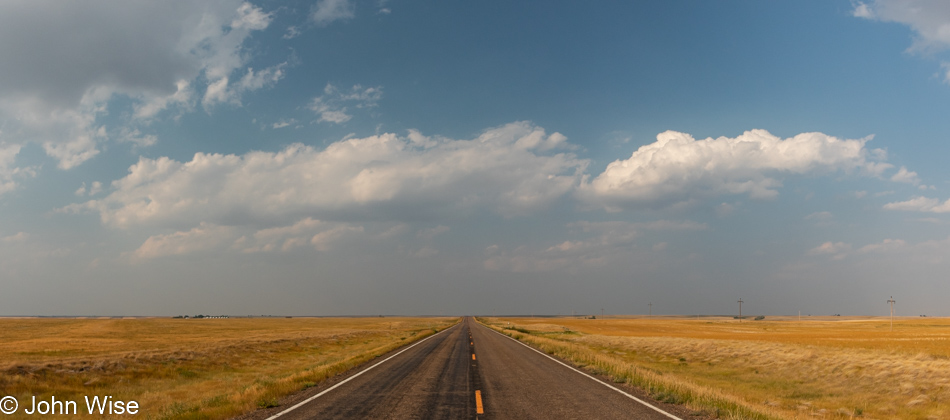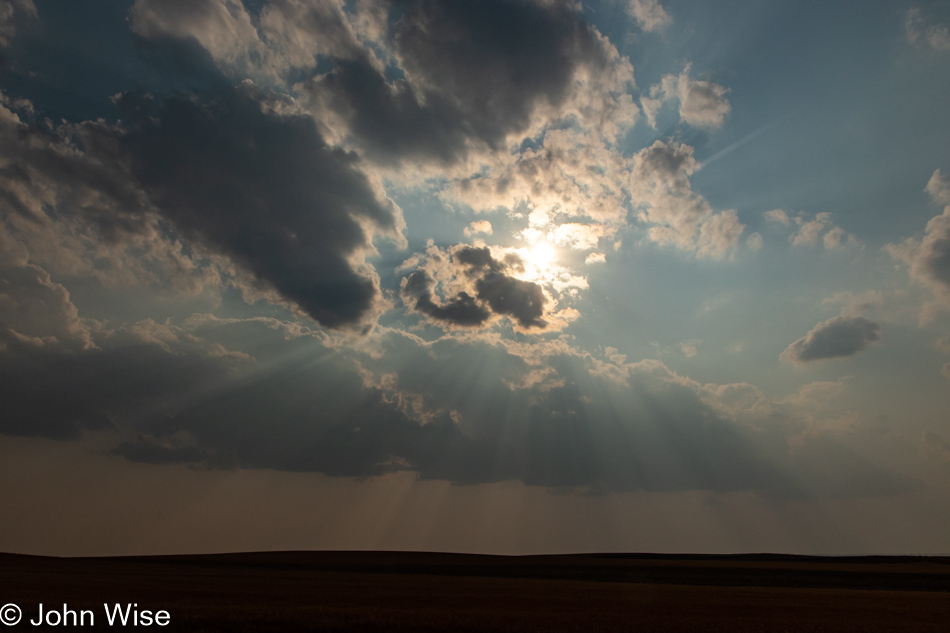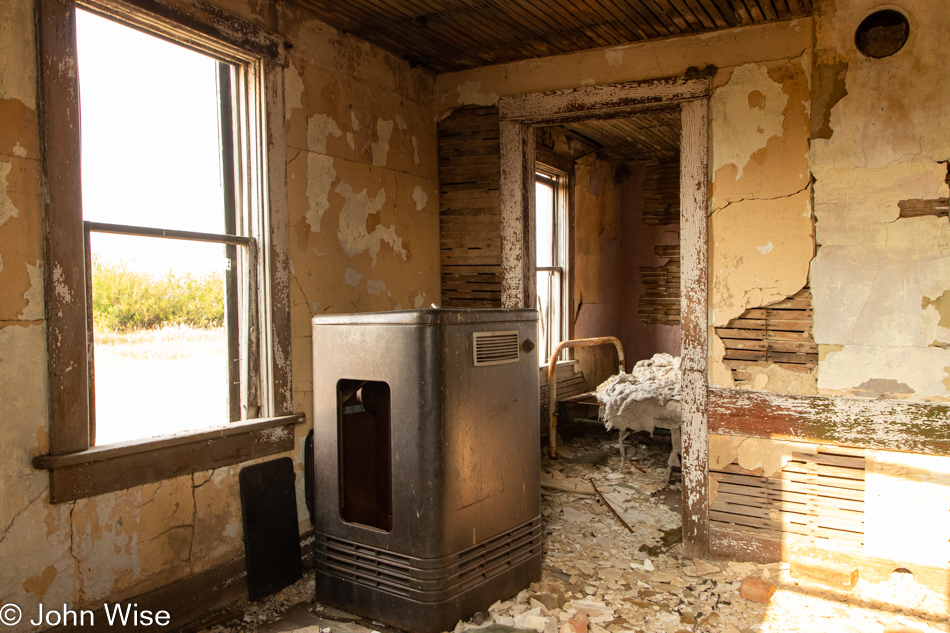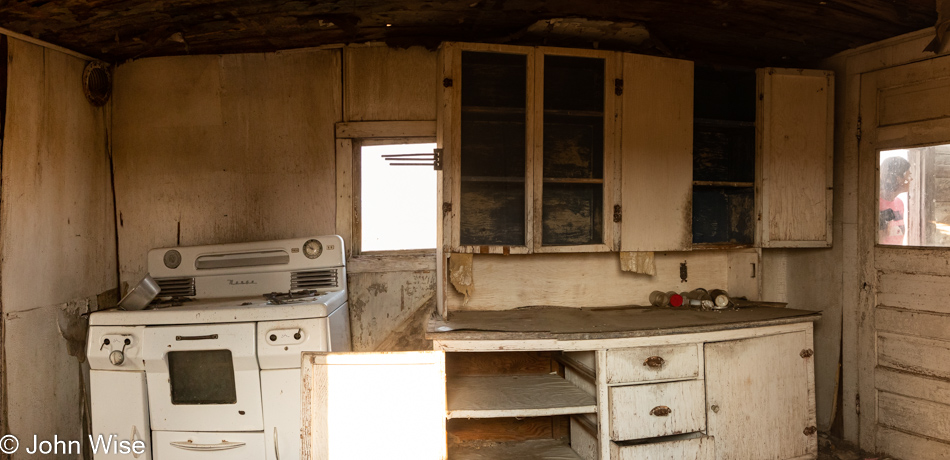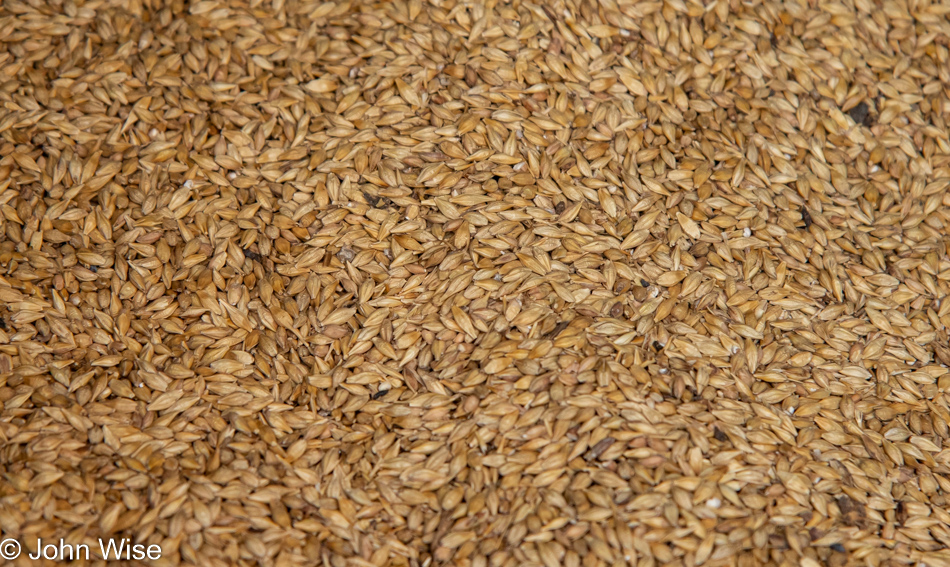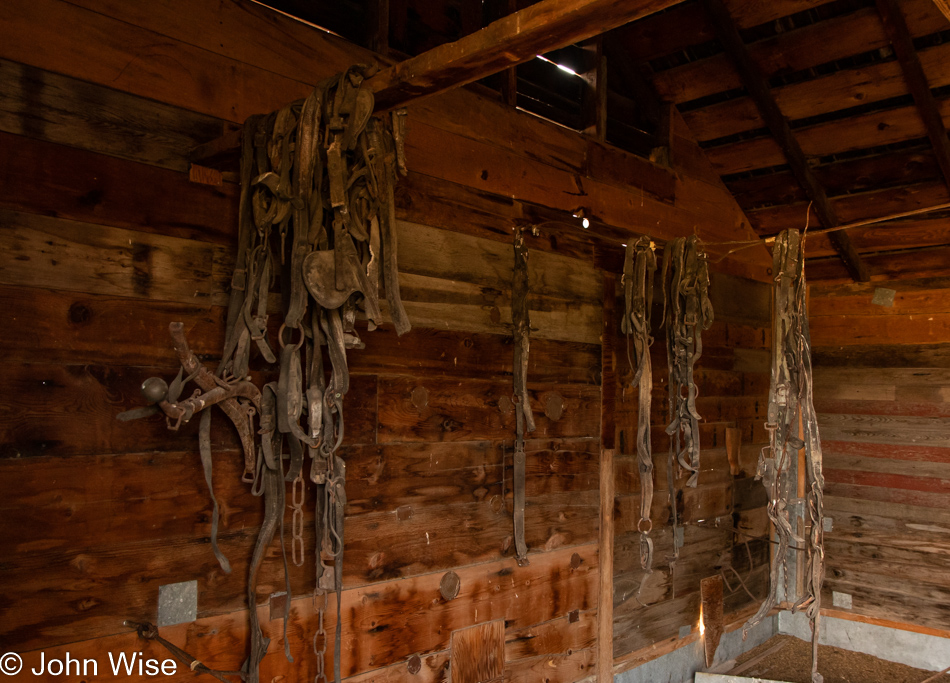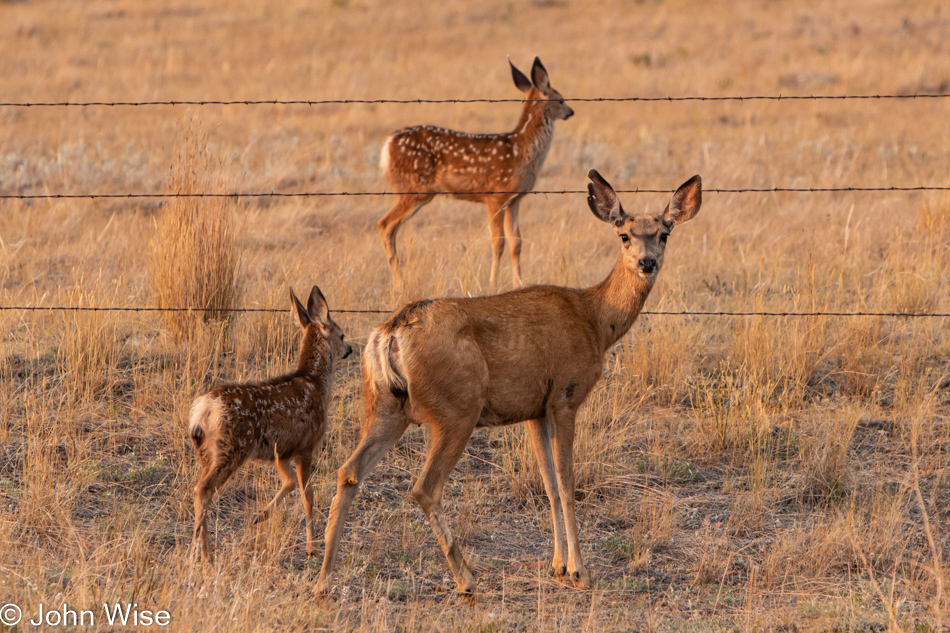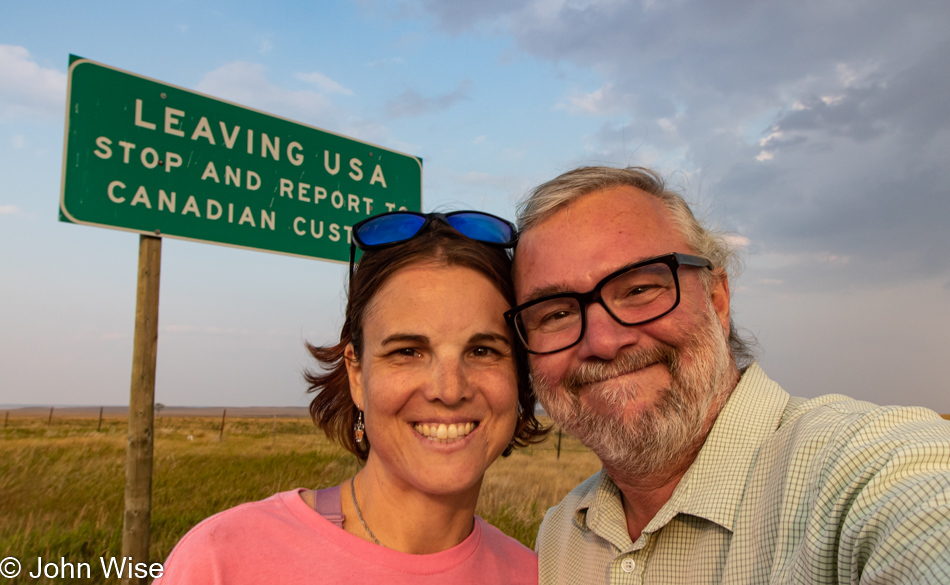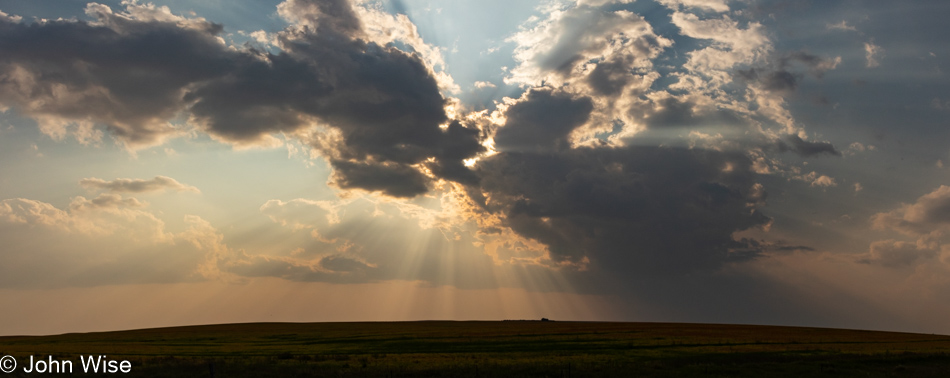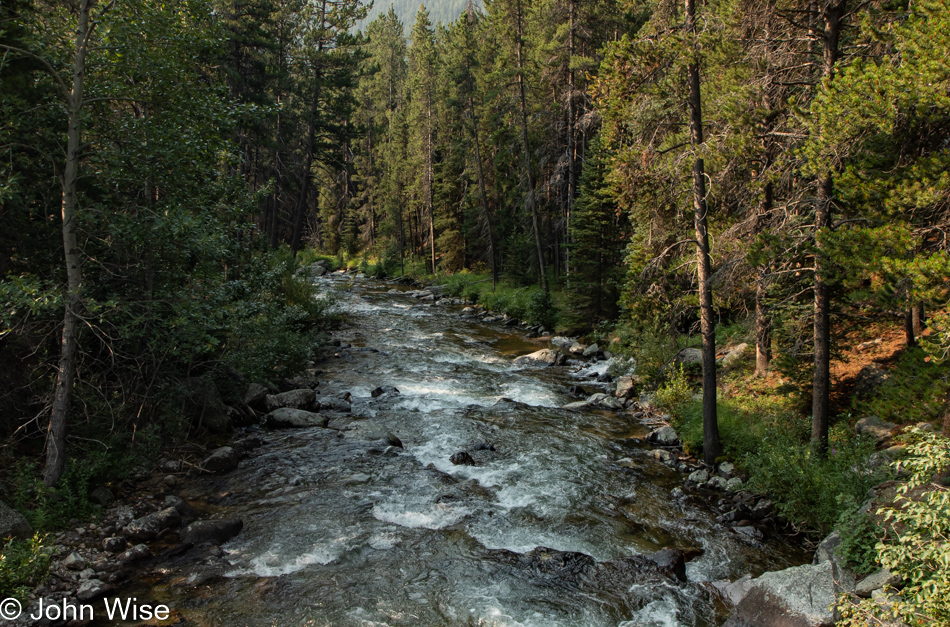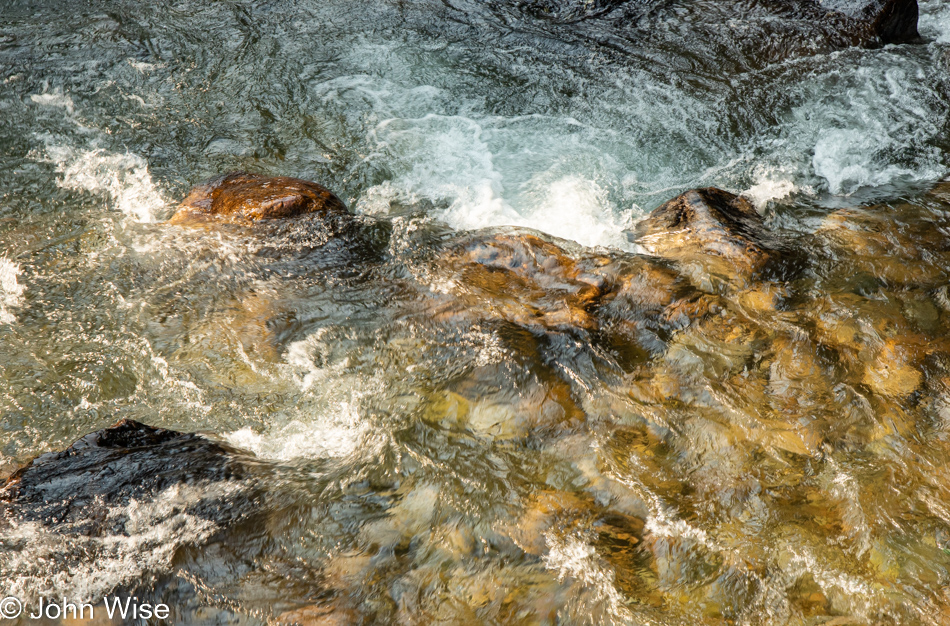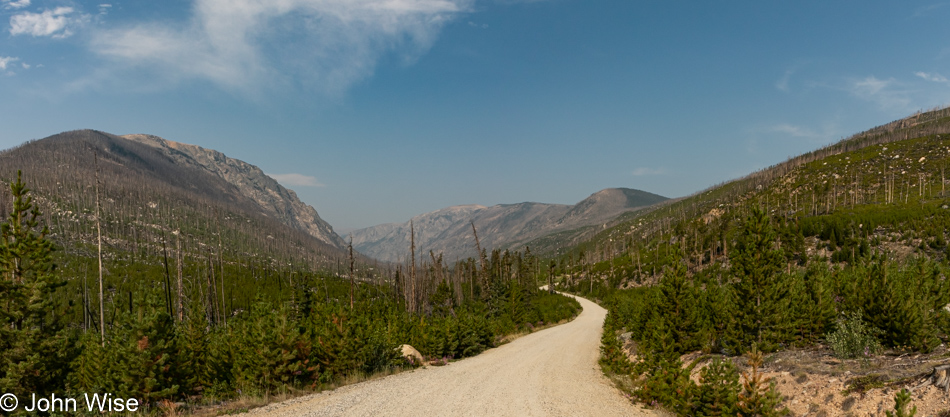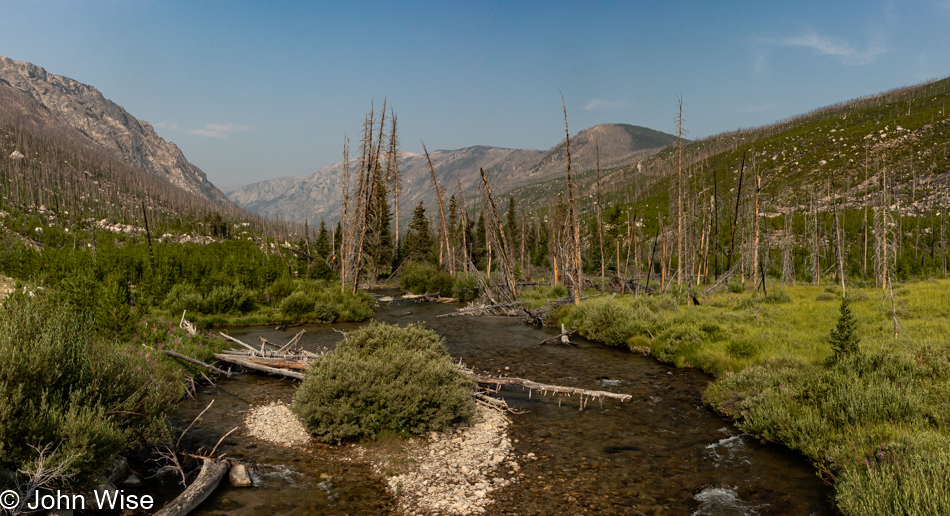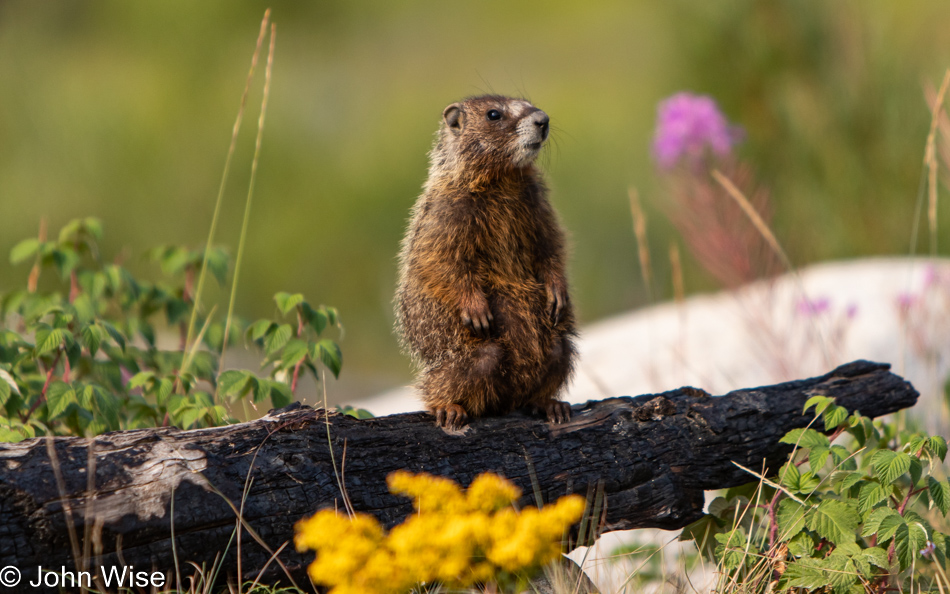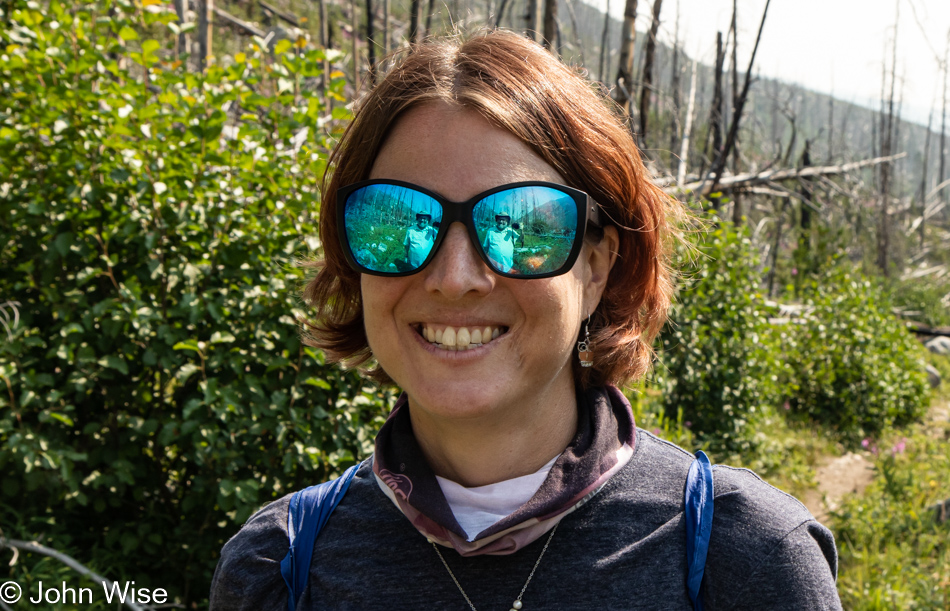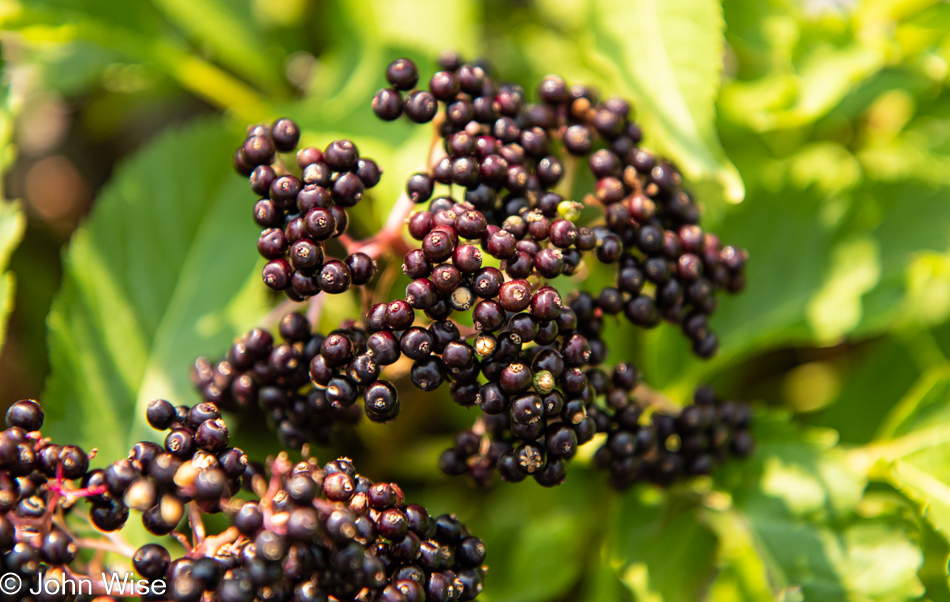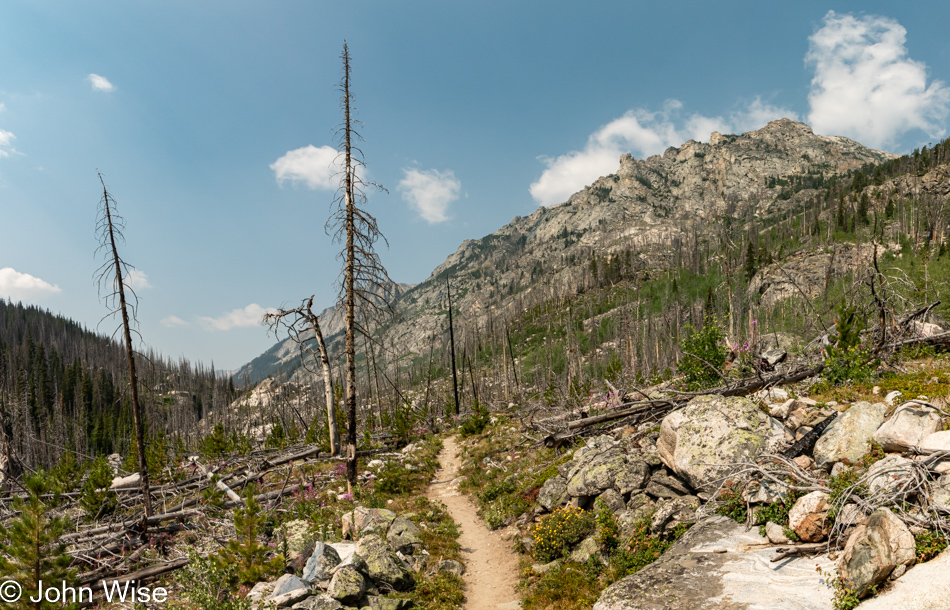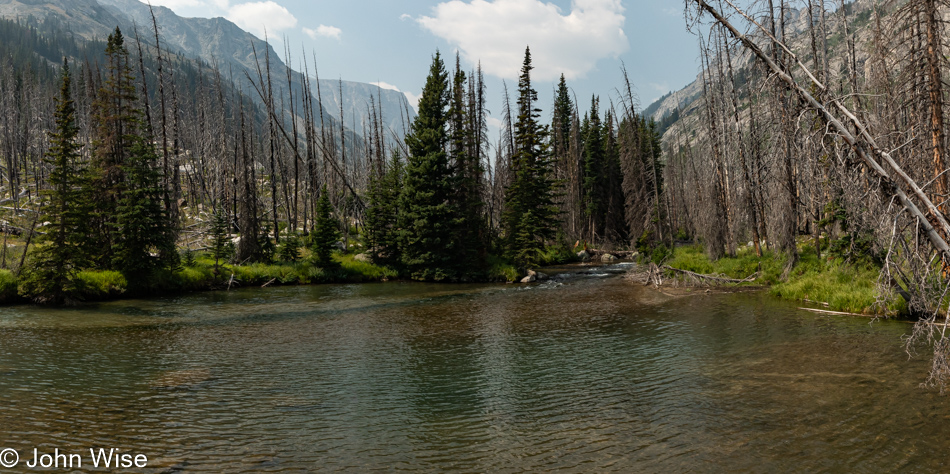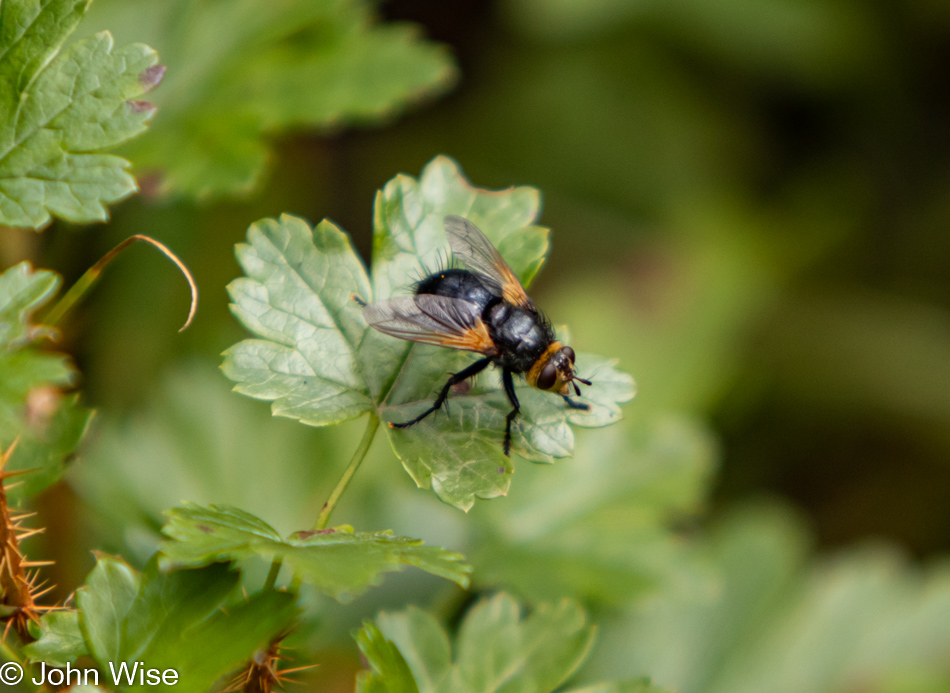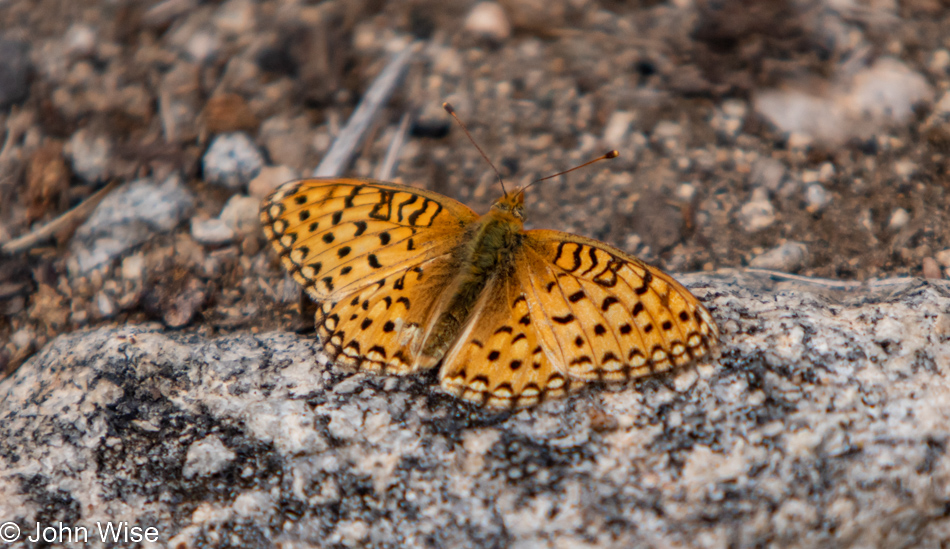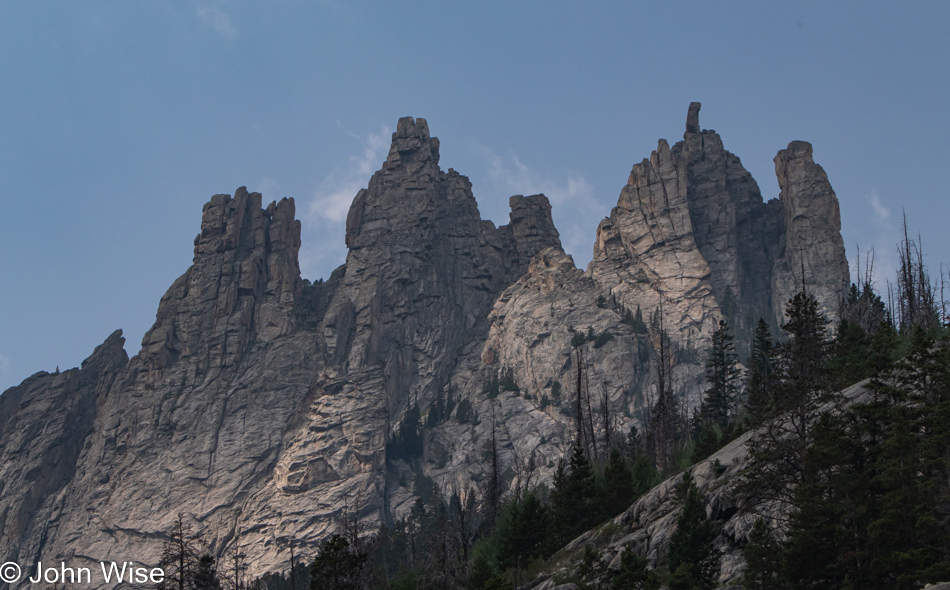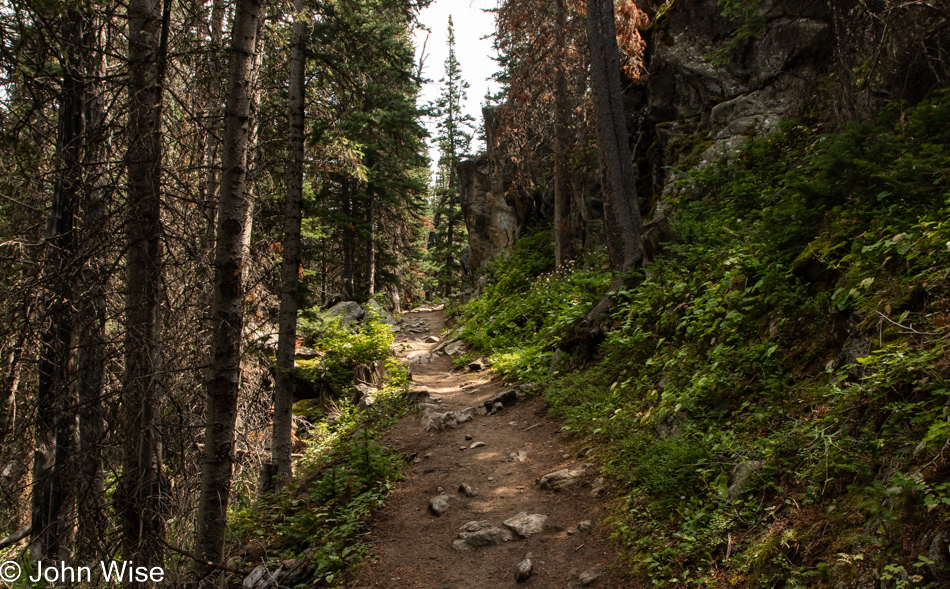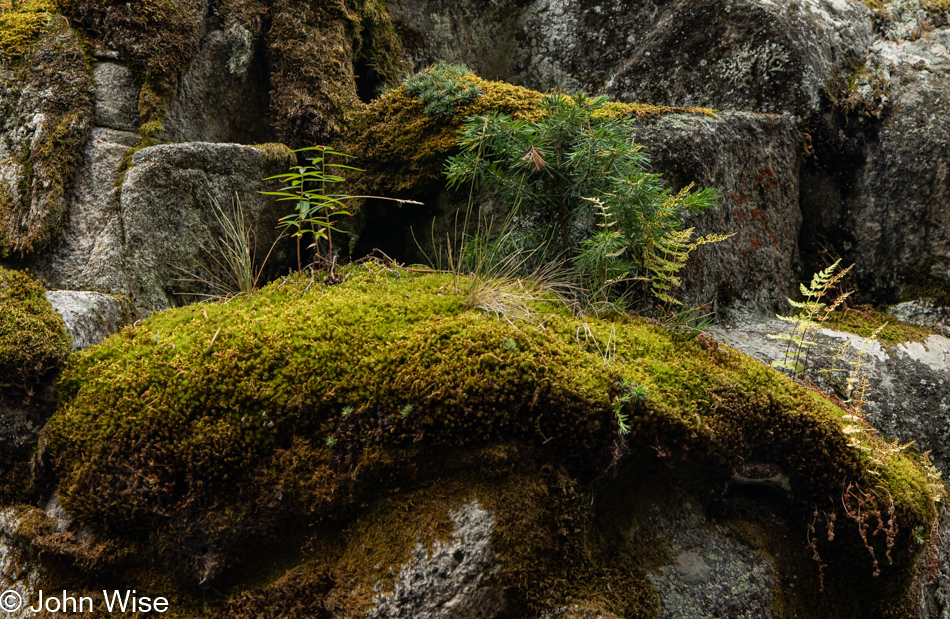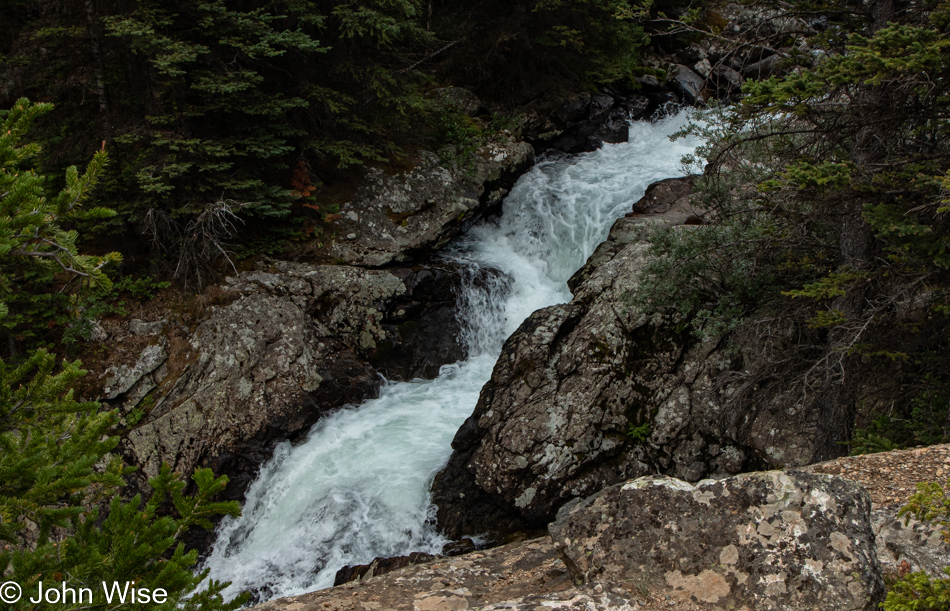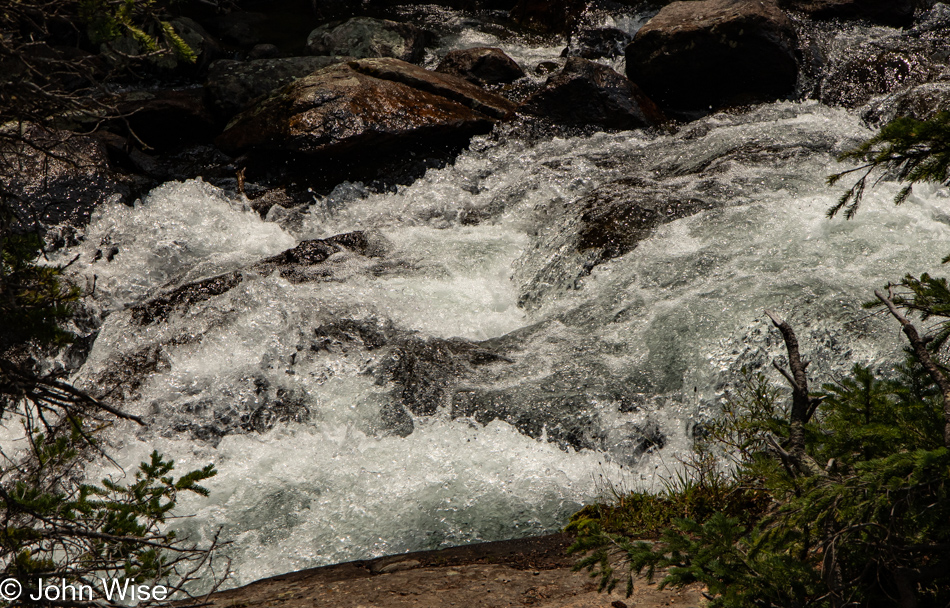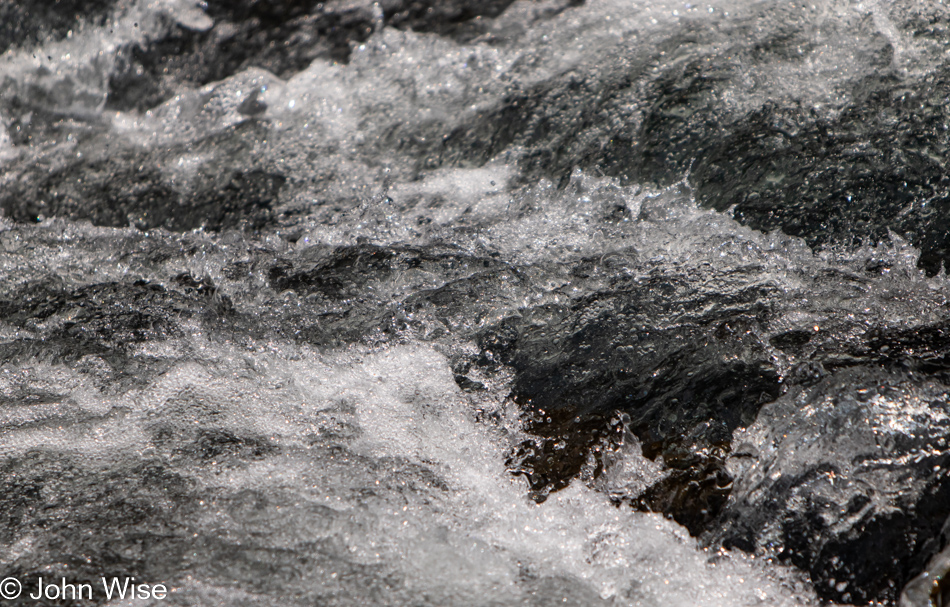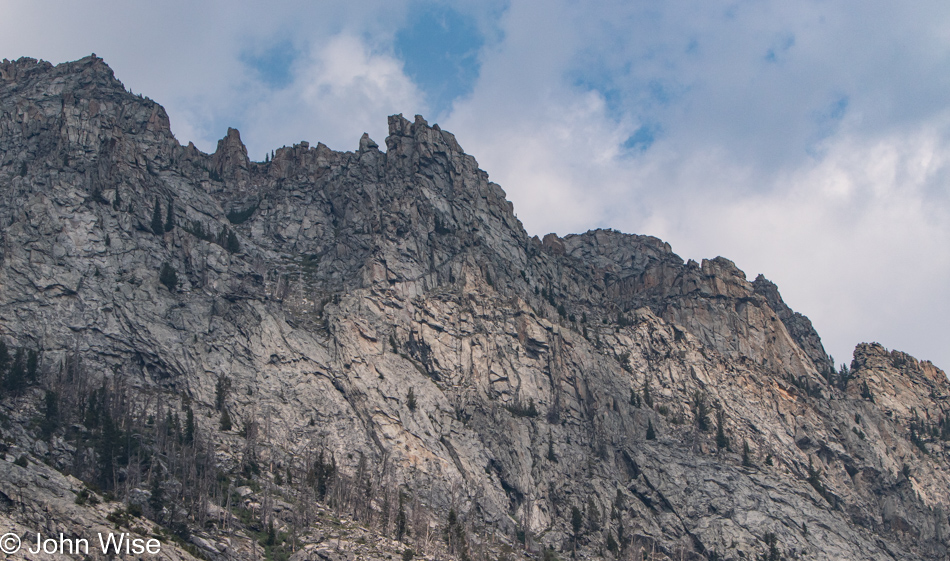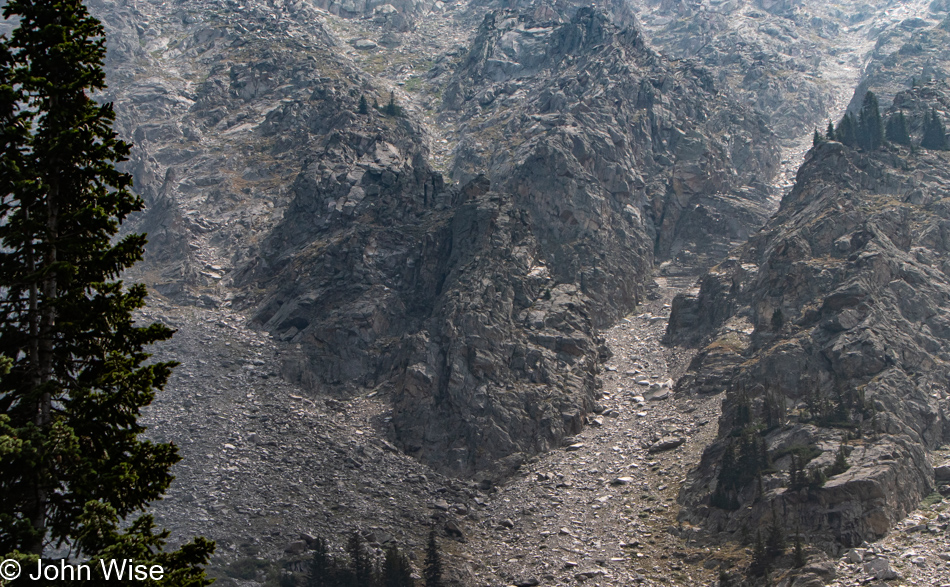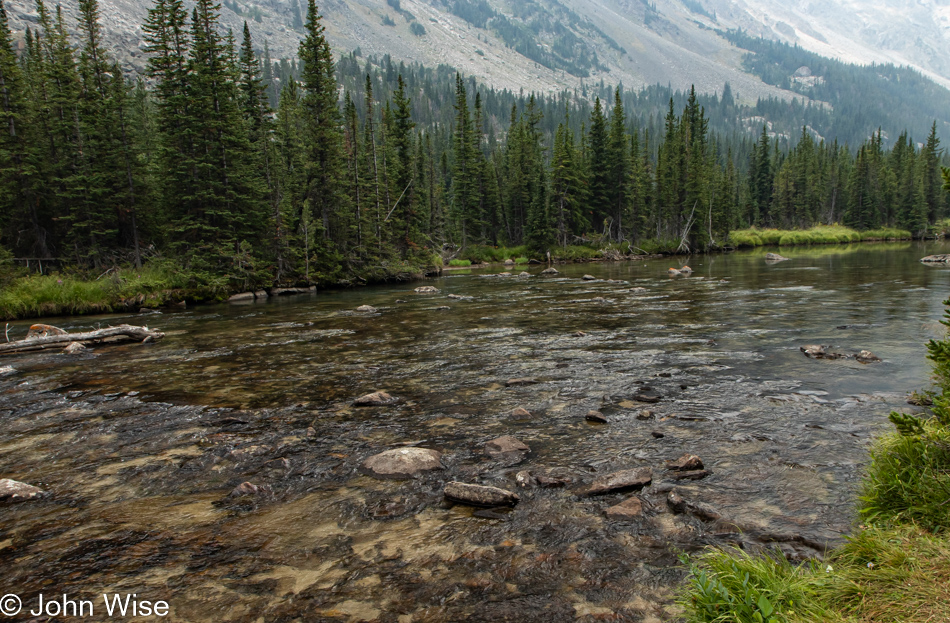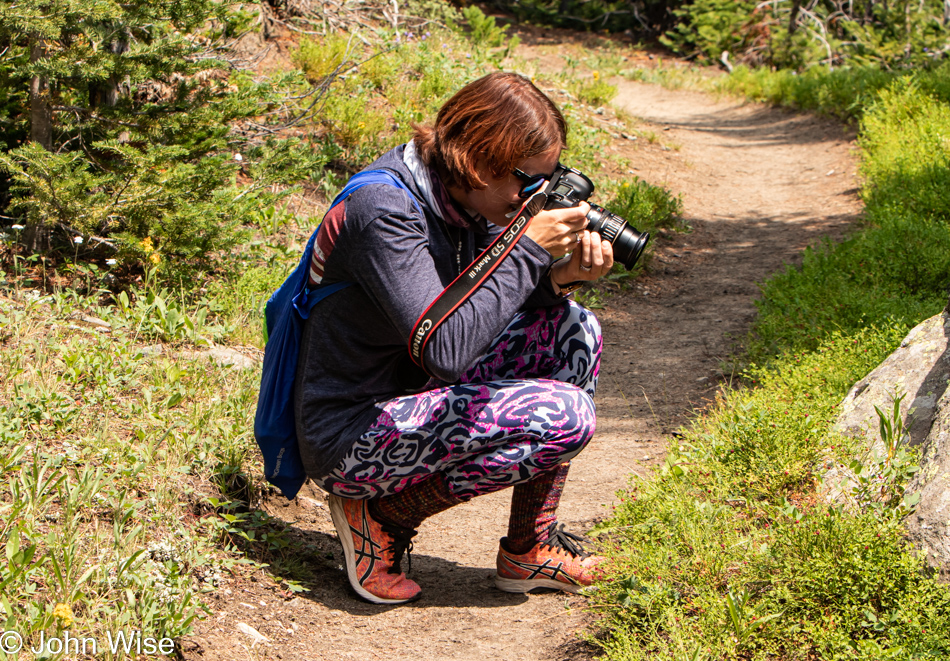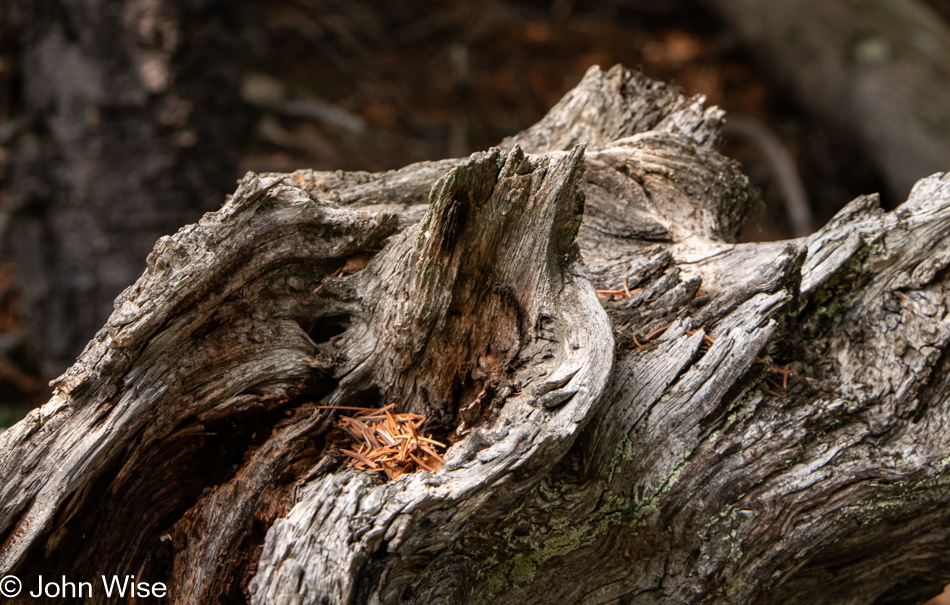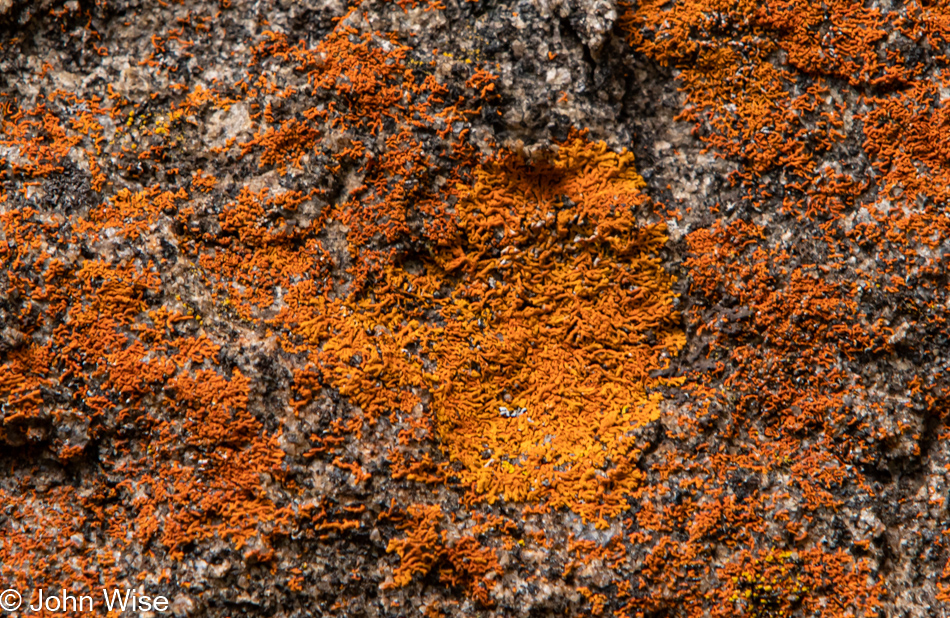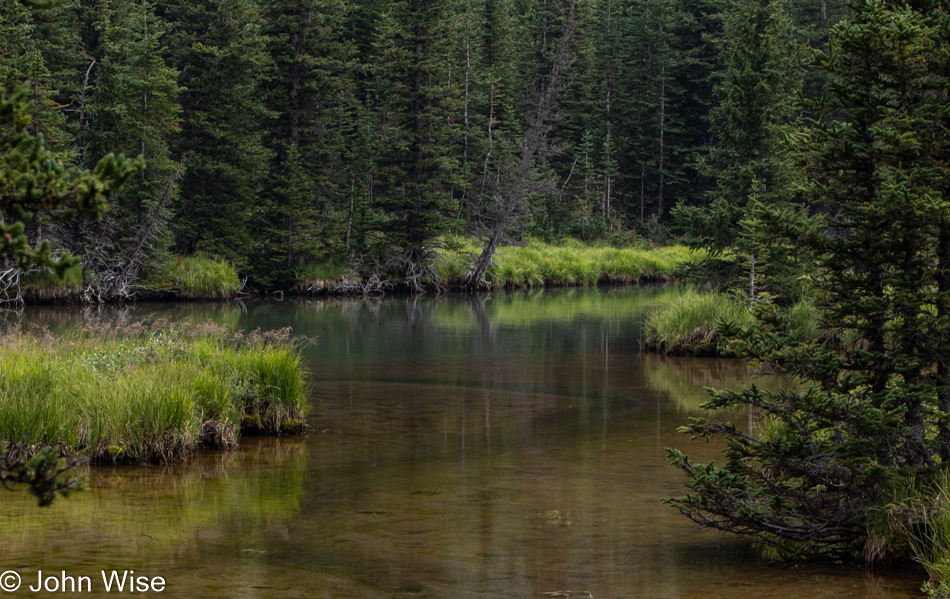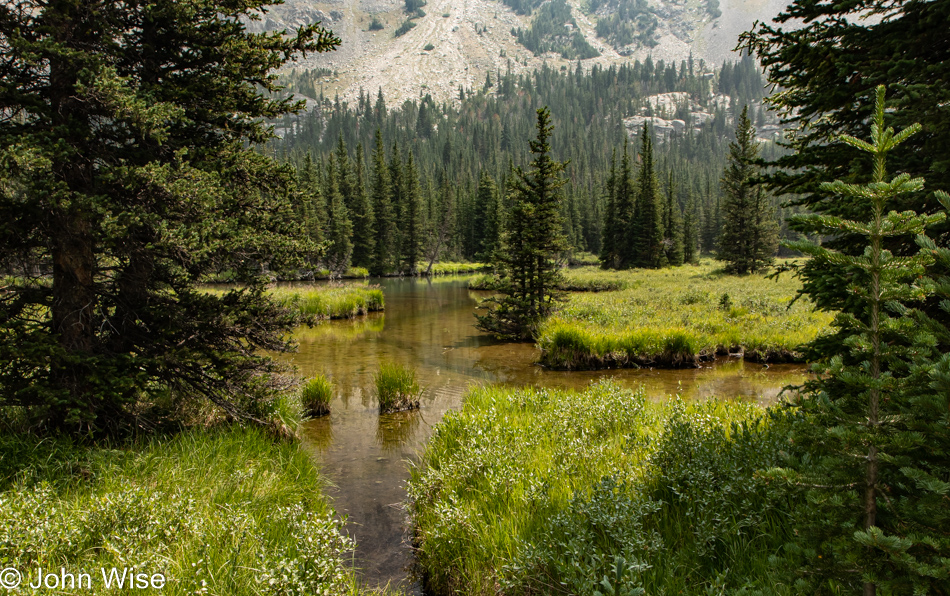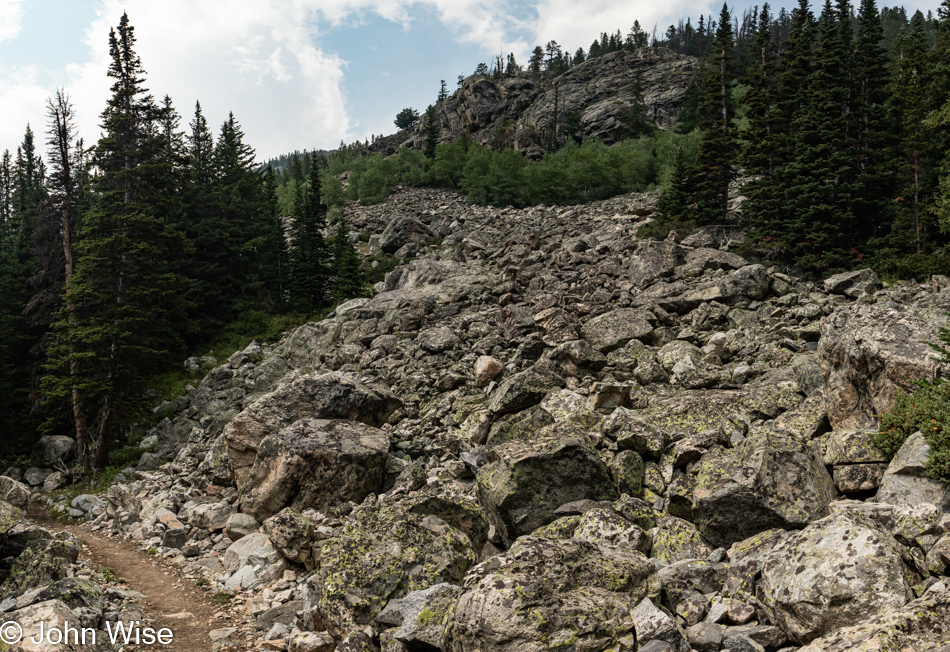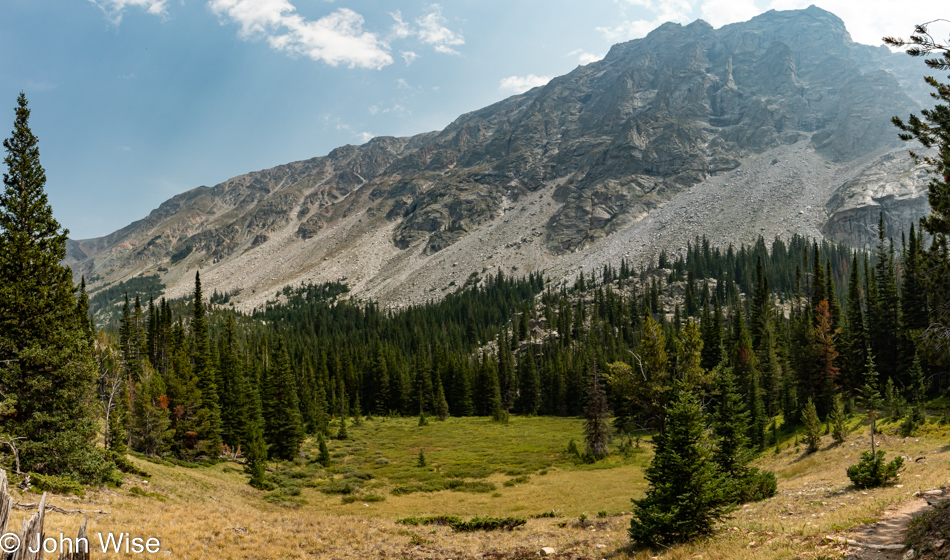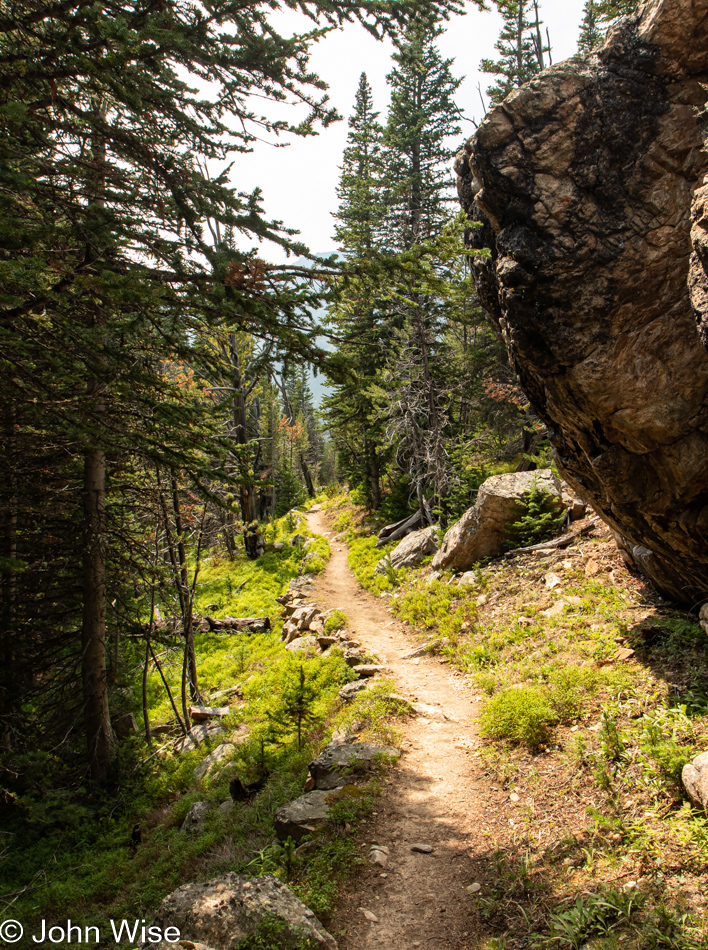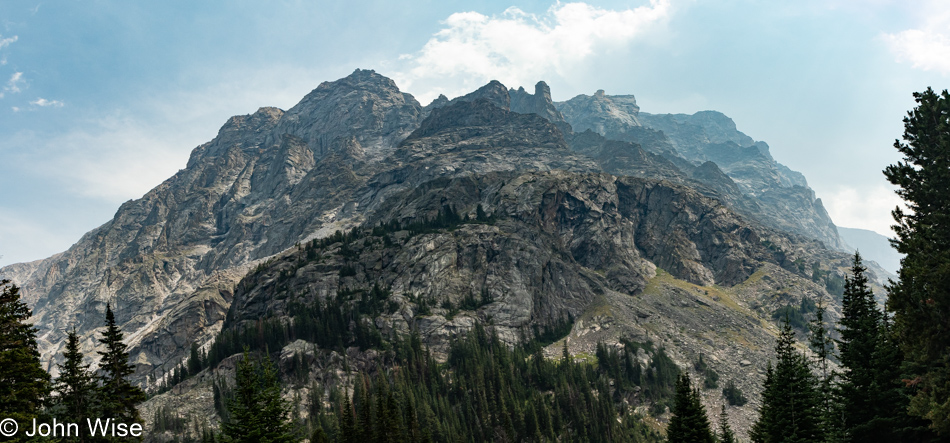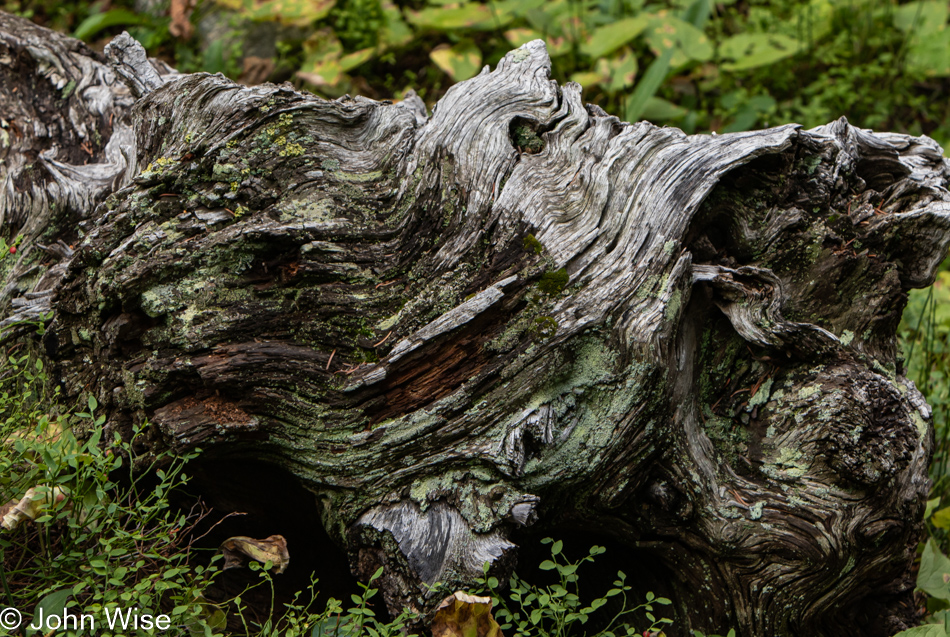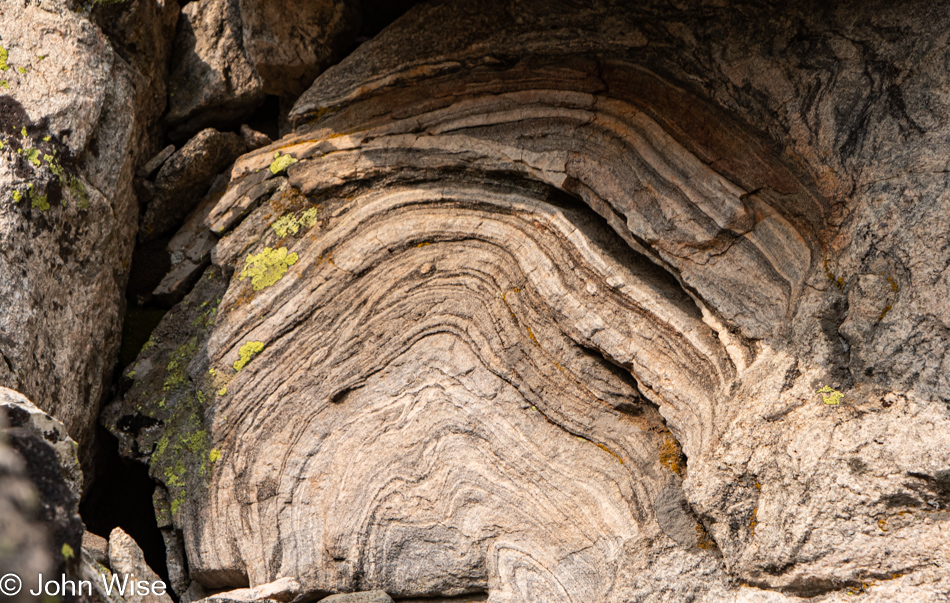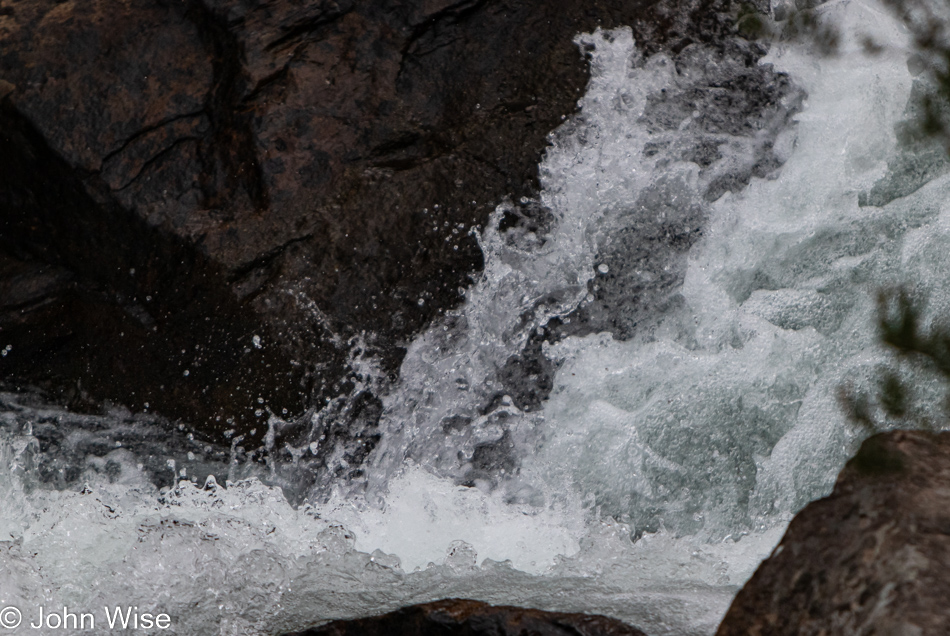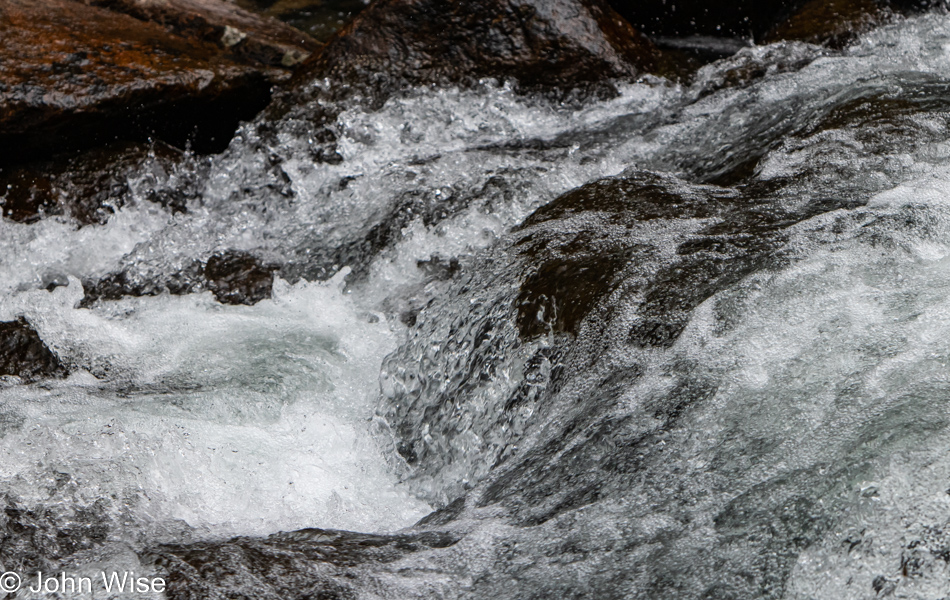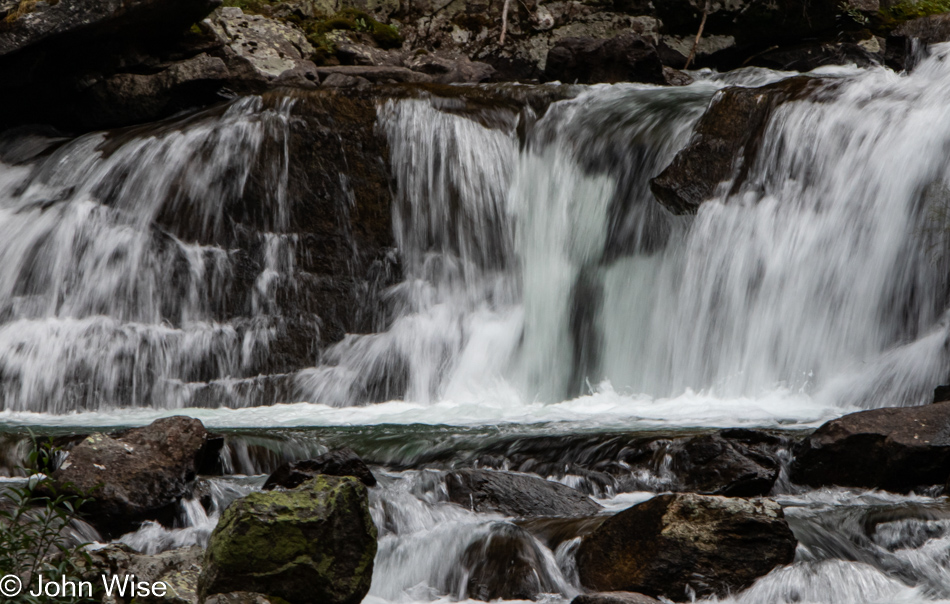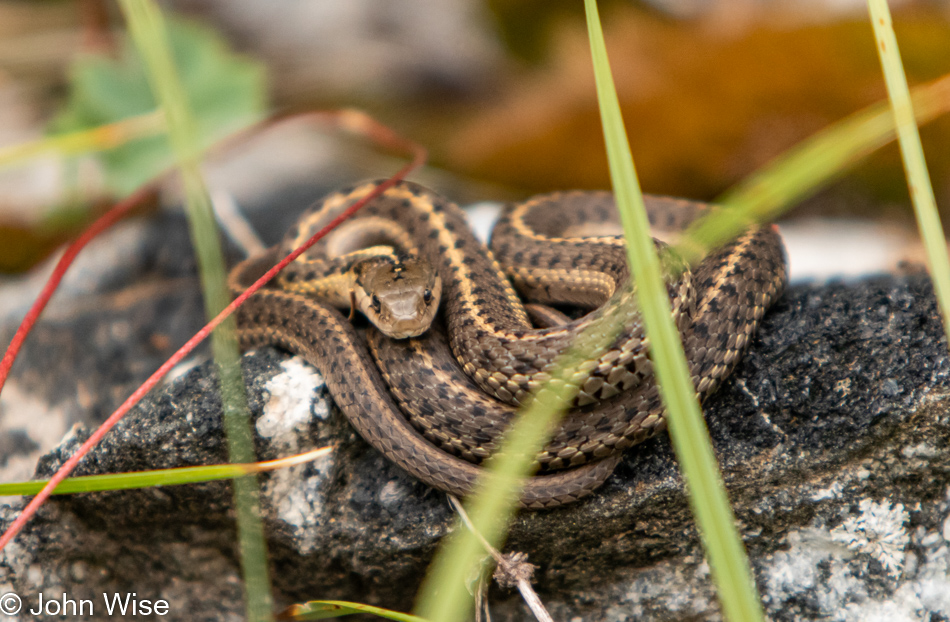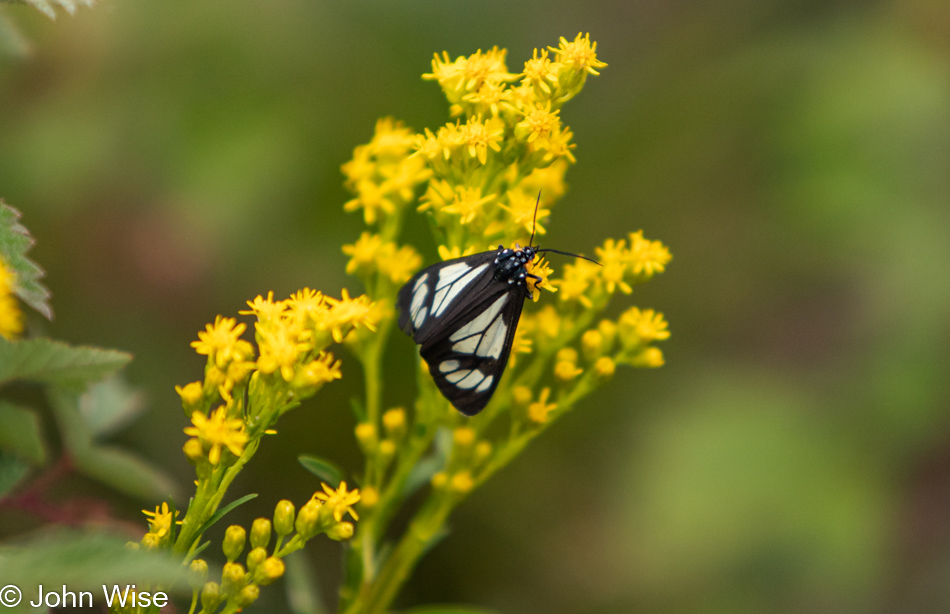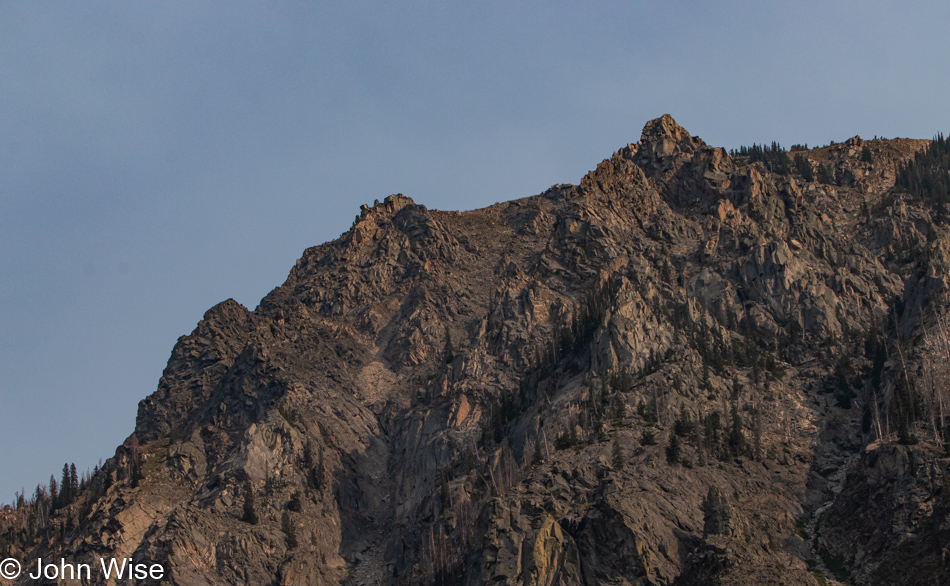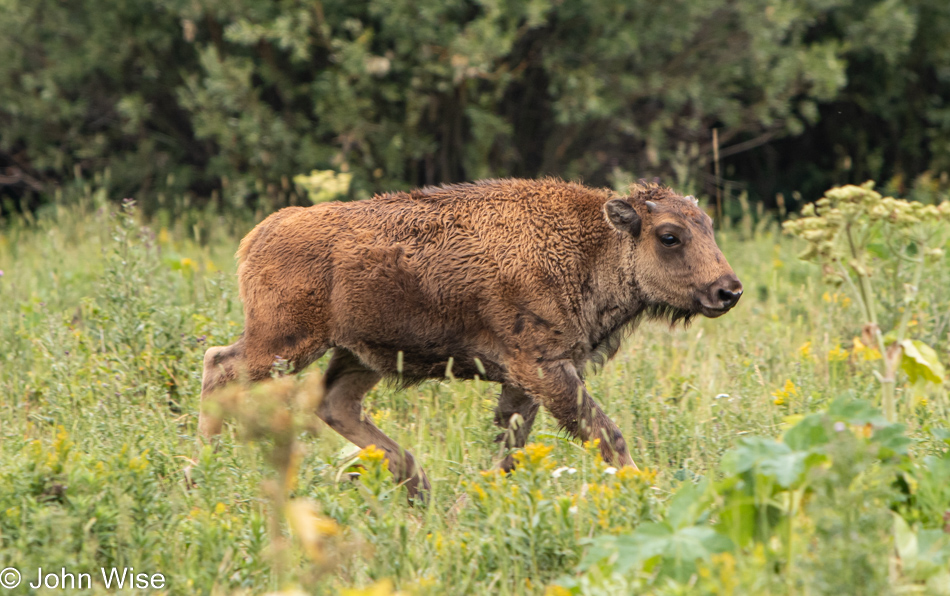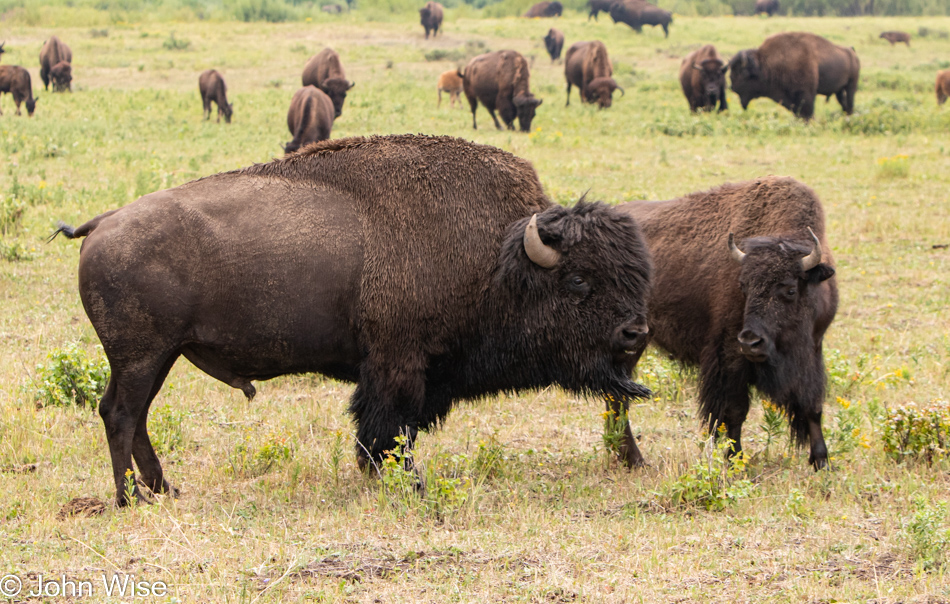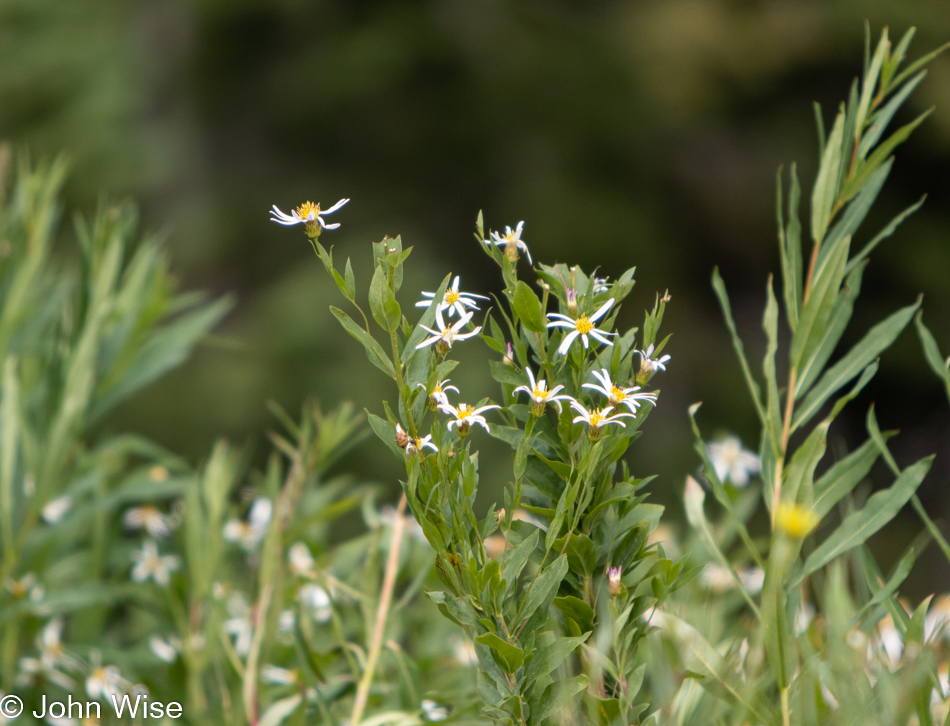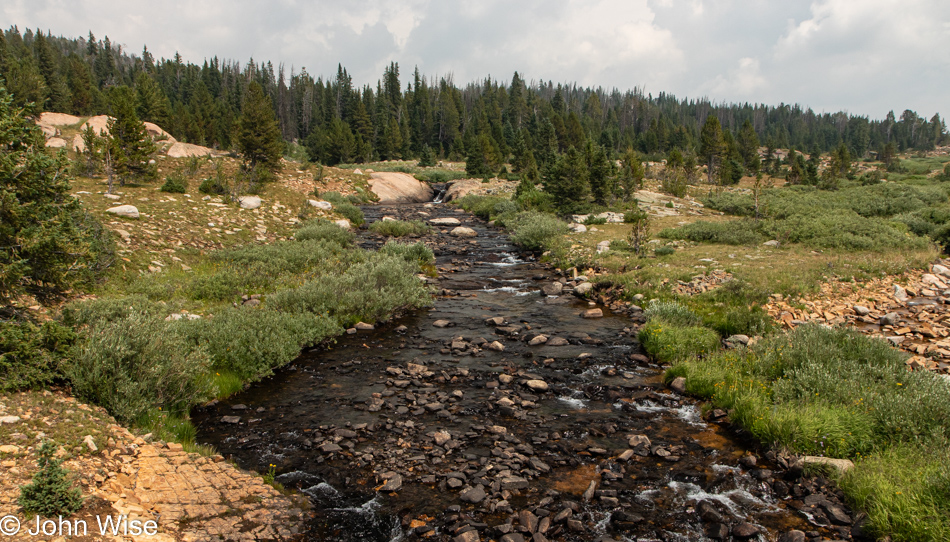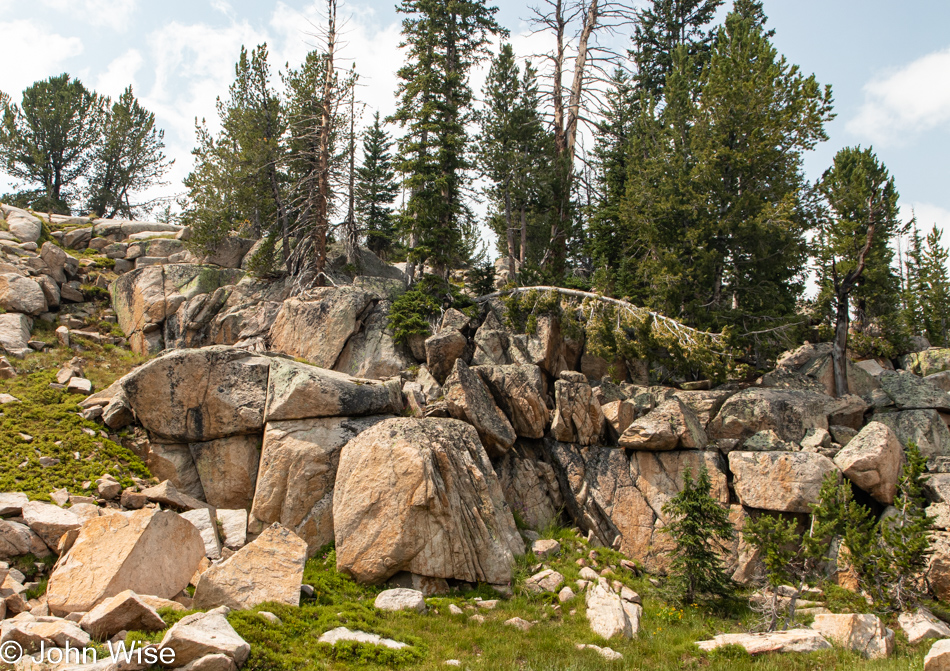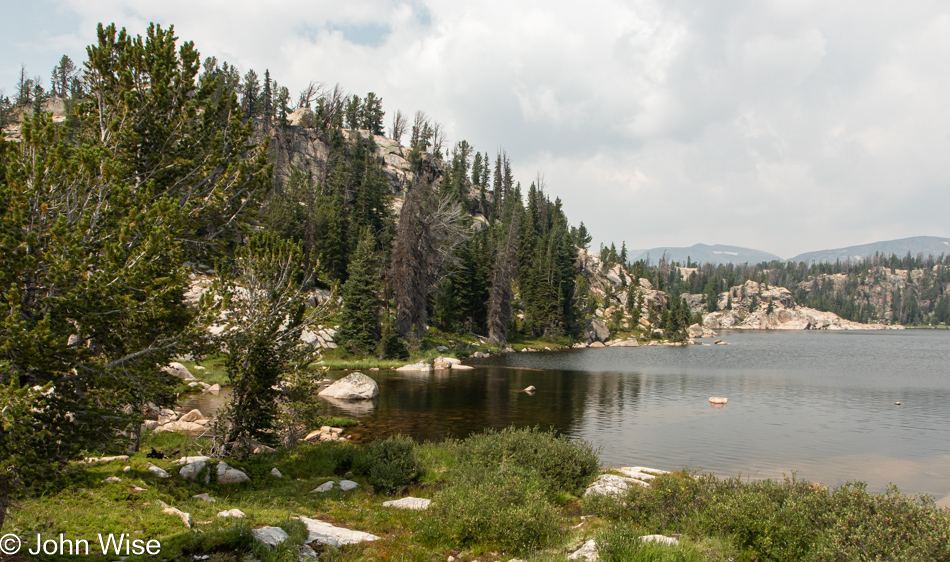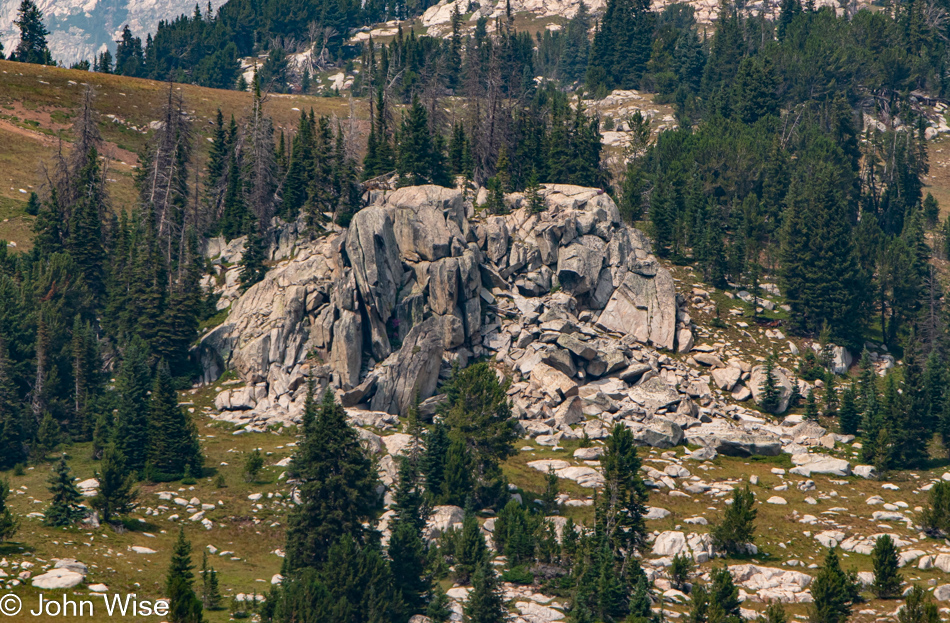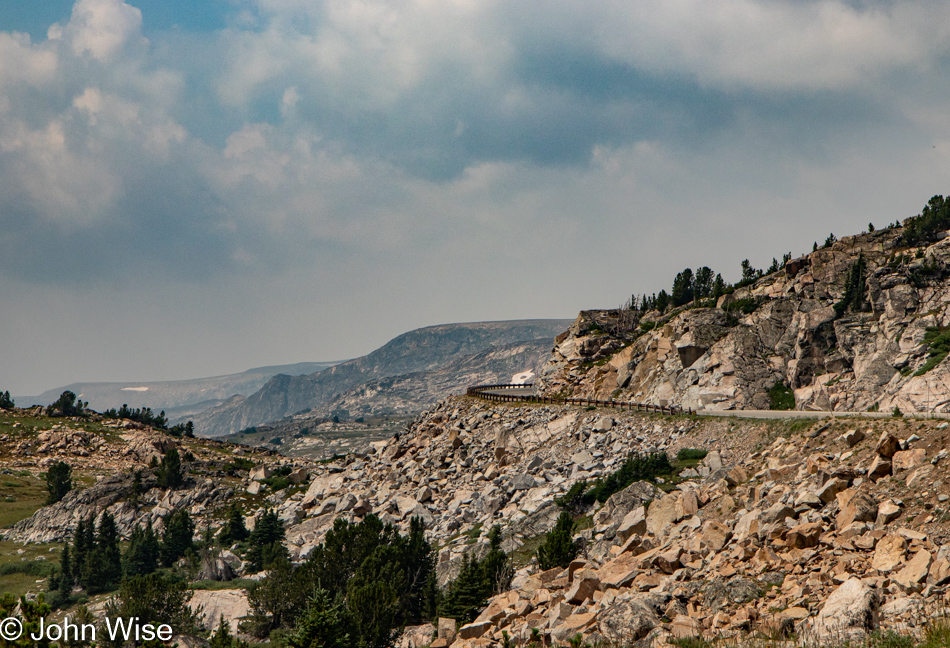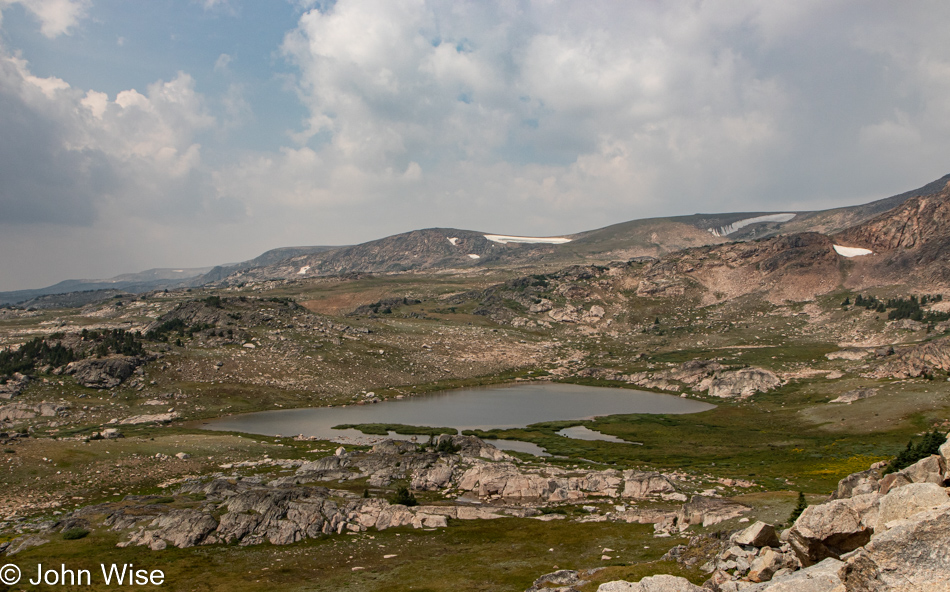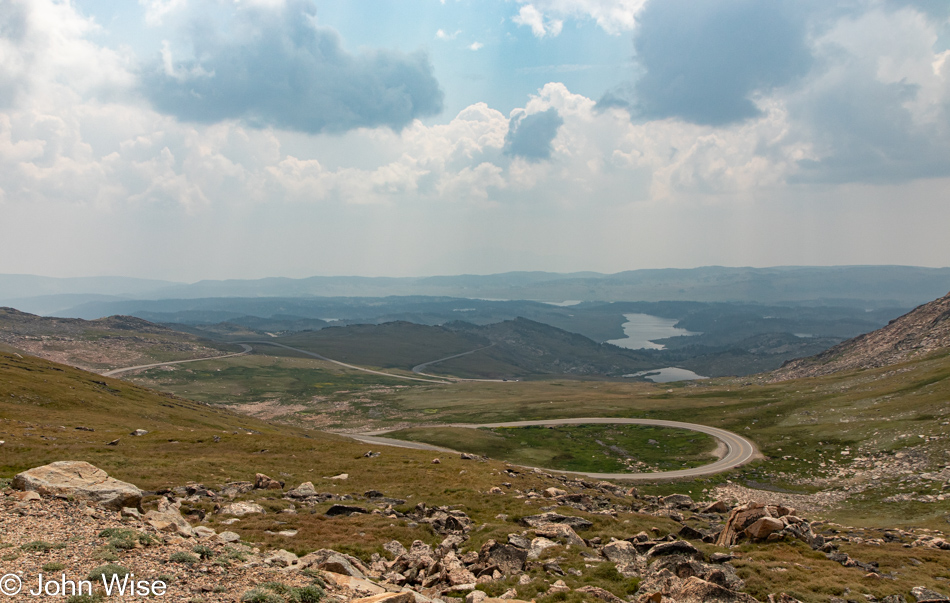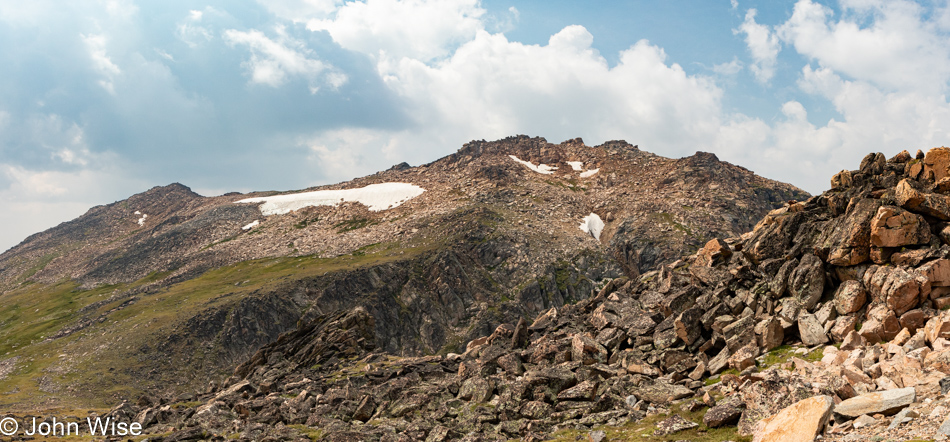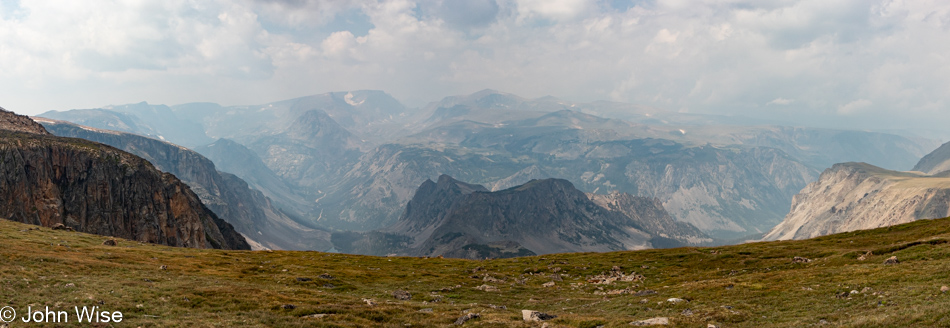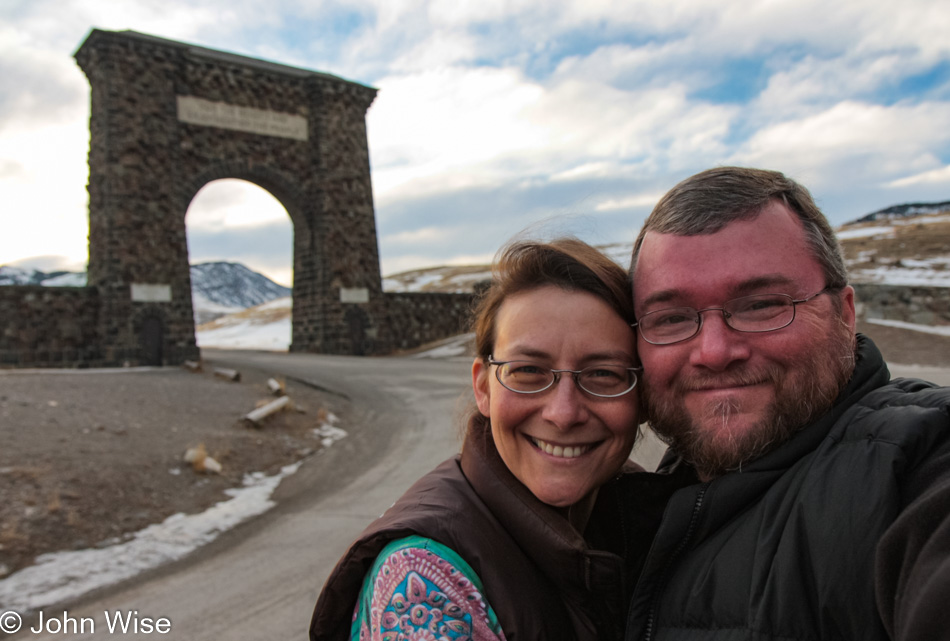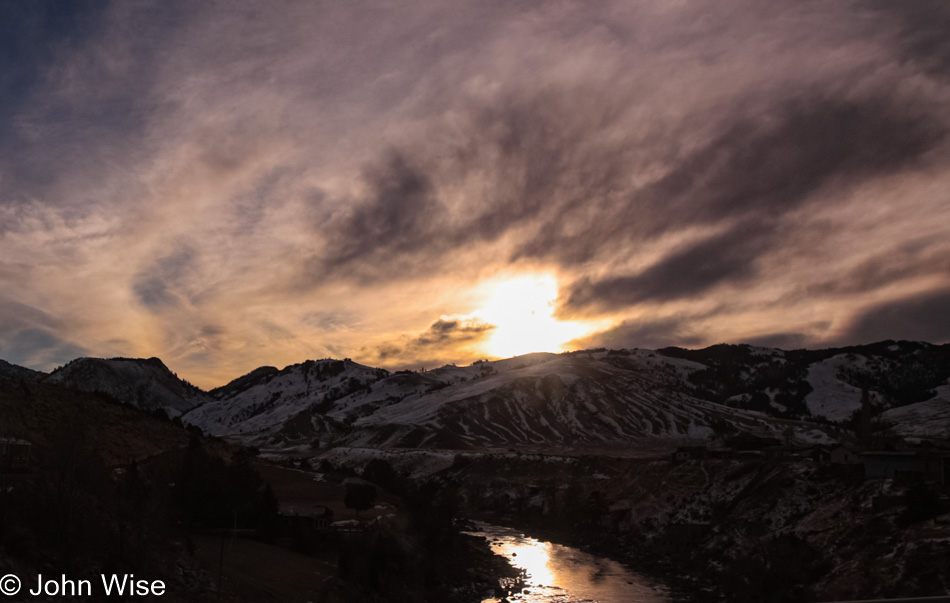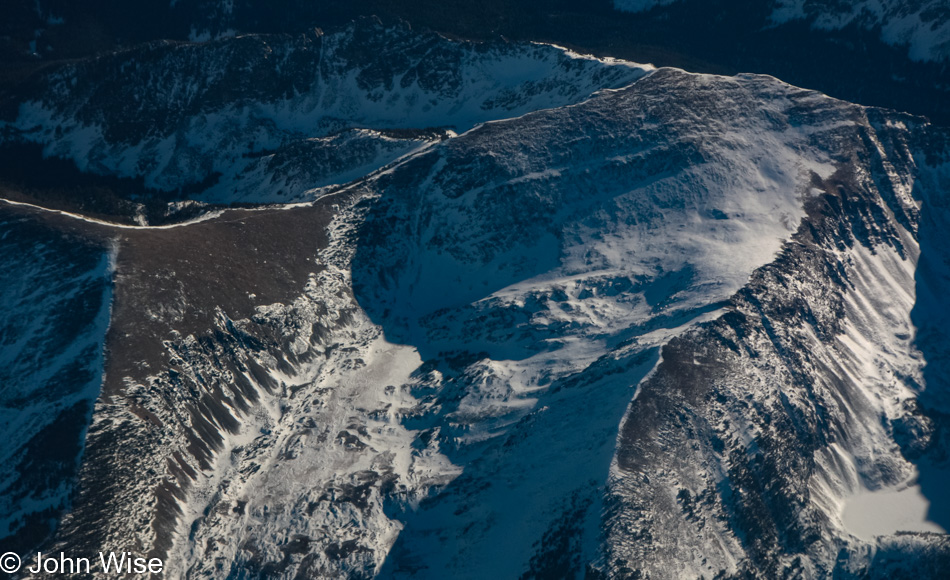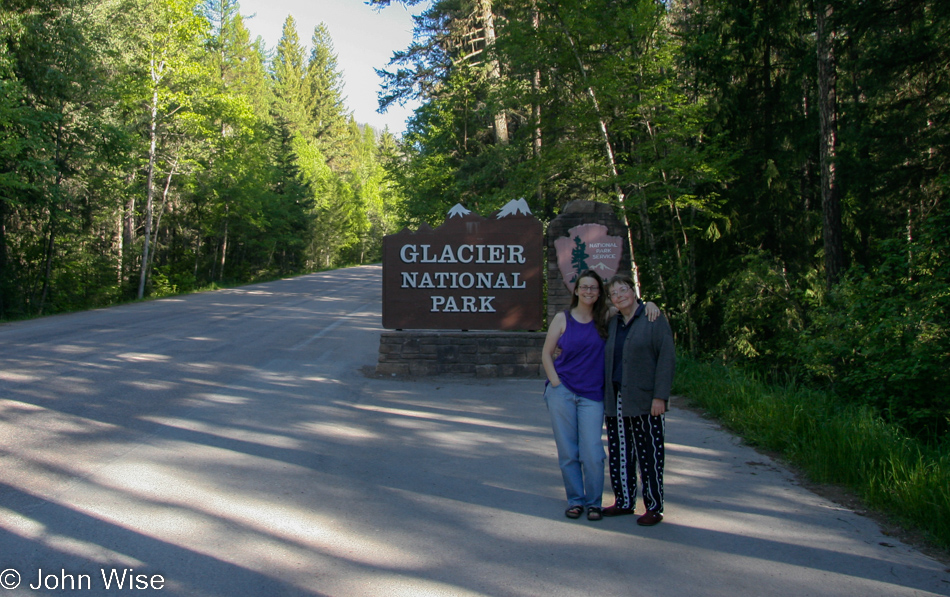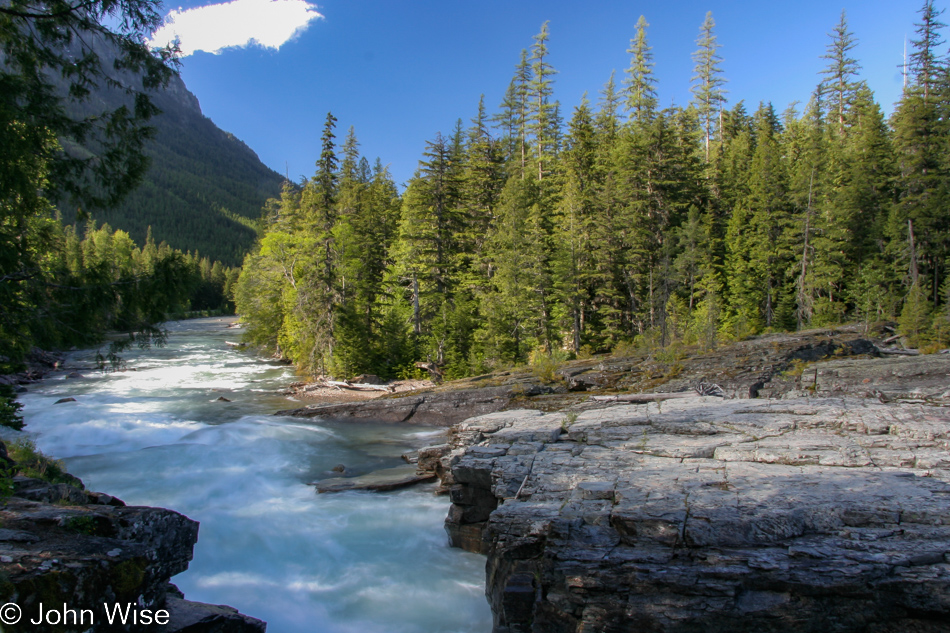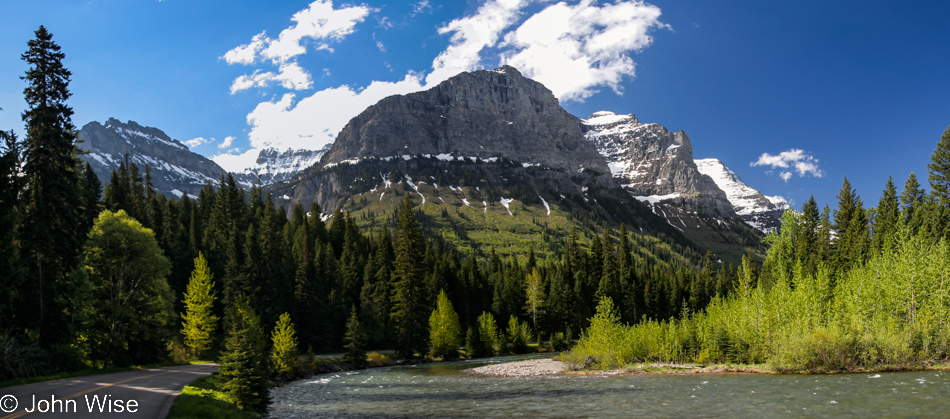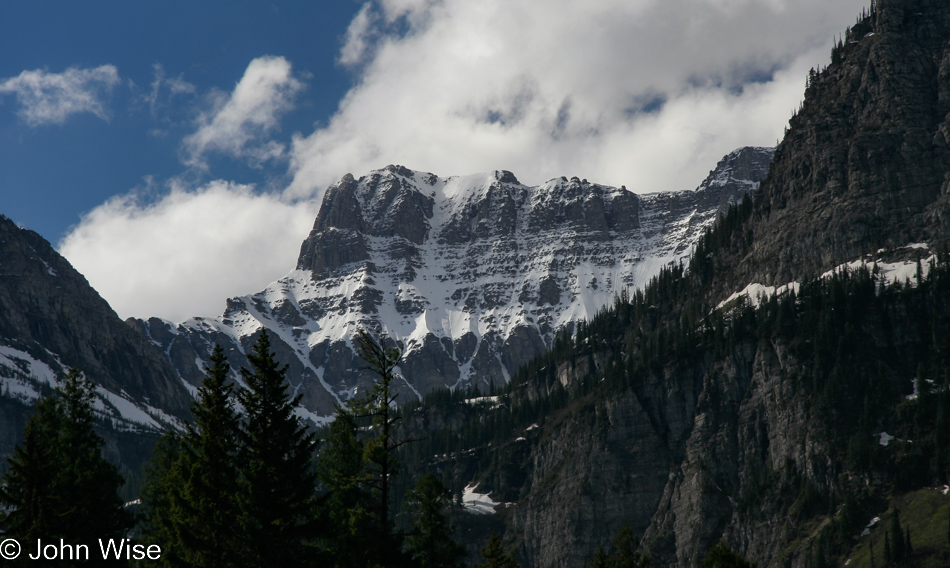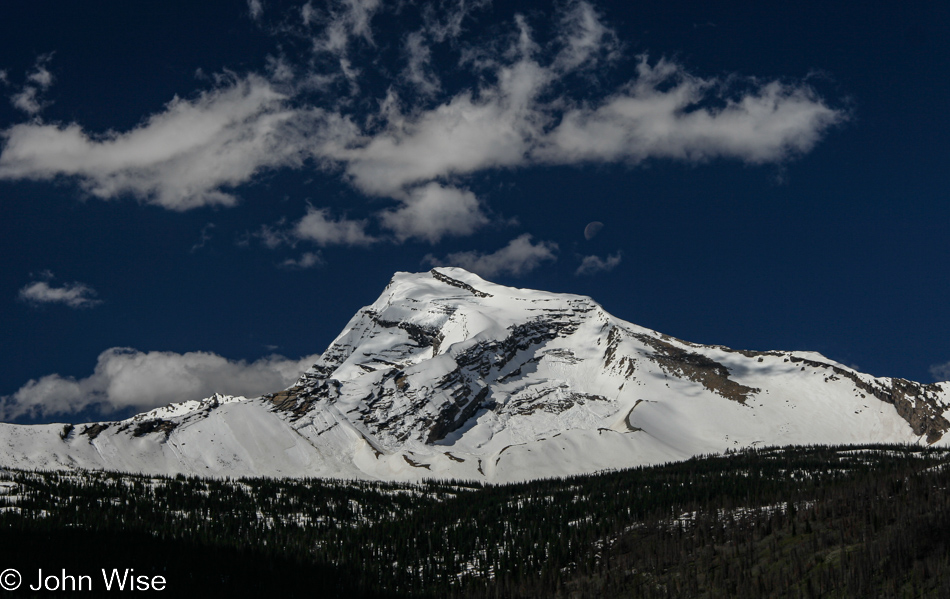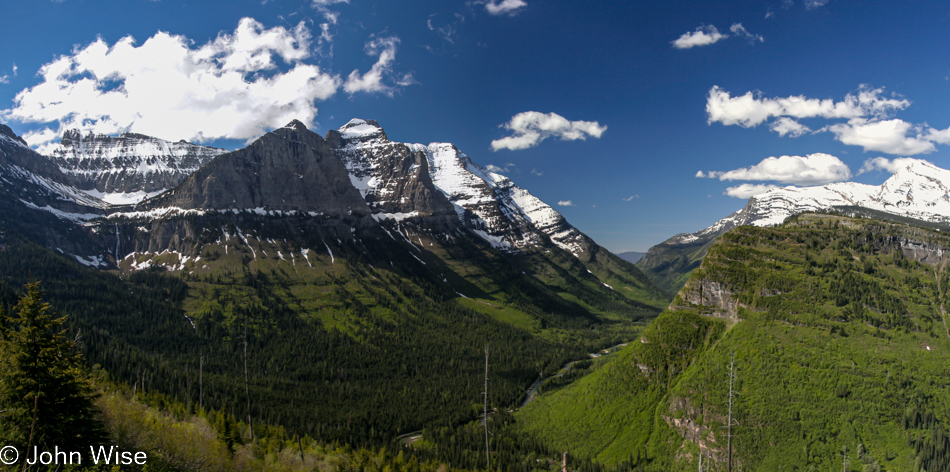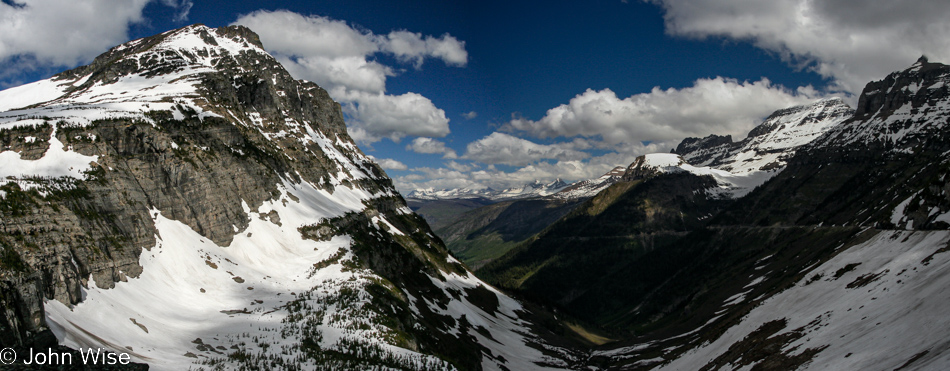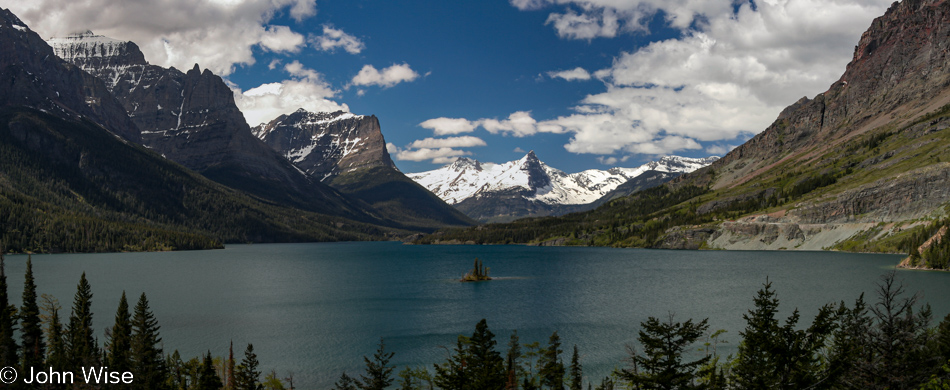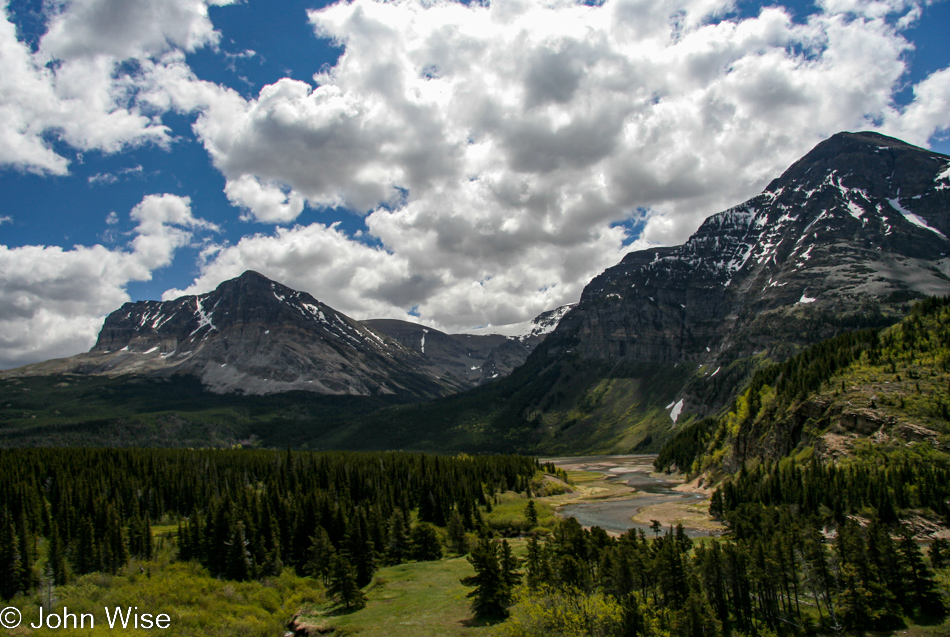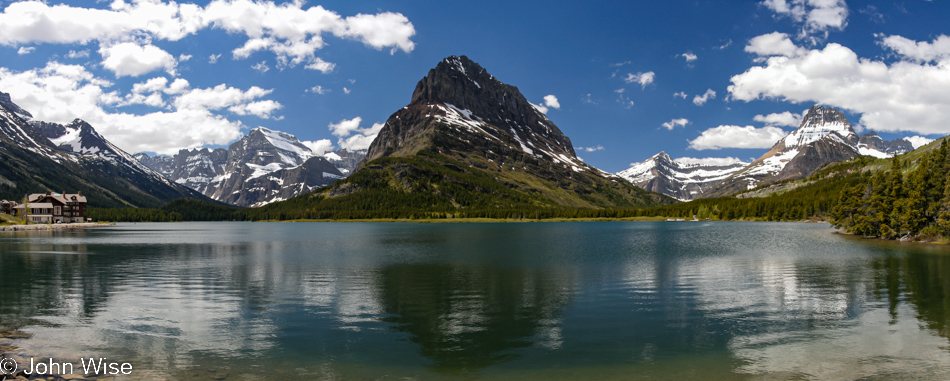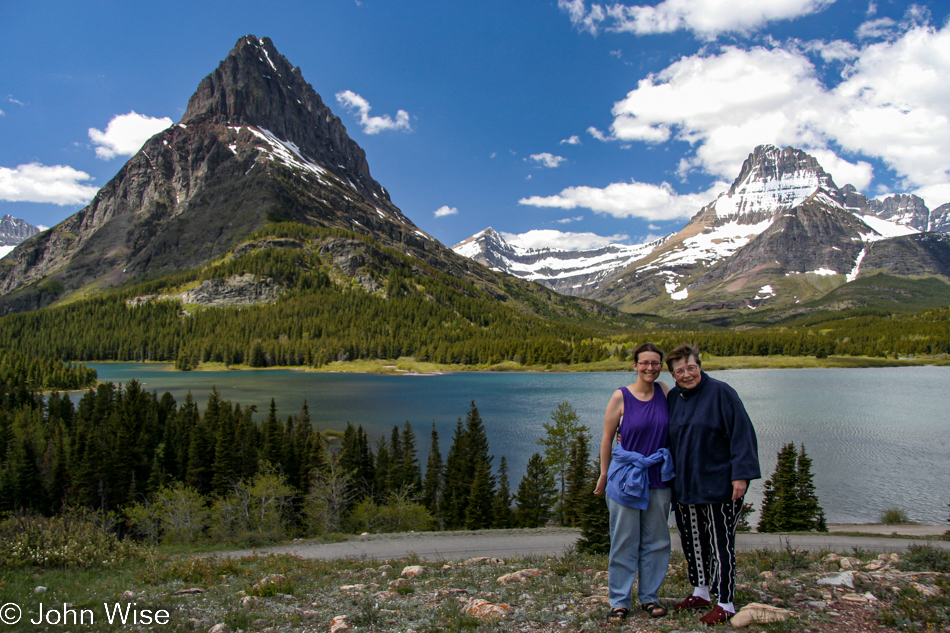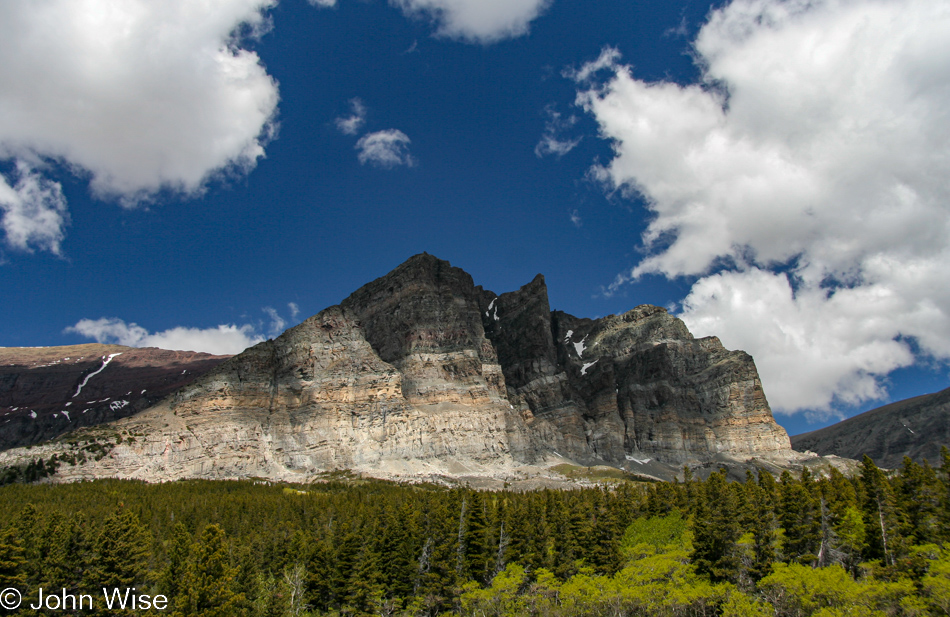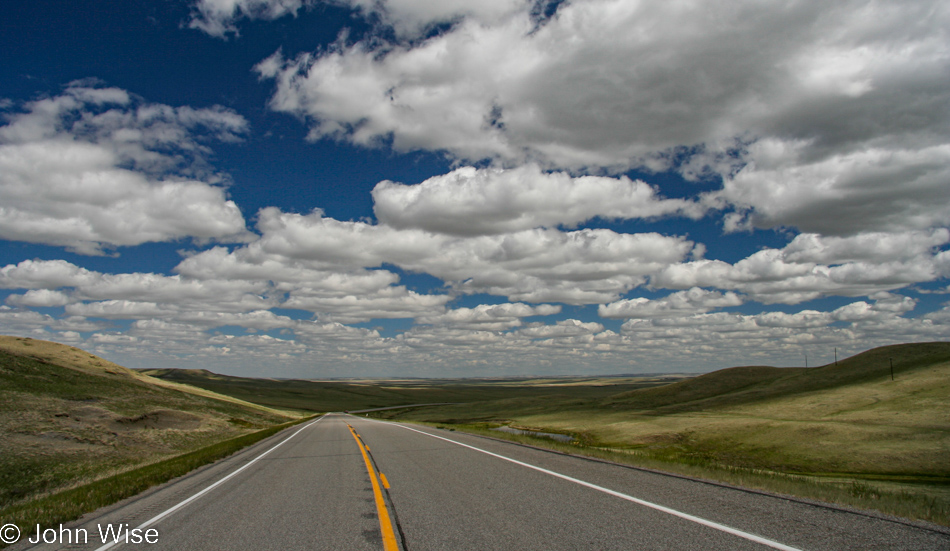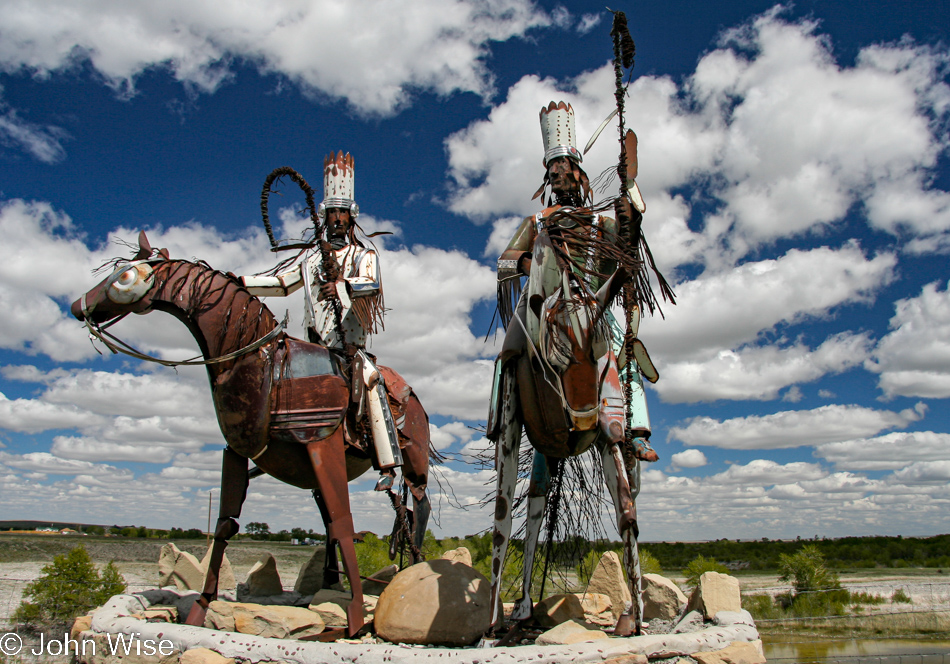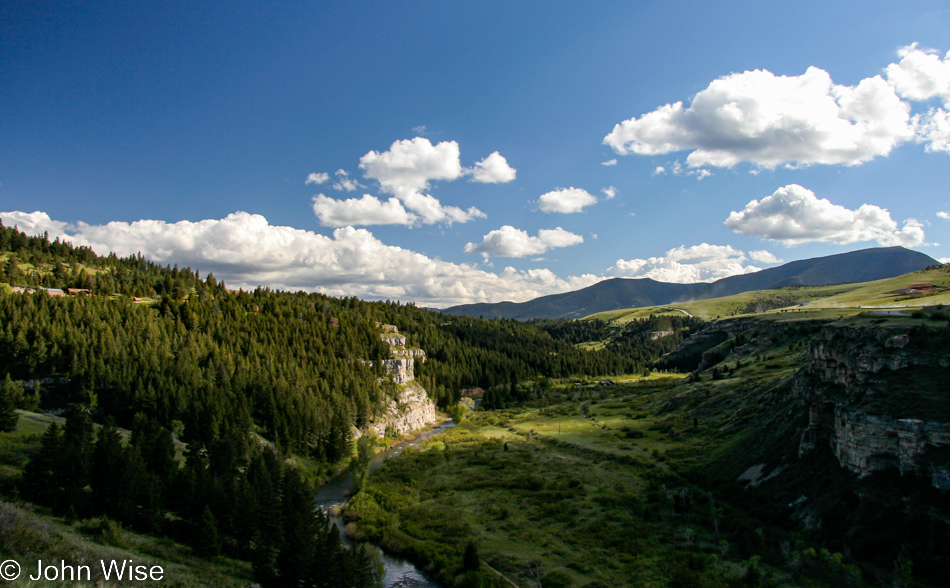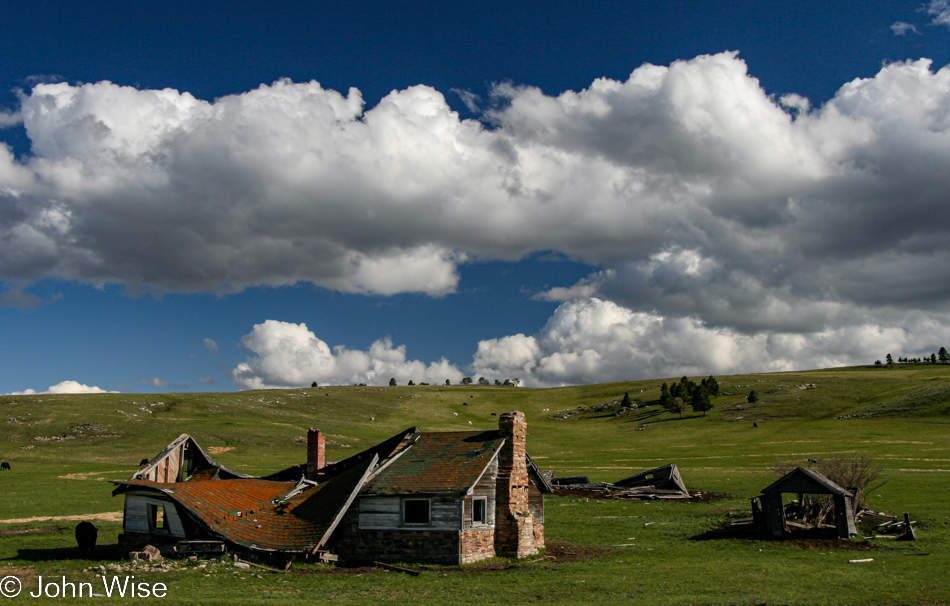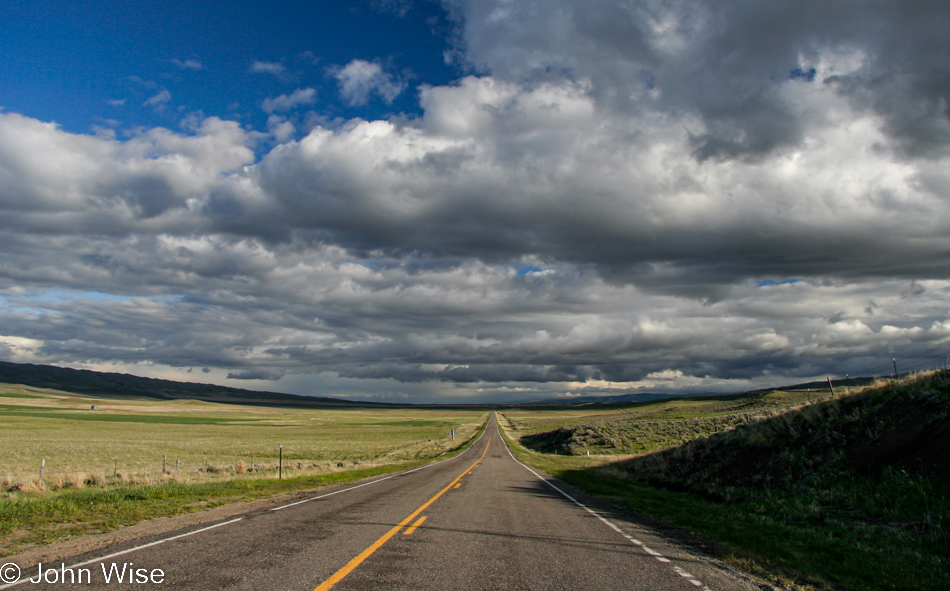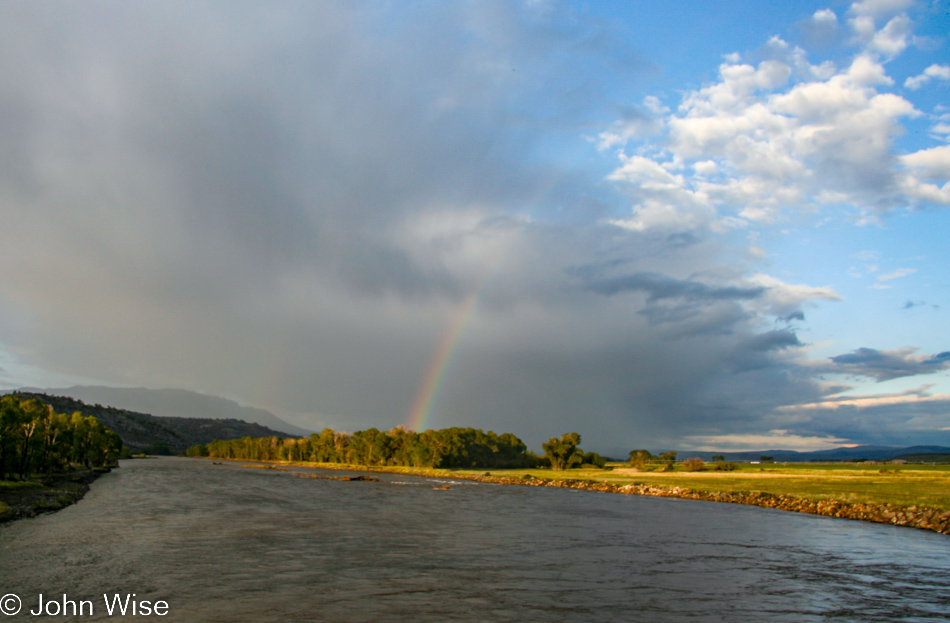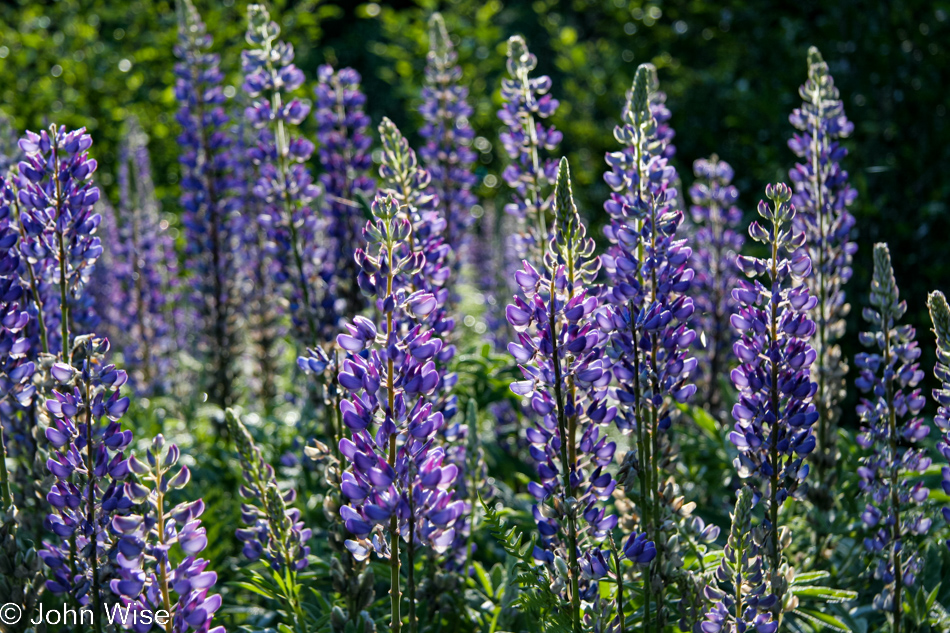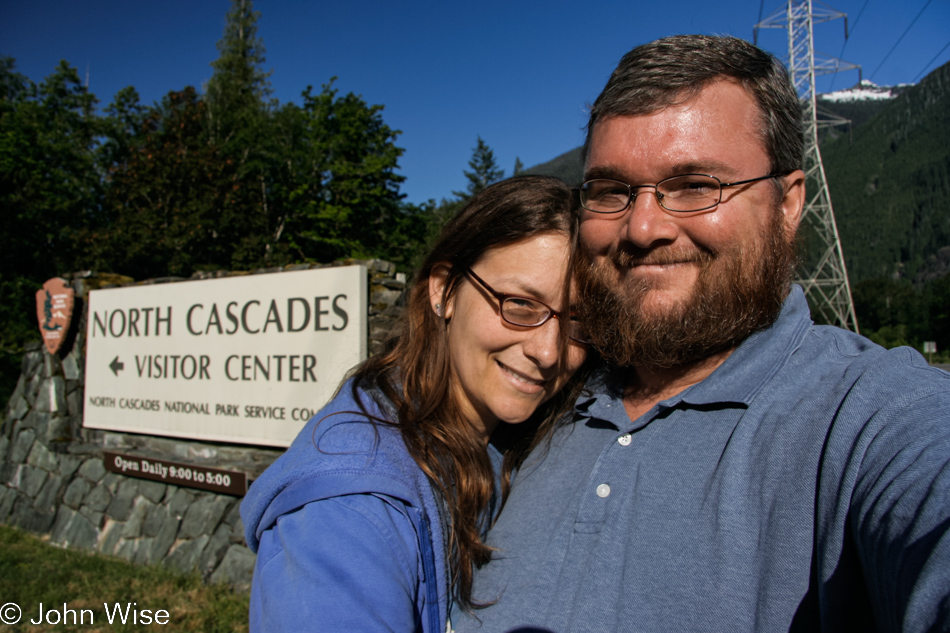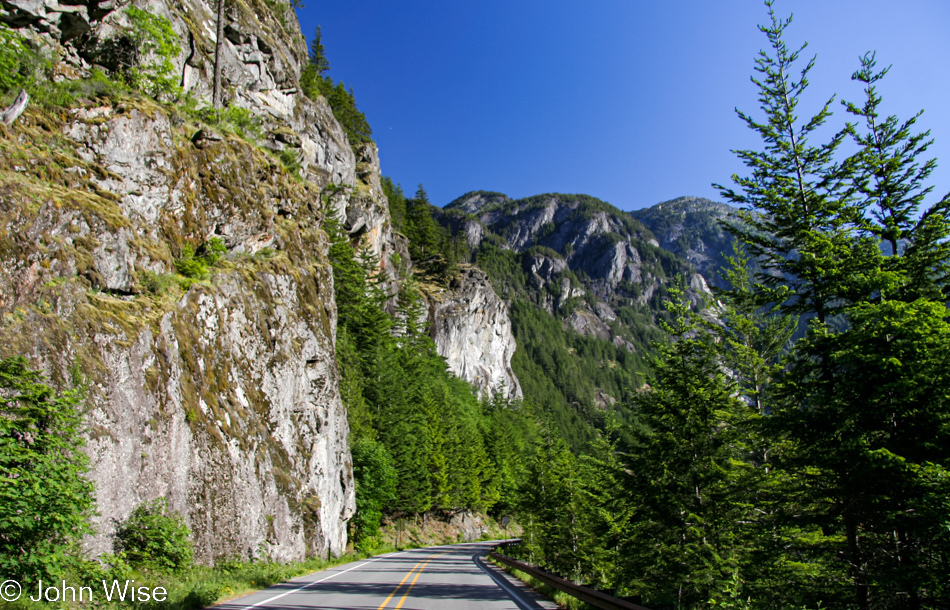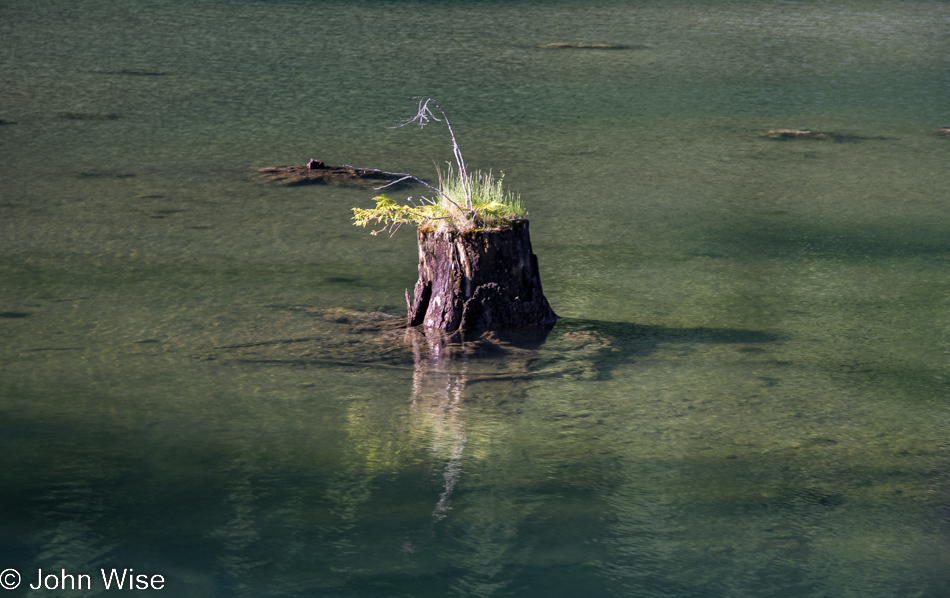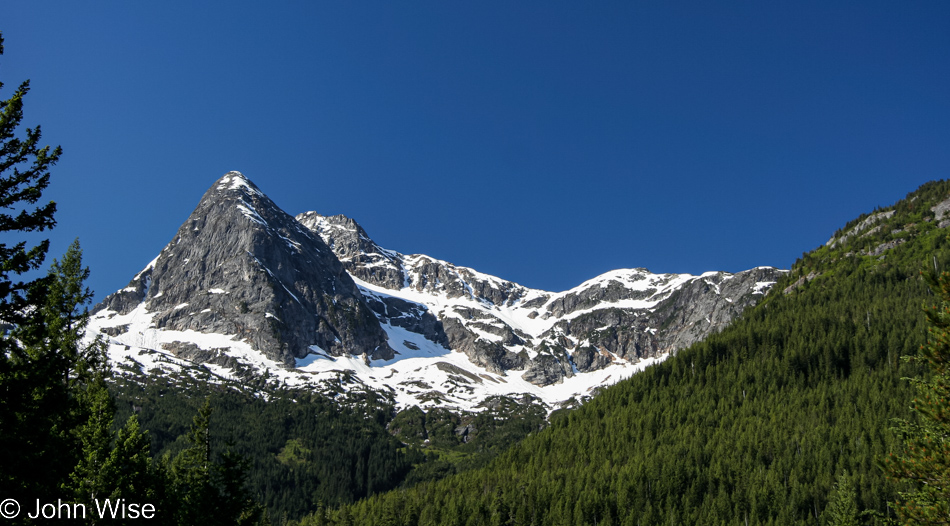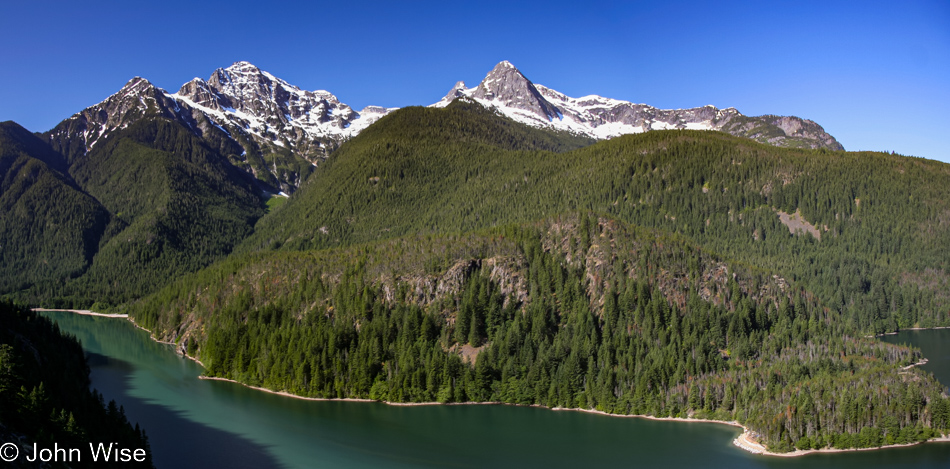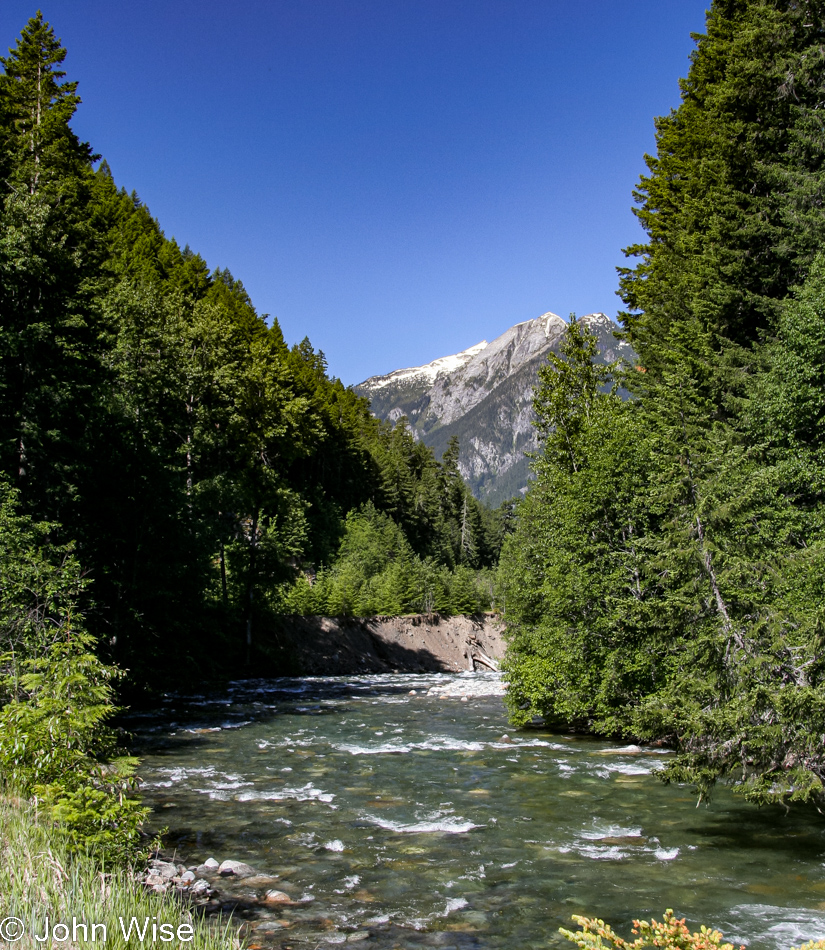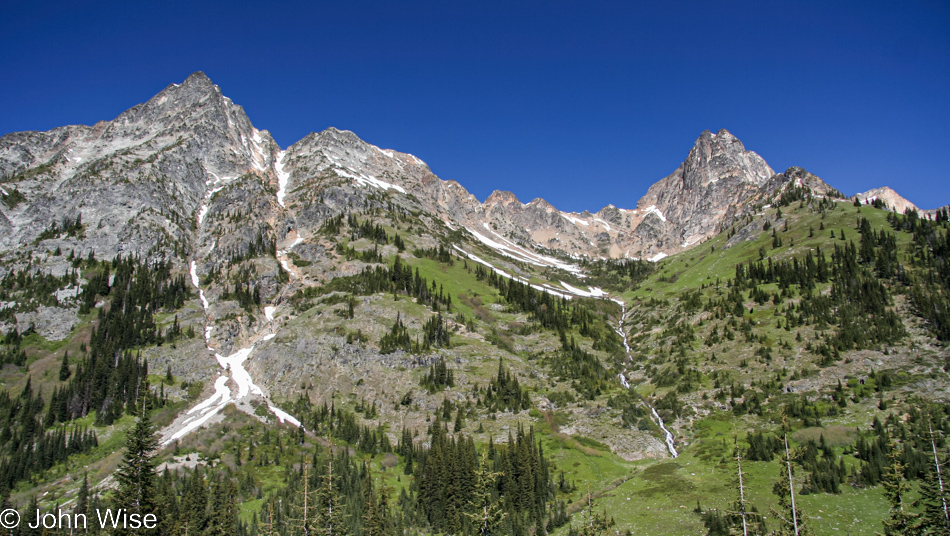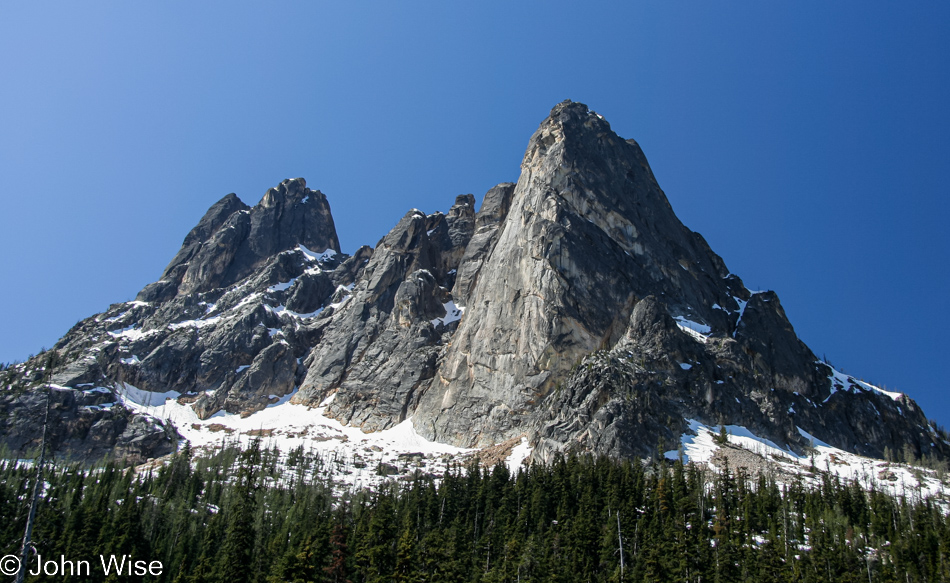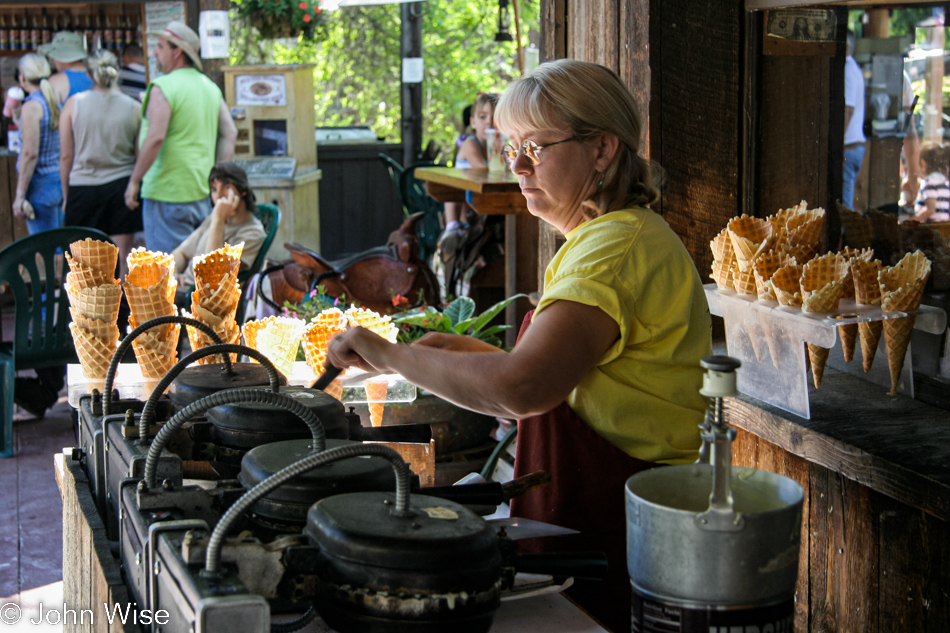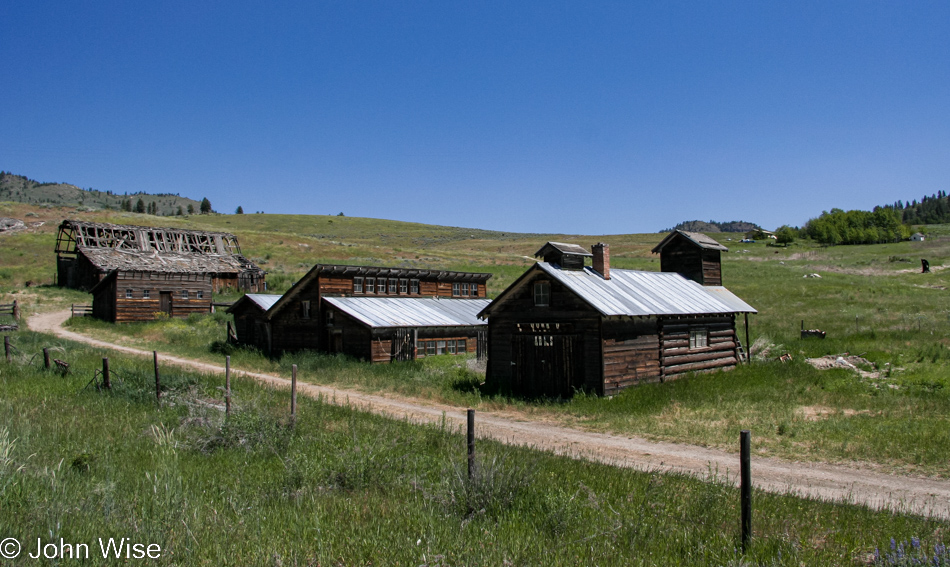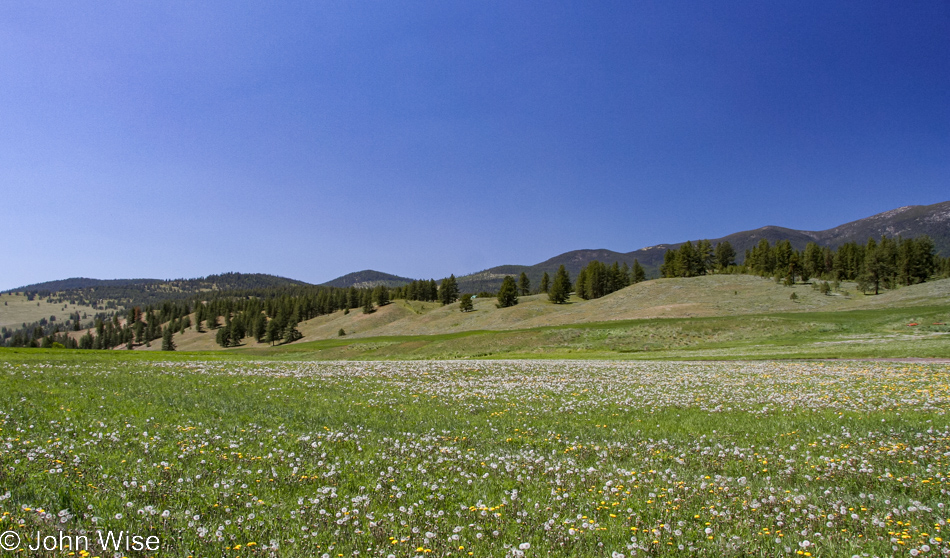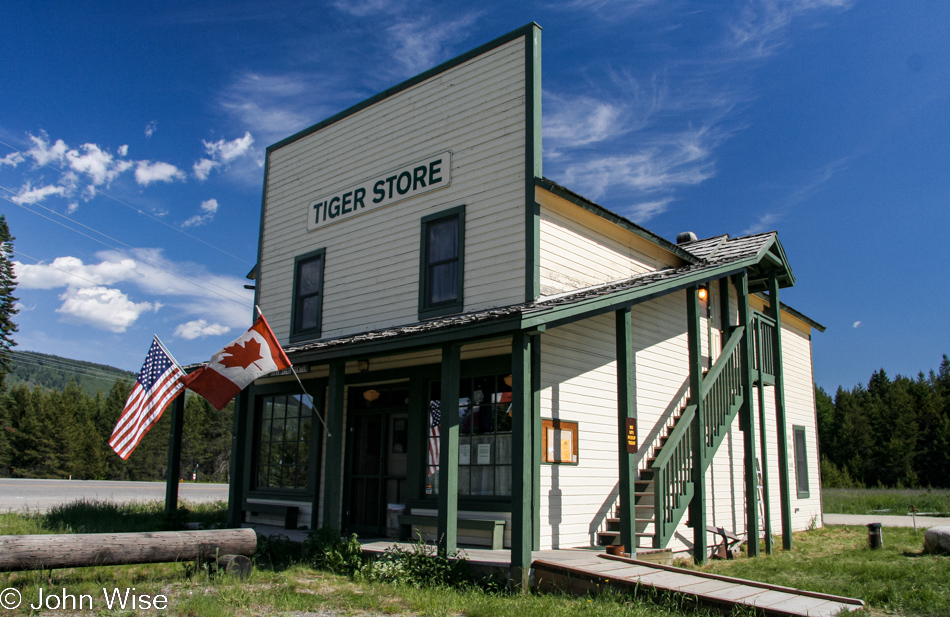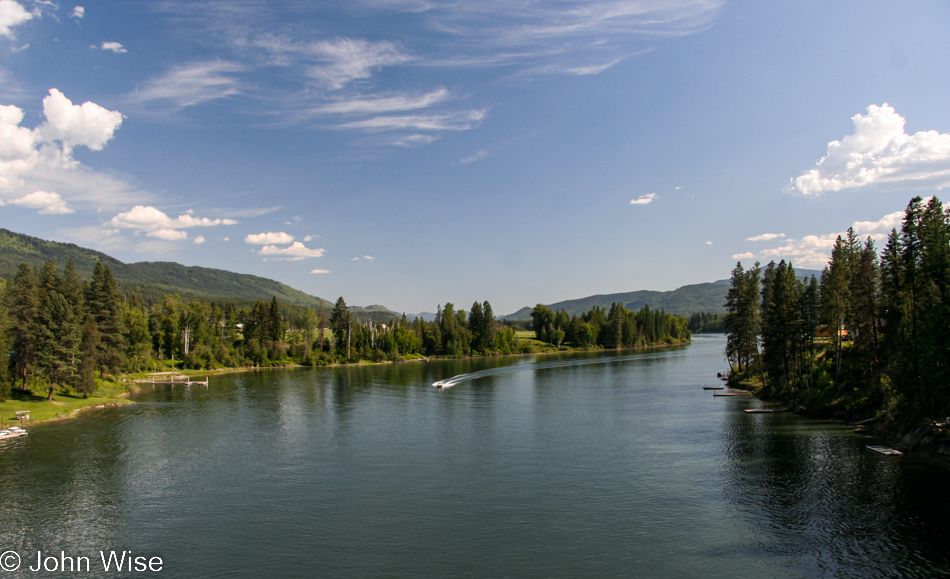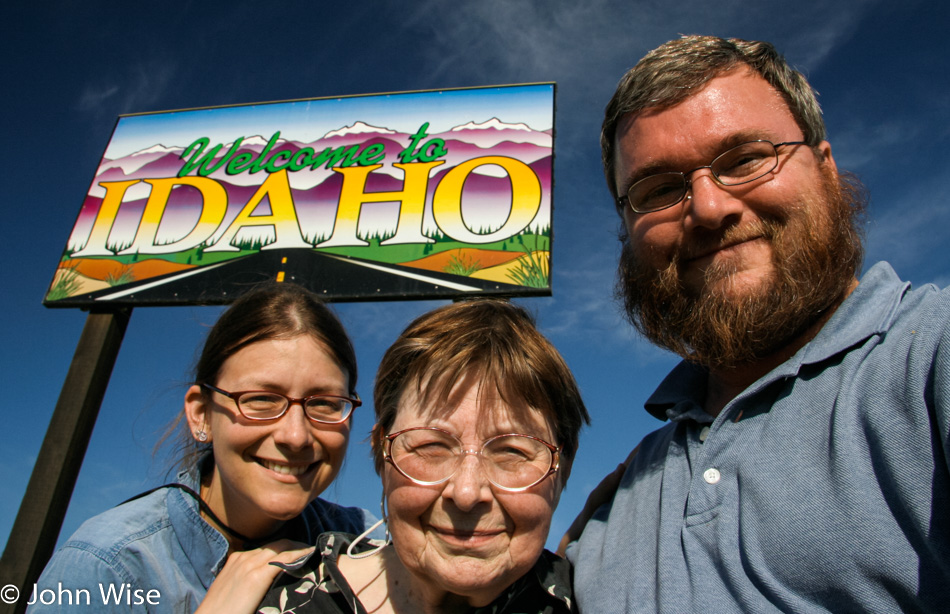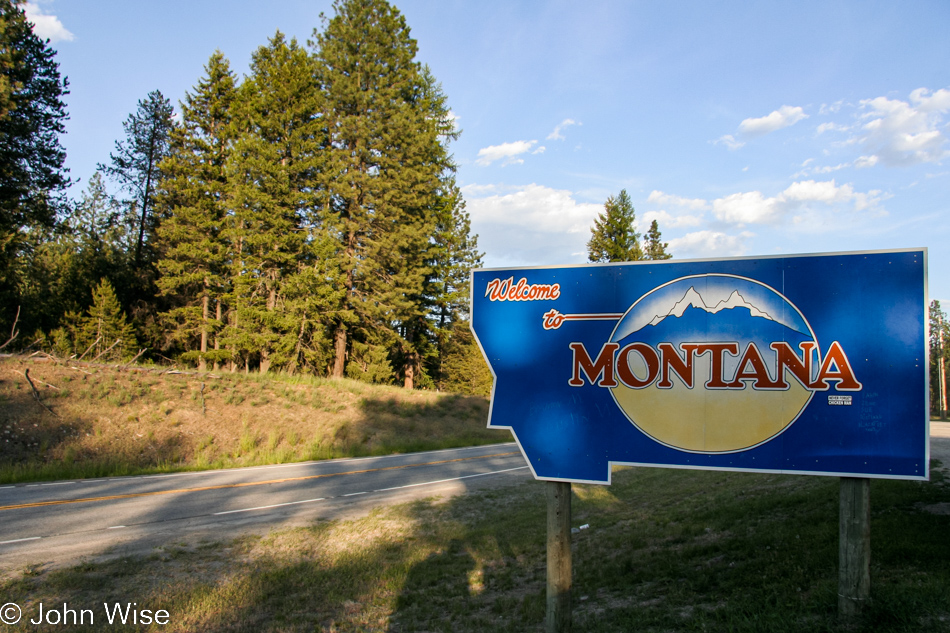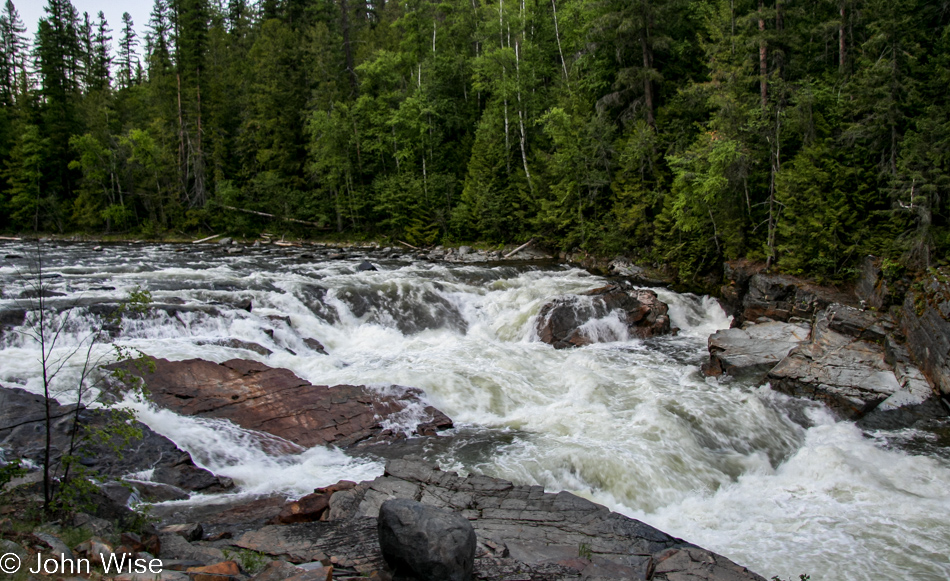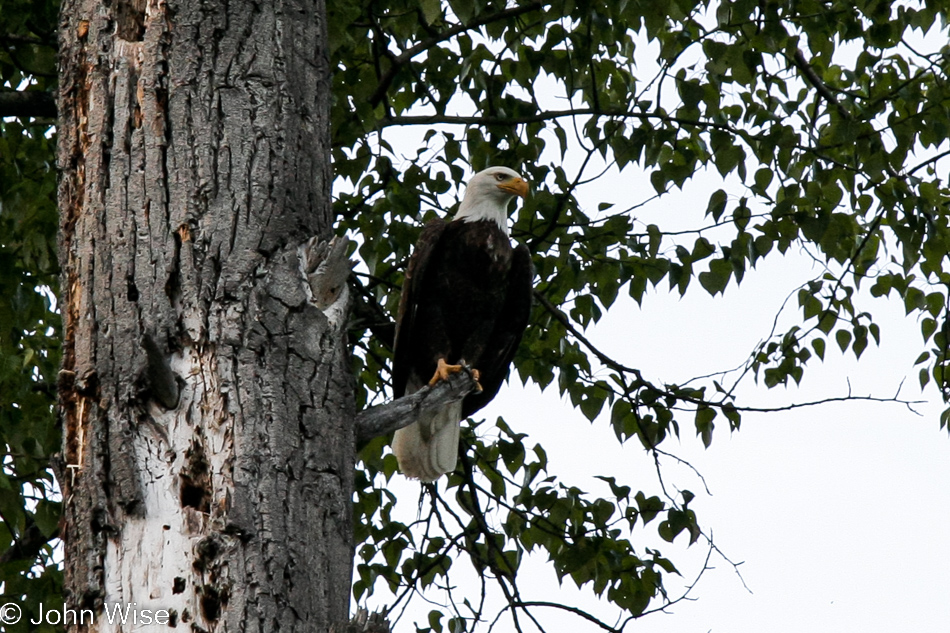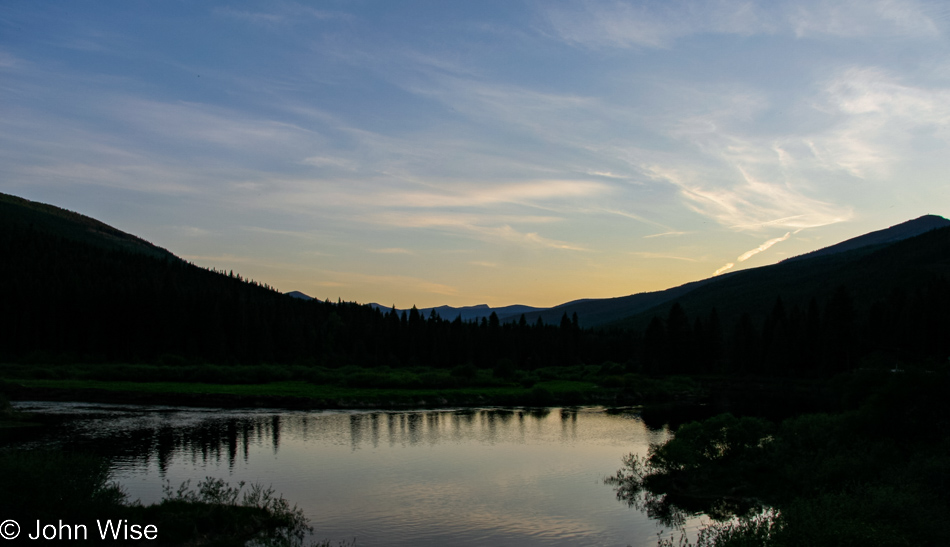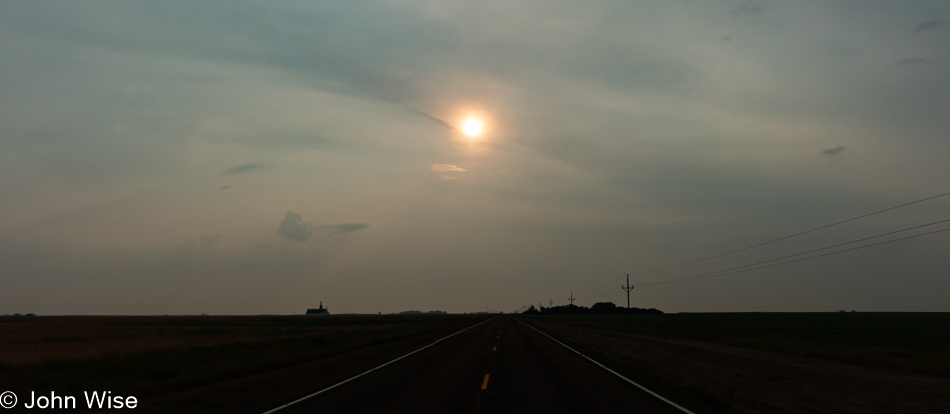
Scobey, we hardly knew you. The Daniels County Museum and Pioneer Town we drove by last night and that the locals raved about won’t be visited by us this trip, but here it is linked in my post, so we might stumble upon it again should we make it up here in the future. We had to be up and out early as, from this point on the map, more than 2,000 miles home had to be finished in four days.
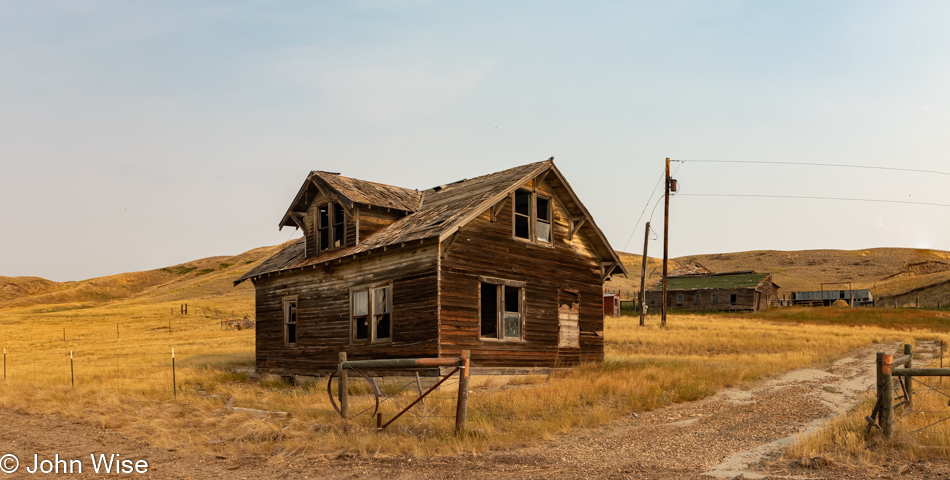
I hope we run out of abandoned homes eventually because they are time sinks but just look at this beauty.
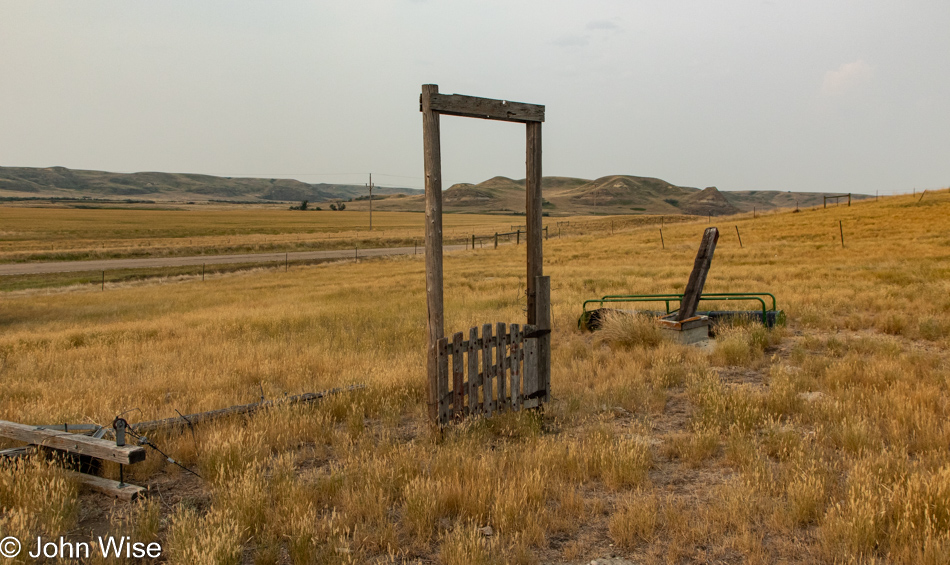
Whatever fence had been attached to this gate is now long gone, but I do find it intriguing that it’s here in the middle of the property, leading nowhere.

I’ll guestimate that this house was abandoned between 1965 and 1972 based on the old television that was shot dead somewhere in the past. Cable TV obviously wasn’t a thing yet, as the two tuners were used for VHF and UHF bands. My guess is that it’s black & white as there are no color controls visible, nor can I spot a door hiding any knobs. Color TV became mainstream in the mid-’60s.
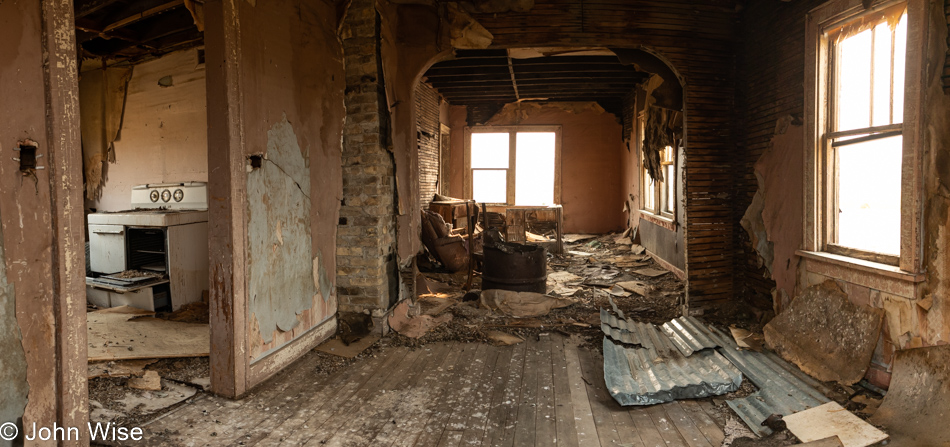
But then I started to reconsider after spotting a Zenith washing machine with a manual ringer attached, which appears to be from the mid to late 1940s, while that stove over in the kitchen might be an early 1950s model. I’m guessing that the cabinet in the photo below is a record player.

Finally, there’s a painted-over sign on the front of the house that I was able to manipulate with a bit of Photoshop until I could decipher that this Farm Bureau sign was offering a $200 reward for information about anyone tampering or destroying this property. Well, that program with a $200 reward appears to have run from about 1930 to 1969, so I’ll stick with my guestimation of when this property was abandoned.
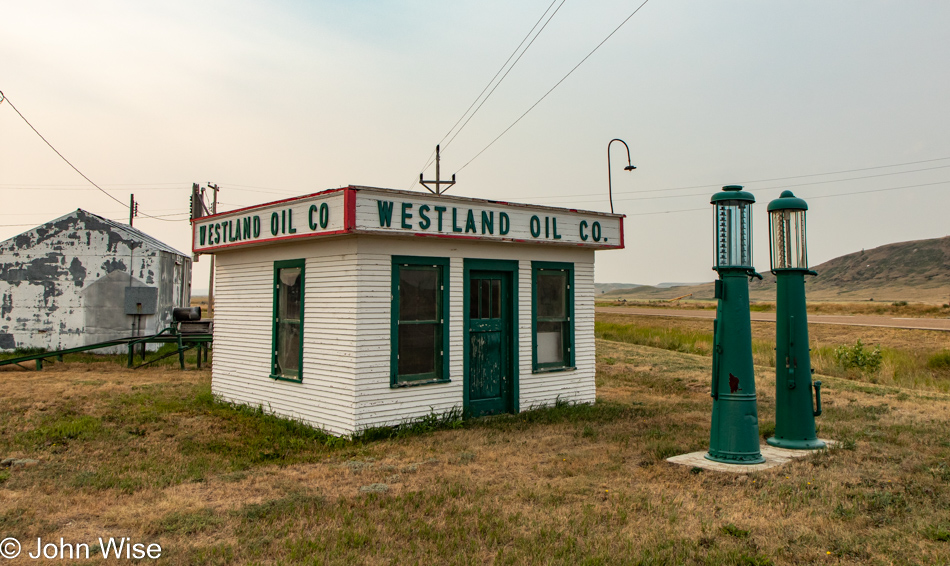
Another 50 miles east, we reach another ghost town. This one is called Redstone and is still in Montana. I say still because we were 45 minutes away from North Dakota.

Like St. Marie, this town is not totally deserted yet as there are some holding on to this remote corner, really out in the middle of nothing.
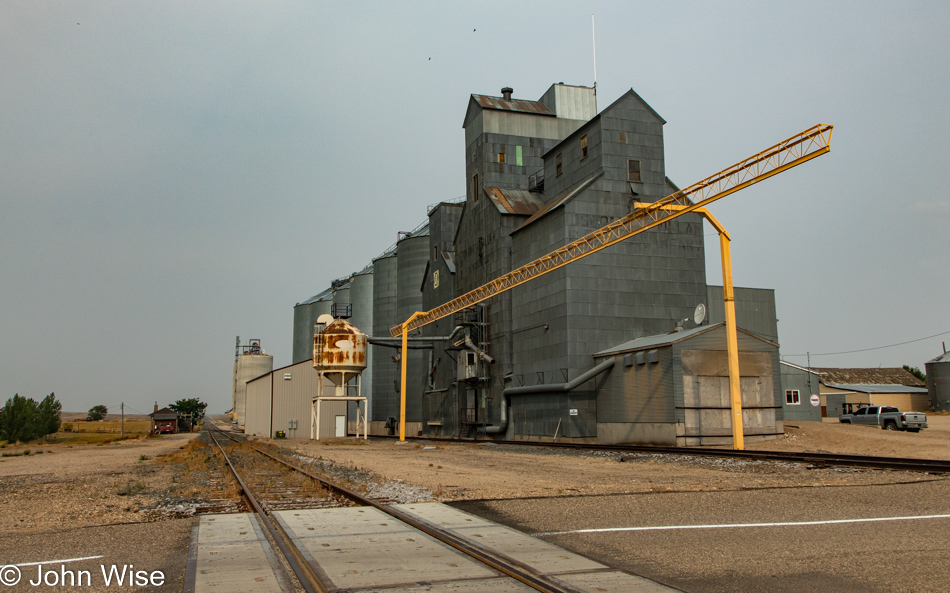
Westby, Montana, is our last stop in this state as we are about to enter…
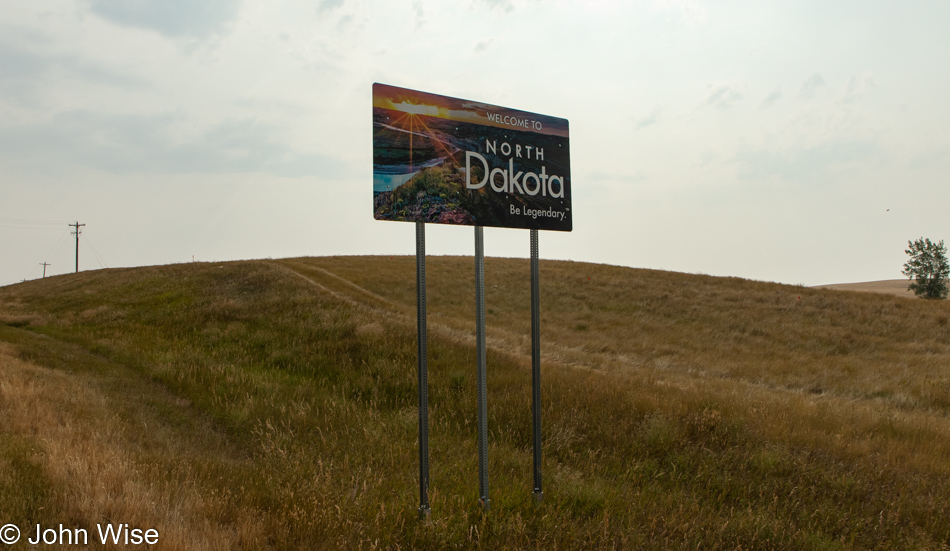
…North Dakota.
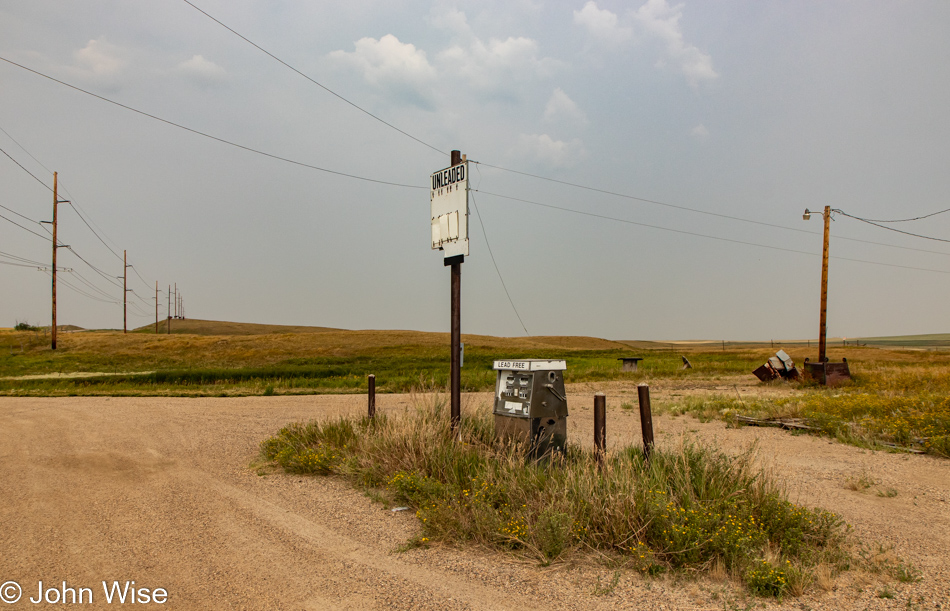
And this is where we’ve been ever since. We ran out of gas, and this station has been closed for a long time. Thanks, Google, for telling us that this was our next opportunity to fill our tank. The cafe on the other side of the pump is more bird sanctuary than a place to get a bite. If you somehow get this far in this entry and you’ve not seen us in a while, please send someone to this random spot along U.S. Route 5, east of the old Air Force facility in Fortuna, North Dakota, to save us. By the way, we don’t even have cell service out here so I can’t know that anyone will ever see this before we die.
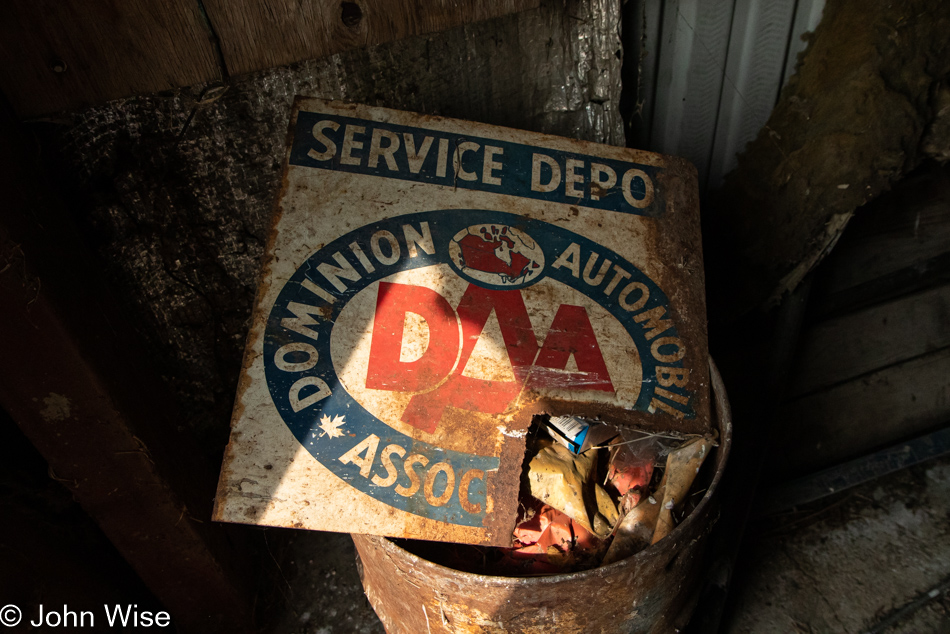
While we were out here waiting to be rescued, we visited the metal building next door and found that the padlock wasn’t locked, so of course, we opened the door to explore the rusting hulk. The brand-new snow plow thing in the back of the garage was of no interest, but this sign from the Dominion Automobile Association was cool. Maybe I should have noticed the maple leaf there on the sign, a viable clue to what I was photographing, but I had no idea that this was the Canadian version of AAA here in America.
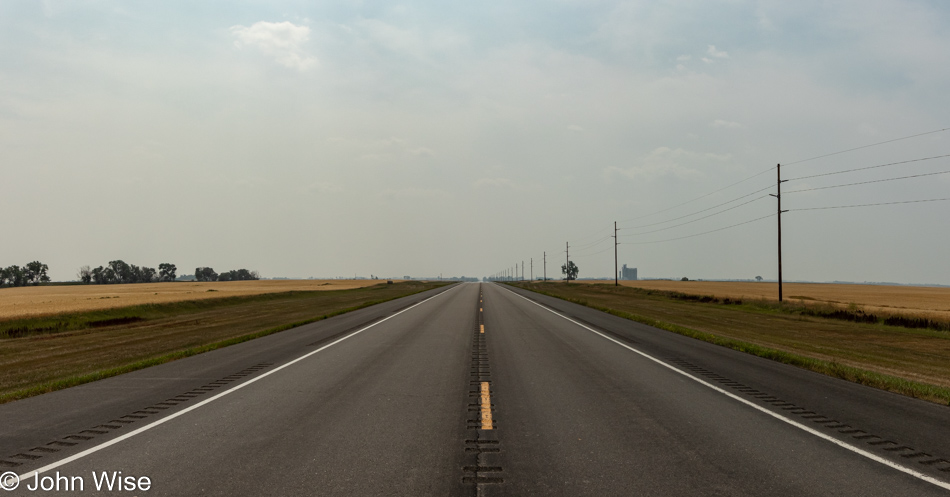
At the intersection of 93rd St NW and 27th Ave NW is the town of Renville, North Dakota, but calling it a “town” is being generous. A convenience store sits on one corner, and a grain silo on the adjacent corner. There is no town. What is here is U.S. Route 83, which runs from the Canadian border all the way down to Brownsville, Texas, for a total length of 1,885 miles or 3,033 kilometers. We are skipping the leg that runs northeast from here to the Canadian border, as the extra 31 miles each way will add an hour to our drive time today. With it being 1:00 p.m. already and another 353 miles ahead of us today, we are well aware that we can easily turn 5 hours of driving into 8 hours of dawdling.
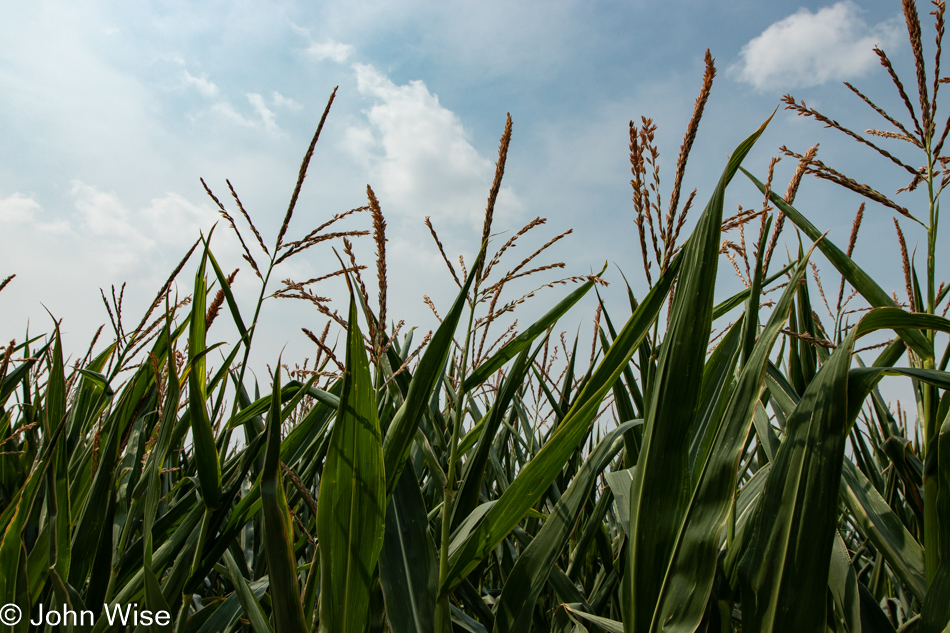
This photo of corn though cannot be considered wasting time as it feels obligatory to feature at least one image of corn porn, considering where we are here in the very middle of America.
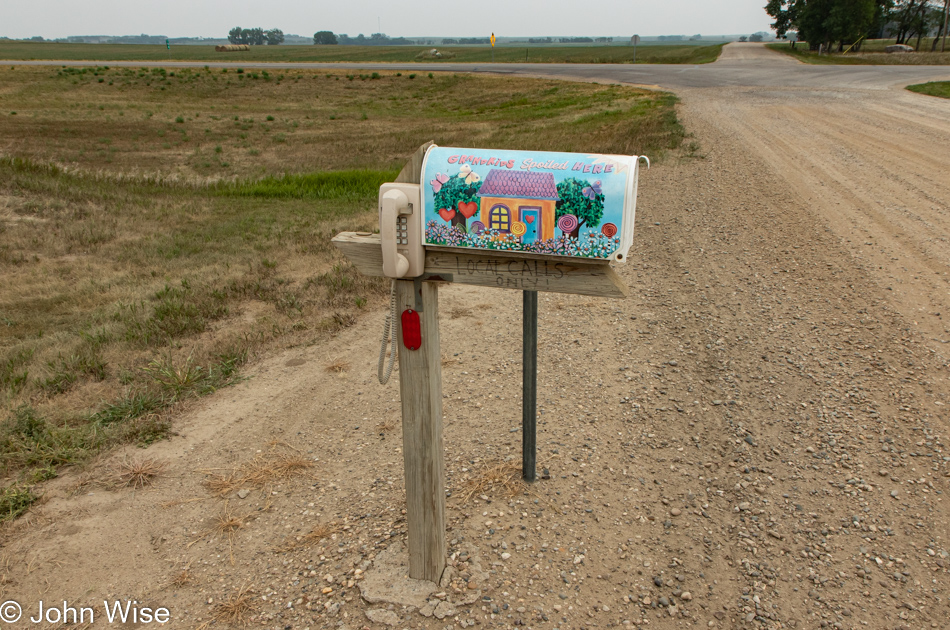
Okay, this can certainly be considered a moment of dawdling, but I just had to know if the phone worked. No, I didn’t need to know that because the fact is I pulled over to heed the call of nature, and the cool mailbox was a bonus I only saw after I stopped. After reading that I could only make local calls, I was minorly disappointed as I wanted to ring Caroline back in Phoenix, but imagine the anguish I felt when I learned that the phone didn’t work at all.
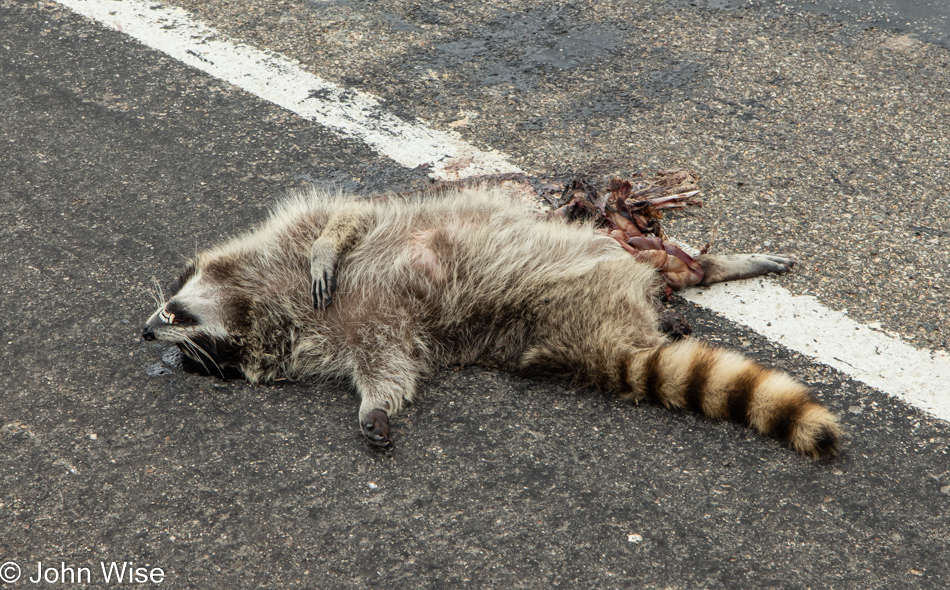
Had this unfortunate raccoon played it safe and stopped in Bismarck with Jessica and me at the Bearscat Bakehouse to pick up some yummy bearshit donuts, it might have stayed alive to tell the story like I am today. Enough making light of this poor animal’s sacrifice to the monsters of the road that tore off its foot and spilled its guts; sure, it’s an ugly and tragic photo, but this is what our need to be on roads does.
As a matter of fact, based on a 1993 study, over 130 million animals become roadkill every year in America, but that pales in comparison to the 32.5 trillion insect deaths we are responsible for. Interestingly, it seems we might be more effective killers than we know, as some studies suggest that those death numbers are going down which only means that we are having a noticeable impact on the amount of insects in our environment.
To paraphrase Pastor Martin Niemöller:
First, they killed the birds and squirrels with their cars, and I did not speak out—because I was not a bird, nor a squirrel.
Then they ran over the sheep and deer, and I did not speak out—because I was not an ungulate.
Then they splattered the bees, flies, grasshoppers, and butterflies on their grills and windshields, and I did not speak out—because I was not an insect.
Then the aliens hit me with their spaceship—and there was no one left to speak out for me.
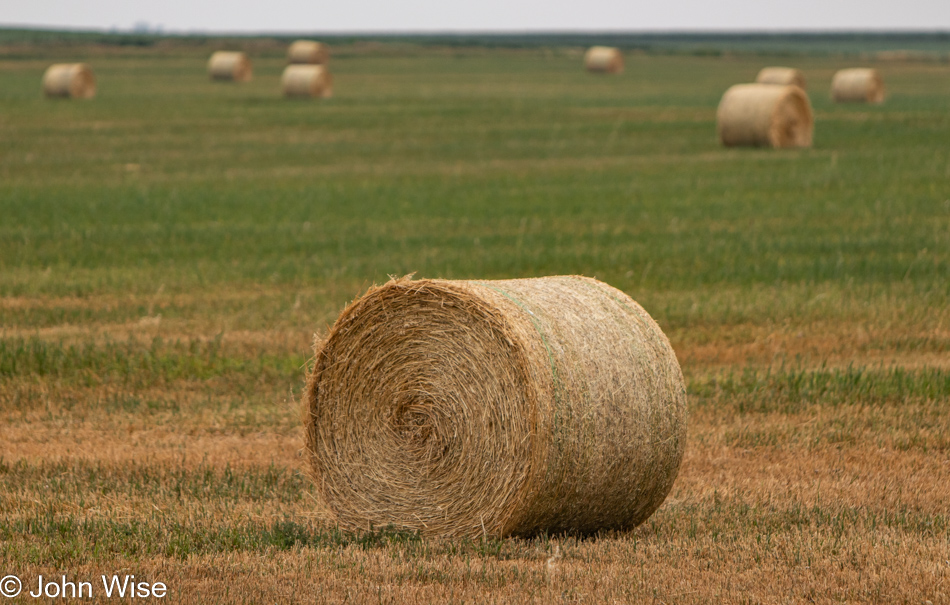
There will be no idyllic scenes of farmhands tossing hay bales on flatbed trucks out here today as these hay rolls can weigh as much as 1,700 pounds or about 770 kilos each. The golden age of hard work has been relegated to the machines, and that would be okay if it weren’t for the large segment of our population that is only about as smart as a 40-pound hay bale.

I remember how back in my day, I and about 1,000 hardworking young whippersnappers would hit the field with a 35-gallon basket strapped to our backs and we’d busy ourselves picking those sunflower seeds right out of the flower heads. At the end of the day, tired, with hands cramping from the delicate work, we’d sit around the pickup truck that was going to bring us back into town, and we’d try to guess how many seeds we’d picked. Sam Miller seemed to have a strange knack for being the closest, but how does a boy keep track of how many seeds he’d picked while we were singing those old ditties about bringing in the summer harvest of sunflower seeds? Maybe Sam wasn’t really singing but was closely paying attention to exactly how many seeds he’d picked instead.
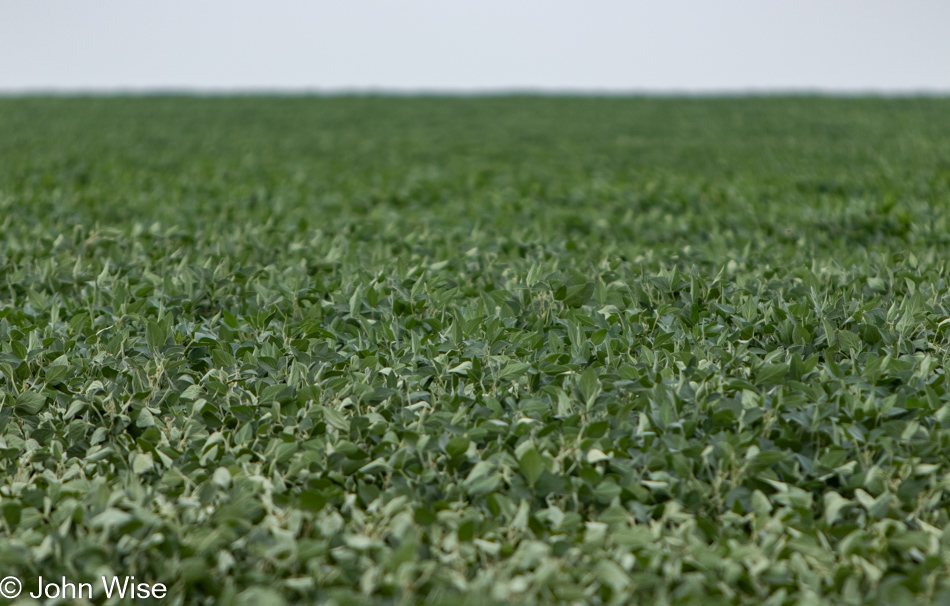
I remember how, back in my day, I would have to pick an entire field of beans ten times bigger than this all by myself…

…and then at night, we’d all gather around the television to watch the Lawrence Welk Show. We’d dance along to a polka or two as Myron Floren belted out the tunes on his accordion while Barbara Boylan danced up a storm with Bobby Burgess. Life was good…

…until the dark clouds of punk rock came along, and Black Flag, the Cramps, and the Circle Jerks disrupted the harmony of living as one with nature out here on the Great Plains. Before we knew it, many in our bucolic town were pogo dancing and singing about being a Human Fly: life was never the same again. Yep, that was back in 1978, and when 1982, Lawrence Welk and his Champagne Music Makers ended the last show with that old familiar Adios, Au Revoir, Auf Wiedersehen, I shed a quiet tear.

For a minute, I moved south, but to tell you the truth, it was much of the same. Sure, South Dakotans were more in tune with ska and British punk, but how much Madness, Clash, Buzzcocks, and Sex Pistols can a person listen to? It seemed like half the state was singing something about Homicide and slam dancing; where the hell did that come from?

Maybe you thought I would have something better to write about that might share our experience out on the vast, dusty, flat plains of the middle of America? Are you kidding? The mind wanders when there is nothing on the horizon. The land is blank, and animals are sacrificing themselves due to the tremendous boredom that comes with being in a place that hardly supports life.

We drove for hundreds of miles before we spotted even a tree. Sure, we could have gone west to Sturgis, but how would we be welcomed driving a Hyundai, carrying a computer, expensive cameras, and eating granola at an event that attracted over 400,000 bikers in leathers, drinking whiskey from “tailpipes” (if you know what I mean) and spitting in the eye of COVID?

So, we drove and drove, further and further south, as far as south would go. Whoa, is this Dorothy’s house? Just kidding, that’s tomorrow night in Liberal, Kansas, where nerds gather to celebrate the Wizard of Oz.

Have I ever told you the story of when we used to pick semechki for the gopniks over in Ukraine? We’d have to wear our best Adidas out in the field for the marketing material, but damn, did we have it good with such a hot market for sunflower seeds grown right here in South Dakota. Life was perfect out in the field, listening to those mixtapes of Теорія Ґвалту and their folk/ska songs that had us dancing in the fields…

…until the dark clouds of techno music came along, and we were hosting giant raves among the soybeans and corn, listening to trance as the DJ played well into the next day. As magic mushrooms replaced our staple crops we knew then that the likes of Lawrence Welk would never again grace the airwaves that once had made America great. Had Donald Trump really wanted to “Make America Great Again,” he’d have had us all drop some good acid and binge-watch all 1,065 episodes of that seminal Lawrence Welk show that defined our country’s greatest generation. As the sun and my heart set here on the plains, I brought up Bubbles in the Wine and remembered better times while sharing a tear with my daughter, who learned today just who her father really is.
